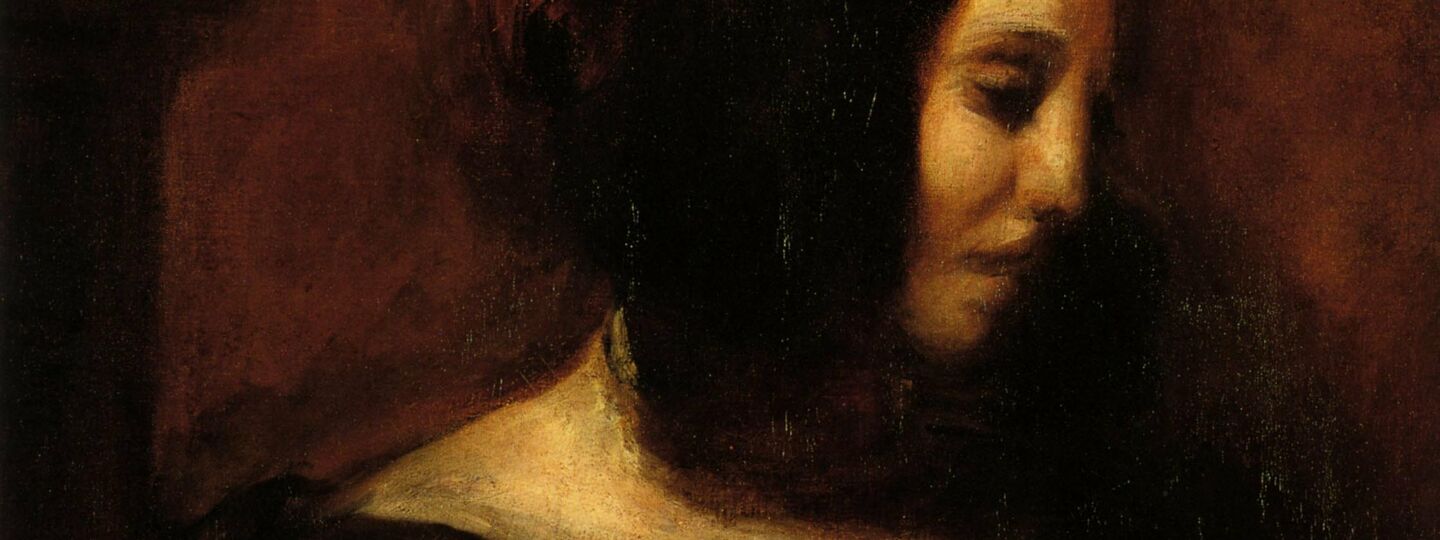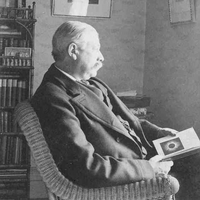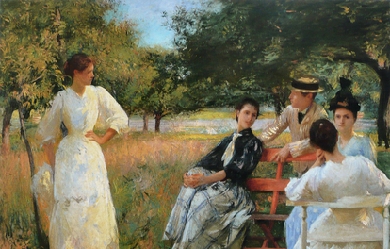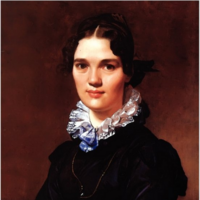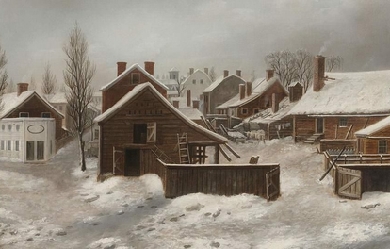
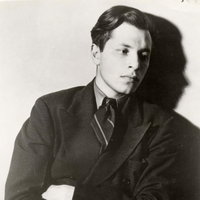
Delmore Schwartz (December 8, 1913– July 11, 1966) was an American poet and short story writer. Biography Schwartz was born in 1913 in Brooklyn, New York, where he also grew up. His parents, Harry and Rose, both Romanian Jews, separated when Schwartz was nine, and their divorce had a profound effect on him. In 1930, Schwartz’s father suddenly died at the age of 49. Though Harry had accumulated a good deal of wealth from his dealings in the real estate business, Delmore only inherited a small amount of that money as the result of the shady dealings of the executor of Harry’s estate. According to Schwartz’s biographer, James Atlas, "Delmore continued to hope that he would eventually receive his legacy [even] as late as 1946.” Schwartz spent time at Columbia University and the University of Wisconsin before finally graduating from New York University in 1935. He then did some graduate work in philosophy at Harvard University, where he studied with the philosopher Alfred North Whitehead, but left and returned to New York without receiving a degree. Soon thereafter, he made his parents’ disastrous marriage the subject of his most famous short story, “In Dreams Begin Responsibilities”, which was published in 1937 in the first issue of Partisan Review. This story and other short stories and poems became his first book, also entitled In Dreams Begin Responsibilities, published in 1938 when Schwartz was only 25 years old. The book was well received, and made him a well-known figure in New York intellectual circles. His work received praise from some of the most respected people in literature, including T. S. Eliot, William Carlos Williams, and Ezra Pound, and Schwartz was considered one of the most gifted and promising young writers of his generation. According to James Atlas, Allen Tate responded to the book by stating that "[Schwartz’s] poetic style marked 'the first real innovation we’ve had since Eliot and Pound.'” In 1937, he also married Gertrude Buckman, a book reviewer for Partisan Review, whom he divorced after six years. For the next couple of decades, he continued to publish stories, poems, plays, and essays, and edited the Partisan Review from 1943 to 1955, as well as The New Republic. Schwartz was deeply upset when his epic poem, Genesis, which he published in 1943 and hoped would stand alongside other Modernist epics like The Waste Land and The Cantos as a masterpiece, received a negative critical response. Later, in 1948, he married the much younger novelist, Elizabeth Pollet. This relationship also ended in divorce. In 1959, he became the youngest-ever recipient of the Bollingen Prize, awarded for a collection of poetry he published that year, Summer Knowledge: New and Selected Poems. His poetry differed from his stories in that it was less autobiographical and more philosophical. His verse also became increasingly abstract in his later years. He taught creative writing at six universities, including Syracuse, Princeton, and Kenyon College. In addition to being known as a gifted writer, Schwartz was considered a great conversationalist and spent much time entertaining friends at the White Horse Tavern in New York City. Much of Schwartz’s work is notable for its philosophical and deeply meditative nature, and the literary critic, R.W. Flint, wrote that Schwartz’s stories were “the definitive portrait of the Jewish middle class in New York during the Depression.” In particular, Schwartz emphasized the large divide that existed between his generation (which came of age during the Depression) and his parents’ generation (who had often come to the United States as first-generation immigrants and whose idealistic view of America differed greatly from his own). In another take on Schwartz’s fiction, Morris Dickstein wrote that “Schwartz’s best stories are either poker-faced satirical takes on the bohemians and outright failures of his generation, as in 'The World Is a Wedding’ and 'New Year’s Eve,' or chronicles of the distressed lives of his parents’ generation, for whom the promise of American life has not panned out.” Schwartz was unable to repeat or build on his early successes later in life as a result of alcoholism and mental illness, and his last years were spent in reclusion at the Columbia Hotel in New York City. In fact, Schwartz was so isolated from the rest of the world that when he died on July 11, 1966, at age 52, of a heart attack, two days passed before his body was identified at the morgue. Schwartz was interred at Cedar Park Cemetery, in Emerson, New Jersey. A selection of his short stories was published posthumously in 1978 under the title In Dreams Begin Responsibilities and Other Stories and was edited by James Atlas who had written a biography of Schwartz, Delmore Schwartz: The Life of An American Poet, two years earlier. Later, another collection of Schwartz’s work, Screeno: Stories & Poems, was published in 2004. This collection contained fewer stories than In Dreams Begin Responsibilities and Other Stories but it also included a selection of some of Schwartz’s best-known poems like “The Heavy Bear Who Goes With Me” and “In The Naked Bed, In Plato’s Cave”. Screeno also featured an introduction by the fiction writer and essayist, Cynthia Ozick. Tributes to Schwartz One of the earliest well-known tributes to Schwartz came from Schwartz’s friend, fellow poet Robert Lowell, who published the poem “To Delmore Schwartz” in 1959 (while Schwartz was still alive) in the book Life Studies. In it Lowell reminisces about the time that the two poets lived together in Cambridge, Massachusetts in 1946, writing that they were "underseas fellows, nobly mad,/ we talked away our friends.” One year following Schwartz’s death, in 1967, his former student at Syracuse University, the rock musician Lou Reed, dedicated his song “European Son” to Schwartz (although the lyrics themselves made no direct reference to Schwartz). Then, in 1968, Schwartz’s friend and peer, fellow poet John Berryman, dedicated his book His Toy, His Dream, His Rest “to the sacred memory of Delmore Schwartz,” including 12 elegiac poems about Schwartz in the book. In "Dream Song #149," Berryman wrote of Schwartz, In the brightness of his promise, unstained, I saw him thro’ the mist of the actual blazing with insight, warm with gossip thro’ all our Harvard years when both of us were just becoming known I got him out of a police-station once, in Washington, the world is tref and grief too astray for tears. The most ambitious literary tribute to Schwartz came in 1975 when Saul Bellow, a one-time protégé of Schwartz’s, published his Pulitzer Prize-winning novel Humboldt’s Gift which was based on his relationship with Schwartz. Although the character of Von Humboldt Fleischer is Bellow’s portrait of Schwartz during Schwartz’s declining years, the book is actually a testament to Schwartz’s lasting artistic influence on Bellow. Although he is a genius, the Fleischer/Schwartz character struggles financially and has trouble finding a secure university teaching position. He becomes increasingly paranoid and jealous of the success of the main character, Charlie Citrine (who is based upon Bellow himself), becoming isolated and descending into alcoholism and madness. Lou Reed’s 1982 album The Blue Mask included his second Schwartz homage with the song “My House”. The song is a more direct tribute to Schwartz than the above-mentioned “European Son” in that the lyrics of “My House” are about Reed’s relationship with Schwartz. In the song, Reed writes that Schwartz “was the first great man that I ever met”. Much later, in the June 2012 issue of Poetry magazine, Lou Reed published a short prose tribute to Schwartz entitled “O Delmore How I Miss You.” In the piece, Reed quotes and references a number of Schwartz’s short stories and poems including “In Dreams Begin Responsibilities,” “The World is a Wedding,” and “The Heavy Bear Who Goes With Me.” “O Delmore How I Miss You” was re-published as the preface to the New Directions 2012 reissue of Schwartz’s posthumously published story collection In Dreams Begin Responsibilities and Other Stories. In John A. McDermott’s poetry collection, The Idea of God in Tennessee, he includes a poem written for and referencing Schwartz, titled The Poet’s Body, Unclaimed in the Manhattan Morgue. The poem makes mention of Schwartz’s writing, daily habits, and death. Cultural references Scott Spencer uses the final six lines of Schwartz’s poem “I Am a Book I Neither Wrote nor Read” as an epigraph for his National Book Award nominated novel, Endless Love. The words “endless love” are the final two words of that poem. In the film Star Trek Generations, the villain Tolian Soran quotes from Schwartz’s poem, “Calmly We Walk Through This April’s Day”, telling Captain Jean-Luc Picard, “They say time is the fire in which we burn.” Playwright Philip Ridley uses the same line as one of the epigraphs for his 2012 play Shivered. The German symphonic metal band Agathodaimon uses the line “Time is the fire” as the title to one of the songs on the album Phoenix. Grant Morrison named a story in his DC Comics miniseries Multiversity, Pax Americana, after the same line as well as quoting it on the cover. In 1996, Donald Margulies wrote the play Collected Stories, in which the aging writer and teacher Ruth Steiner (a fictional character) reveals that she once had a great affair in her youth with Delmore Schwartz in Greenwich Village (during the period of time when Schwartz was in declining health from alcoholism and mental illness) to her young student, Lisa. Lisa then controversially uses the affair revelation as the basis for a successful novel. The play was produced twice off-Broadway and once on Broadway. Published works The Poets’ Pack (Rudge, New York, 1932), school anthology including four poems by Schwartz. In Dreams Begin Responsibilities. (New Directions, 1938), ISBN 978-0-8112-0680-8, a collection of short stories and poems. Shenandoah and Other Verse Plays (New Directions, 1941). Genesis: Book One (New Directions, 1943), book-length poem about the growth of a human being. The World Is a Wedding (New Directions, 1948), a collection of short stories. Vaudeville for a Princess and Other Poems (New Directions, 1950). Summer Knowledge: New and Selected Poems. (New Directions, 1959; reprinted 1967), ISBN 978-0-8112-0191-9. Successful Love and Other Stories (Corinth Books, 1961; Persea Books, 1985), ISBN 978-0-89255-094-4 Published posthumously Donald Dike, David Zucker (ed.) Selected Essays (1970; University of Chicago Press, 1985), ISBN 978-0-226-74214-4 In Dreams Begin Responsibilities and Other Stories (New Directions, 1978), a short story collection. Letters of Delmore Schwartz, ed. Robert Phillips (1984) ISBN 978-0-86538-048-6 The Ego Is Always at the Wheel: Bagatelles, ed. Robert Phillips (1986), a collection of humorously whimsical short essays Last and Lost Poems. ed. Robert Phillips (New Directions, 1989) ISBN 978-0-8112-1096-6 Screeno: Stories & Poems. New Directions. 2004. ISBN 978-0-8112-1573-2. References Wikipedia—https://en.wikipedia.org/wiki/Delmore_Schwartz
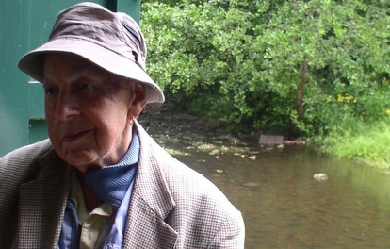
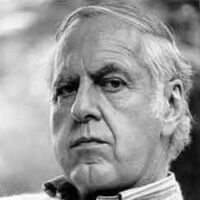
William Meredith was born in New York City on January 9, 1919. He attended the Lenox School in Massachusetts and in 1940 graduated from Princeton University with an A.B. in English, Magna Cum Laude. His senior thesis was on the work of Robert Frost, a major influence for Meredith throughout his career. He worked briefly as a reporter for The New York Times before joining the U.S. Army Air Force in 1941. In 1942 he served as a carrier pilot for the U.S. Navy, achieving the rank of lieutenant. During his service, Meredith's first book of poems, Love Letter from an Impossible Land (1944), was chosen by Archibald MacLeish for the Yale Series of Younger Poets. For the next few years he taught English at Princeton University as Woodrow Wilson Fellow in Writing and Resident Fellow in Creative Writing while still in the U.S. Navy Reserves. Won the Pulitzer Prize for poetry.
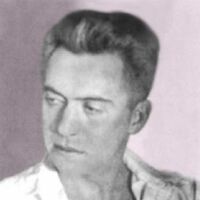
Born on July 21, 1899, in Garrettsville, Ohio, Harold Hart Crane was a highly anxious and volatile child. He began writing verse in his early teenage years, and though he never attended college, read regularly on his own, digesting the works of the Elizabethan dramatists and poets—Shakespeare, Marlowe, and Donne—and the nineteenth-century French poets—Vildrac, Laforgue, and Rimbaud. His father, a candy manufacturer, attempted to dissuade him from a career in poetry, but Crane was determined to follow his passion to write. Living in New York City, he associated with many important figures in literature of the time, including Allen Tate, Katherine Anne Porter, E. E. Cummings, and Jean Toomer, but his heavy drinking and chronic instability frustrated any attempts at lasting friendship. An admirer of T. S. Eliot, Crane combined the influences of European literature and traditional versification with a particularly American sensibility derived from Walt Whitman. His major work, the book-length poem, The Bridge, expresses in ecstatic terms a vision of the historical and spiritual significance of America. Like Eliot, Crane used the landscape of the modern, industrialized city to create a powerful new symbolic literature. Hart Crane committed suicide in 1932, at the age of thirty-three, by jumping from the deck of a steamship sailing back to New York from Mexico. A SELECTED BIBLIOGRAPHY Poetry The Complete Poems and Selected Letters and Prose (1966) The Bridge (1930) White Buildings (1926) Prose Letters (1952) References Poets.org – http://www.poets.org/poet.php/prmPID/233
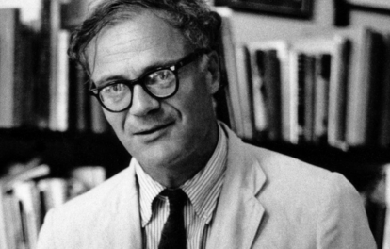
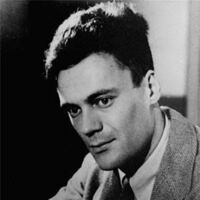
In 1917, Robert Lowell was born into one of Boston's oldest and most prominent families. He attended Harvard College for two years before transferring to Kenyon College, where he studied poetry under John Crowe Ransom and received an undergraduate degree in 1940. He took graduate courses at Louisiana State University where he studied with Robert Penn Warren and Cleanth Brooks. His first and second books, Land of Unlikeness (1944) and Lord Weary's Castle (for which he received a Pulitzer Prize in 1947, at the age of thirty), were influenced by his conversion from Episcopalianism to Catholicism and explored the dark side of America's Puritan legacy. Under the influence of Allen Tate and the New Critics, he wrote rigorously formal poetry that drew praise for its exceptionally powerful handling of meter and rhyme. Lowell was politically involved—he became a conscientious objector during the Second World War and was imprisoned as a result, and actively protested against the war in Vietnam—and his personal life was full of marital and psychological turmoil. He suffered from severe episodes of manic depression, for which he was repeatedly hospitalized. Partly in response to his frequent breakdowns, and partly due to the influence of such younger poets as W. D. Snodgrass and Allen Ginsberg, Lowell in the mid-fifties began to write more directly from personal experience, and loosened his adherence to traditional meter and form. The result was a watershed collection, Life Studies (1959), which forever changed the landscape of modern poetry, much as Eliot's The Waste Land had three decades before. Considered by many to be the most important poet in English of the second half of the twentieth century, Lowell continued to develop his work with sometimes uneven results, all along defining the restless center of American poetry, until his sudden death from a heart attack at age 60. Robert Lowell served as a Chancellor of The Academy of American Poets from 1962 until his death in 1977. Poetry Land of Unlikeness (1944) Lord Weary's Castle (1946) Poems, 1938-1949 (1950) The Mills of the Kavanaughs (1951) Life Studies (1959) Imitations (1961) For the Union Dead (1964) Selected Poems (1965) Near the Ocean (1967) The Voyage and Other Versions of Poems by Baudelaire (1968) Notebooks, 1967-1968 (1969) The Dolphin (1973) For Lizzie and Harriet (1973) History (1973) Selected Poems (1976) Day by Day (1977) Prose The Collected Prose (1987) Anthology Phaedra (1961) Prometheus Bound (1969) Drama The Old Glory (1965) References Poets.org - www.poets.org/poet.php/prmPID/10
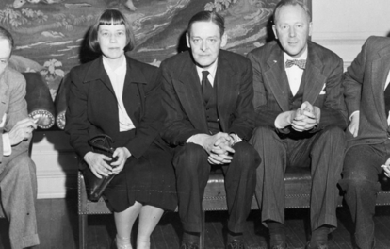
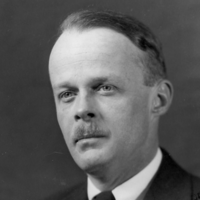
John Orley Allen Tate (November 19, 1899– February 9, 1979) was an American poet, essayist, social commentator, and Poet Laureate Consultant in Poetry to the Library of Congress from 1943 to 1944. Life Early years Tate was born near Winchester, Kentucky, to John Orley Tate, a businessman, and Eleanor Parke Custis Varnell. In 1916 and 1917 Tate studied the violin at the Cincinnati Conservatory of Music. Vanderbilt University, Kenyon College and The Fugitives He began attending Vanderbilt University in 1918, where he met fellow poet Robert Penn Warren. Warren and Tate were invited to join an informal literary group of young Southern poets under the leadership of John Crowe Ransom; the group were known as the Fugitives. Tate contributed to the group’s magazine The Fugitive. The aim of the group, according to the critic J. A. Bryant, was "to demonstrate that a group of southerners could produce important work in the medium [of poetry], devoid of sentimentality and carefully crafted," and they wrote in the formalist tradition that valued the skillful use of meter and rhyme. Tate also joined Ransom to teach at Kenyon College in Gambier, Ohio. Some of his notable students there included the poets Robert Lowell and Randall Jarrell. Lowell’s early poetry was particularly influenced by Tate’s formalist brand of Modernism. 1920s In 1924, Tate moved to New York City where he met poet Hart Crane, with whom he had been exchanging correspondence for some time. Over a four-year period, he worked freelance for The Nation, contributed to the Hound & Horn, Poetry magazine, and others. To make ends meet, he worked as a janitor. (Some years later, he would also contribute articles to the conservative National Review.) During a summer visit with the poet Robert Penn Warren in Kentucky, he began a relationship with writer Caroline Gordon. The two lived together in Greenwich Village, but moved to “Robber Rocks”, a house in Patterson, New York, with friends Slater Brown and his wife Sue, Hart Crane, and Malcolm Cowley. Tate married Gordon in New York in May 1925. Their daughter Nancy was born in September. In 1928, along with others New York City friends, he went to Europe. In London, he visited with T. S. Eliot, whose poetry and criticism he greatly admired, and he also visited Paris. In 1928, Tate published his first book of poetry, Mr. Pope and Other Poems, which contained his most famous poem, “Ode to the Confederate Dead” (not to be confused with “Ode to the Confederate Dead at Magnolia Cemetery” by the Civil War poet Henry Timrod). That same year, Tate also published a biography Stonewall Jackson: The Good Soldier. Just before leaving for Europe in 1928, Tate described himself to John Gould Fletcher as “an enforced atheist”. He later told Fletcher, “I am an atheist, but a religious one—which means that there is no organization for my religion.” He regarded secular attempts to develop a system of thought for the modern world as misguided. “Only God,” he insisted, “can give the affair a genuine purpose.” In his essay “The Fallacy of Humanism” (1929), he criticized the New Humanists for creating a value system without investing it with any identifiable source of authority. “Religion is the only technique for the validation of values,” he wrote. Although he was attracted to Roman Catholicism, he deferred converting. Louis D. Rubin, Jr. observes that Tate may have waited “because he realized that for him at this time it would be only a strategy, an intellectual act”. In 1929, Tate published a second biography Jefferson Davis: His Rise and Fall. 1930s After two years abroad, he returned to the United States, and in 1930 was back in Tennessee. Here he took up residence in an antebellum mansion with an 85-acre estate attached, that had been bought for him by one of his brothers, “who had made a lot of northern money out of coal.” He resumed his senior position with the Fugitives. Along with fellow Fugitives, Warren and Ransom, as well as nine other Southern writers, Tate also joined the conservative political group known as the Southern Agrarians. The group was made up of 12 members who published essays on their political philosophy in the book I’ll Take My Stand published in 1930. Tate contributed the essay, “Remarks on the Southern Religion” to I’ll Take My Stand. This book was followed in 1938 by Who Owns America?, the Southern Agrarians’ response to The New Deal. During this time, Tate also became the de facto associate editor of The American Review, which was published and edited by Seward Collins. Tate believed The American Review could popularize the work of the Southern Agrarians. He objected to Collins’s open support of Fascists Benito Mussolini and Adolf Hitler, and condemned fascism in an article in The New Republic in 1936. Much of Tate’s major volumes of poetry were published in the 1930s, and the scholar David Havird describes this publication history in poetry as follows: By 1937, when he published his first Selected Poems, Tate had written all of the shorter poems upon which his literary reputation came to rest. This collection—which brought together work from two recent volumes, Poems: 1928-1931 (1932) and the privately printed The Mediterranean and Other Poems (1936), as well as the early Mr. Pope—included “Mother and Son,” “Last Days of Alice,” “The Wolves,” “The Mediterranean,” “Aeneas at Washington,” “Sonnets at Christmas,” and the final version of “Ode to the Confederate Dead.” In 1938 Tate published his only novel, The Fathers, which drew upon knowledge of his mother’s ancestral home and family in Fairfax County, Virginia. 1940s Tate and Gordon were divorced in 1945 and remarried in 1946. Though devoted to one another for life, they could not get along and later divorced again. Tate was a poet-in-residence at Princeton University until 1942. He founded the Creative Writing program at Princeton, and mentored Richard Blackmur, John Berryman, and others. In 1942, Tate assisted novelist and friend Andrew Lytle in transforming The Sewanee Review, America’s oldest literary quarterly, from a modest journal into one of the most prestigious in the nation. Tate and Lytle had attended Vanderbilt together prior to collaborating at The University of the South. 1950s In 1950, Tate converted to Roman Catholicism. He also married the poet Isabella Gardner in the early 1950s. 1960s While teaching at the University of Minnesota in Minneapolis, he met Helen Heinz, a nun enrolled in one of his courses and began an affair with her. Tate divorced Gardner and married Heinz in 1966. They moved to Sewanee, Tennessee. In 1967, Tate became the father of twin sons. The youngest died at eleven months from an accident. A third son was born in 1969. Tate died in Nashville, Tennessee ten years later. His papers are collected at the Firestone Library at Princeton University. Attitudes on race Literary scholars have questioned the relationship between the cultural attitudes of Modernist poets on issue such as race and the writing produced by these poets. The decade of the 1930s saw Tate’s most notable stances on matters that may or may not be connected to literary craft. For example, though Tate spoke well of the work of fellow Modernist poet Langston Hughes, in 1931, Tate pressured his colleague Thomas Mabry into canceling a reception for Hughes, comparing the idea of socializing with the black poet to meeting socially with his black cook. From the 1930s until as late as the 1960s, Tate held prejudices against both African-Americans and Jews. He expressed views against interracial marriage and miscegenation and refused to associate with African-American writers (like the aforementioned Langston Hughes). Up until the 1960s, Tate also believed in white supremacy. In 1933, Tate wrote a letter for Hound & Horn explaining his views on interracial sex. “The negro race is an inferior race....miscegenation due to a white woman and a negro man” threatened the white family. “Our purpose..is to keep the negro blood from passing into the white race.” According to the critic Ian Hamilton, Tate and his co-agrarians had been more than ready at the time to overlook the anti-Semitism and pro-Hitlerism of the American Review in order to promote their 'spiritual’ defence of the Deep South’s traditions. In a 1934 review, “A View of the Whole South” Tate reviews W. T. Couch’s “Culture in The South: A Symposium by Thirty-one Authors” and defends racial hegemony: “I argue it this way: the white race seems determined to rule the Negro race in its midst; I belong to the white race; therefore I intend to support white rule. Lynching is a symptom of weak, inefficient rule; but you can’t destroy lynching by fiat or social agitation; lynching will disappear when the white race is satisfied that its supremacy will not be questioned in social crises.” According to the poetry editor of The New Criterion, David Yezzi, Tate held the conventional social views of a white Southerner in 1934: an “inherited racism, a Southern legacy rooted in place and time that Tate later renounced.” Tate was born of a Scotch-Irish lumber manager whose business failures required moving several times per year, Tate said of his upbringing ""we might as well have been living, and I been born, in a tavern at a crossroads." However, his views on race were not passively incorporated; Thomas Underwood documents Tate’s pursuit of racist ideology: “Tate also drew ideas from nineteenth-century proslavery theorists such as Thomas Roderick Dew, a professor at The College of William and Mary, and William Harper, of the University of South Carolina—”We must revive these men, he said.” Bibliography References Wikipedia—https://en.wikipedia.org/wiki/Allen_Tate


Robert Silliman Hillyer (June 3, 1895– December 24, 1961) was an American poet. Life Hillyer was born in East Orange, New Jersey. He attended Kent School in Kent, Connecticut, and graduated from Harvard in 1917, after which he went to France and volunteered with the S.S.U. 60 of the Norton-Harjes Ambulance Corps serving the Allied Forces in World War I. He had long links to Harvard University, including holding a position as a Professor of English. From 1948 to 1951 Hillyer was a visiting professor at Kenyon College and from there went to serve on the faculty at the University of Delaware. While teaching at Trinity College in Hartford, Connecticut in the late 1920s, Hillyer was made a member of the Epsilon chapter of the prestigious St. Anthony Hall Delta Psi literary fraternity in 1927. His work is in meter and often rhyme. He is known for his sonnets and for such poems as “Theme and Variations” (on his war experiences) and the light “Letter to Robert Frost”. American composer Ned Rorem’s most famous art song is a setting of Hillyer’s “Early in the Morning”. Hillyer is remembered as a kind of villain by Ezra Pound scholars, who associate him with his 1949 attacks on The Pisan Cantos in the Saturday Review of Literature which sparked the Bollingen Controversy. Hillyer was identified with the Harvard Aesthetes grouping. He was 66 when he died in Wilmington, Delaware. Awards * Pulitzer Prize for Poetry for “Collected Verse” in 1934. Works Poetry * The Collected Poems. Knopf. 1961. * The relic & other poems. Knopf. 1957. * The suburb by the sea: new poems. Knopf. 1952. * The death of Captain Nemo: a narrative poem. A.A. Knopf. 1949. * Poems for music, 1917–1947. A. A. Knopf. 1947. * The Collected Verse of Robert Hillyer. A.A. Knopf. 1933. * The Coming Forth by Day: An Anthology of Poems from the Egyptian Book of the Dead. B.J. Brimmer Company. 1923. * Hillyer, Robert (1920). Alchemy: A Symphonic Poem. Illustrator Beatrice Stevens. Kessinger Publishing, LLC. * Hillyer, Robert (1920). The Five Books of Youth. Brentano’s. * Hillyer, Robert (1917). Sonnets and Other Lyrics. Harvard University Press. * Hillyer, Robert (1917). The Wise Old Apple Tree in the Spring. Harvard University Press. Novels * Riverhead (1932) Criticism * In Pursuit of Poetry. McGraw-Hill. 1960. * First Principles of Verse. The Writer. 1950. Translations * Oluf Friis (1922). A Book of Danish Verse: Translated in the Original Meters. Translators Samuel Foster Damon, Robert Hillyer. The American-Scandinavian Foundation. Editors * Kahlil Gibran (1959). Hayim Musa Nahmad, Robert Hillyer, ed. A Tear and a Smile. A. A. Knopf. * Samuel Foster Damon, Robert Hillyer, ed. (1923). Eight More Harvard Poets. Brentano’s. References Wikipedia—https://en.wikipedia.org/wiki/Robert_Hillyer
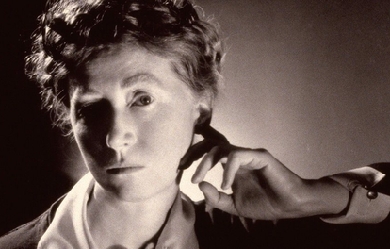
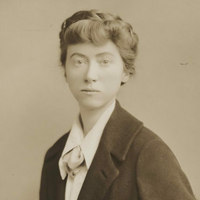
Born near St. Louis, Missouri, on November 15, 1887, Marianne Moore was raised in the home of her grandfather, a Presbyterian pastor. After her grandfather's death, in 1894, Moore and her family stayed with other relatives, and in 1896 they moved to Carlisle, Pennsylvania. She attended Bryn Mawr College and received her B.A. in 1909. Following graduation, Moore studied typing at Carlisle Commercial College, and from 1911 to 1915 she was employed as a school teacher at the Carlisle Indian School. In 1918, Moore and her mother moved to New York City, and in 1921, she became an assistant at the New York Public Library. She began to meet other poets, such as William Carlos Williams and Wallace Stevens, and to contribute to the Dial, a prestigious literary magazine. She served as acting editor of the Dial from 1925 to 1929. Along with the work of such other members of the Imagist movement as Ezra Pound, Williams, and H. D., Moore's poems were published in the Egoist, an English magazine, beginning in 1915. In 1921, H.D. published Moore's first book, Poems, without her knowledge. Moore was widely recognized for her work; among her many honors were the Bollingen prize, the National Book Award, and the Pulitzer Prize. She wrote with the freedom characteristic of the other modernist poets, often incorporating quotes from other sources into the text, yet her use of language was always extraordinarily condensed and precise, capable of suggesting a variety of ideas and associations within a single, compact image. In his 1925 essay "Marianne Moore," William Carlos Williams wrote about Moore's signature mode, the vastness of the particular: "So that in looking at some apparently small object, one feels the swirl of great events." She was particularly fond of animals, and much of her imagery is drawn from the natural world. She was also a great fan of professional baseball and an admirer of Muhammed Ali, for whom she wrote the liner notes to his record, I Am the Greatest! Deeply attached to her mother, she lived with her until Mrs. Moore's death in 1947. Marianne Moore died in New York City in 1972. Poetry Collected Poems (1951) Like a Bulwark (1956) Nevertheless (1944) O to Be a Dragon (1959) Observations (1924) Poems (1921) Selected Poems (1935) Tell Me, Tell Me (1966) The Arctic Fox (1964) The Complete Poems of Marianne Moore (1967) The Pangolin and Other Verse (1936) What Are Years? (1941) Prose A Marianne Moore Reader (1961) Predilections (1955) The Complete Prose of Marianne Moore (1987)

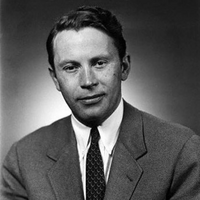
Richard Purdy Wilbur (born March 1, 1921) is an American poet and literary translator. He was appointed the second Poet Laureate Consultant in Poetry to the Library of Congress in 1987, and twice received the Pulitzer Prize for Poetry, in 1957 and again in 1989. Biography Early years Wilbur was born in New York City March 1, 1921 and grew up in North Caldwell, New Jersey. He graduated from Montclair High School in 1938, having worked on the school newspaper as a student there. He graduated from Amherst College in 1942 and then served in the United States Army from 1943 to 1945 during World War II. After the Army and graduate school at Harvard University, Wilbur taught at Wellesley College, then Wesleyan University for two decades and at Smith College for another decade. At Wesleyan, he was instrumental in founding the award-winning poetry series of the University Press. He received two Pulitzer Prizes for Poetry and, as of 2009, teaches at Amherst College. He is also on the editorial board of the literary magazine The Common, based at Amherst College. Career When only 8 years old, Wilbur published his first poem in John Martin’s Magazine. His first book, The Beautiful Changes and Other Poems, appeared in 1947. Since then he has published several volumes of poetry, including New and Collected Poems (Faber, 1989). Wilbur is also a translator, specializing in the 17th century French comedies of Molière and the dramas of Jean Racine. His translation of Tartuffe has become the standard English version of the play, and has been presented on television twice (a 1978 production is available on DVD.) In addition to publishing poetry and translations, he has also published several children’s books including Opposites, More Opposites, and The Disappearing Alphabet. Continuing the tradition of Robert Frost and W. H. Auden, Wilbur’s poetry finds illumination in everyday experiences. Less well-known is Wilbur’s foray into lyric writing. He provided lyrics to several songs in Leonard Bernstein’s 1956 musical, Candide, including the famous “Glitter and Be Gay” and “Make Our Garden Grow.” He has also produced several unpublished works including “The Wing” and “To Beatrice”. His honors include the 1983 Drama Desk Special Award and the PEN Translation Prize for his translation of The Misanthrope, both the Pulitzer Prize for Poetry and the National Book Award for Things of This World (1956), the Edna St Vincent Millay award, the Bollingen Prize, and the Chevalier, Ordre des Palmes Académiques. He was elected a Fellow of the American Academy of Arts and Sciences in 1959. In 1987 Wilbur became the second poet, after Robert Penn Warren, to be named U.S. Poet Laureate after the position’s title was changed from Poetry Consultant. In 1988, he won the Aiken Taylor Award for Modern American Poetry and then in 1989 he won a second Pulitzer, this one for his New and Collected Poems. On October 14, 1994, he received the National Medal of Arts from President Bill Clinton. He also received the PEN/Ralph Manheim Medal for Translation in 1994. In 2003, Wilbur was inducted into the American Theater Hall of Fame. In 2006, Wilbur won the Ruth Lilly Poetry Prize. In 2010 he won the National Translation Award for the translation of The Theatre of Illusion by Pierre Corneille. In 2012, Yale conferred an honorary degree, Doctor of Letters, on Wilbur. Bibliography Poetry collections * 1947: The Beautiful Changes, and Other Poems * 1950: Ceremony, and Other Poems * 1955: A Bestiary * 1956: Things of This World - won Pulitzer Prize for Poetry and National Book Award, both in 1957 * 1961: Advice to a Prophet, and Other Poems * 1969: Walking to Sleep: New Poems and Translations * 1976: The Mind-Reader: New Poems * 1988: New and Collected Poems - won Pulitzer Prize for Poetry in 1989 * 2000: Mayflies: New Poems and Translations * 2004: Collected Poems, 1943–2004 * 2010: Anterooms * 2012: The Nutcracker Selected poems available online Prose collections * 1976: Responses: Prose Pieces, 1953–1976 * 1997: The Catbird’s Song: Prose Pieces, 1963–1995 Translated plays from other authors Translated from Molière * The Misanthrope (1955/1666) * Tartuffe (1963/1669) * The School for Wives (1971/1662) * The Learned Ladies (1978/1672) * School for Husbands (1992/1661) * The Imaginary Cuckold, or Sganarelle (1993/1660) * Amphitryon (1995/1668) * The Bungler (2000/1655) * Don Juan (2001/1665) * Lovers’ Quarrels (2009/1656) From Jean Racine * Andromache (1982/1667) * Phaedra (1986/1677) * The Suitors (2001/1668) From Pierre Corneille * The Theatre of Illusion (2007/1636) * Le Cid (2009/1636) * The Liar (2009/1643) Sources * President and first Lady honor Artists and Scholars, Clinton, The White House– Office of the Press Secretary, 1994-10-13 . References Wikipedia—https://en.wikipedia.org/wiki/Richard_Wilbur
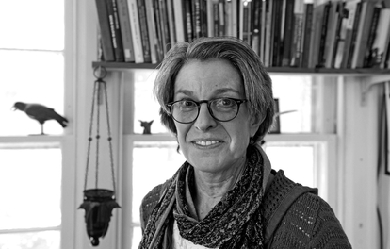

Claudia Emerson is an American poetess born on January 13, 1957 in Chatham, Virginia. She has won the 2006 Pulitzer Prize for her poetry collection Late Wife, and received several other awards. She has also written several poetry books. As of the Fall of 2013, she is teaching classes at Virginia Commonwealth University.
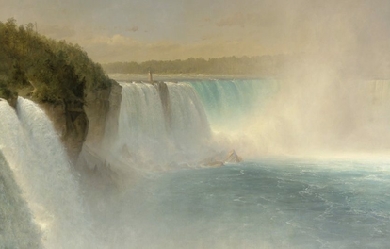
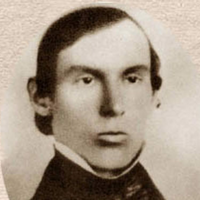
Jones Very (August 28, 1813– May 8, 1880) was an American poet, essayist, clergyman, and mystic associated with the American Transcendentalism movement. He was known as a scholar of William Shakespeare and many of his poems were Shakespearean sonnets. He was well-known and respected amongst the Transcendentalists, though he had a mental breakdown early in his career. Born in Salem, Massachusetts to two unwed first cousins, Jones Very became associated with Harvard University, first as an undergraduate, then as a student in the Harvard Divinity School and as a tutor of Greek. He heavily studied epic poetry and was invited to lecture on the topic in his home town, which drew the attention of Ralph Waldo Emerson. Soon after, Very asserted that he was the Second Coming of Christ, which resulted in his dismissal from Harvard and his eventual institutionalization in an insane asylum. When he was released, Emerson helped him issue a collection called Essays and Poems in 1839. Very lived the majority of his life as a recluse from then on, issuing poetry only sparingly. He died in 1880. Biography Very was born on August 28, 1813, in Salem, Massachusetts and spent much of his childhood at sea. He was the oldest of six children, born out of wedlock to two first cousins. His mother, Lydia Very, was known for being an aggressive freethinker who made her atheistic beliefs known to all. She believed that marriage was only a moral arrangement and not a legal one. His father, also named Jones Very, was a captain during the War of 1812 and was held in Nova Scotia for a time by the British as a prisoner of war. When the younger Jones Very was ten, his father, by then a shipmaster, took him on a sailing voyage to Russia. A year later, his father had Very serve as a cabin boy on a trip to New Orleans, Louisiana. His father died on the return trip, apparently due to a lung disease he contracted while in Nova Scotia. As a boy, Very was studious, well-behaved, and solitary. By 1827, he left school when his mother told him he must take the place of his father and care for the family. After working at an auction house, Very became a paid assistant to the principal of a private school in Salem as a teenager. The principal, Henry Kemble Oliver, exposed his young assistant to philosophers and writers, including James Mackintosh, to influence his religious beliefs and counteract his mother’s atheism. He composed a poem for the dedication of a new Unitarian church in Salem: “O God; On this, our temple, rest thy smile, Till bent with days its tower shall nod”. Harvard years Very enrolled at Harvard College in 1834. During his college years, he was shy, studious, and ambitious of literary fame. He had become interested in the works of Lord Byron, William Wordsworth, Samuel Taylor Coleridge, Johann Wolfgang von Goethe and Friedrich Schiller. His first few poems were published in his hometown newspaper, the Salem Observer, while he completed his studies. He graduated from Harvard in 1836, ranked number two in his class. He was chosen to speak at his commencement; his address was titled “Individuality”. After graduating, Very served as a tutor in Greek before entering Harvard Divinity School, thanks to the financial assistance of an uncle. Though Very never completed his divinity degree, he held temporary pastorates in Maine, Massachusetts, and Rhode Island. Very became known for his ability to draw people into literature, and was asked to speak at a lyceum in his hometown of Salem in 1837. There he was befriended by Elizabeth Peabody, who wrote to Emerson suggesting Very lecture in Concord. In 1838, Ralph Waldo Emerson arranged a talk by Very at the Concord Lyceum. Very lectured on epic poetry on April 4 of that year, after he had walked twenty miles from Salem to Concord to deliver it. Emerson made up for the meager $10 payment by inviting Very to his home for dinner. Emerson signed Very’s personal copy of Nature with the words: "Har[mony] of Man with Nature Must Be Reconciled With God". For a time, Very tried to recruit Nathaniel Hawthorne as a brother figure in his life. Though Hawthorne treated him kindly, he was not impressed by Very. Unlike Hawthorne, Emerson found him “remarkable” and, when Very showed up at his home unannounced along with Cornelius Conway Felton in 1838, Emerson invited several other friends, including Henry David Thoreau, to meet him. Emerson, however, was surprised at Very’s behavior in larger groups. “When he is in the room with other persons, speech stops, as if there were a corpse in the apartment”, he wrote. Even so, in May 1838, the same month Very published his “Epic Poetry” lecture in the Christian Examiner, Emerson brought Very to a meeting of the Transcendental Club, where the topic of discussion was “the question of mysticism”. At the meeting, held at the home of Caleb Stetson in Medford, Massachusetts, Very was actively engaged in the discussion, building his reputation as a mystic within that circle. Mental health Very was known as an eccentric, prone to odd behavior and may have suffered from bipolar disorder. The first signs of a breakdown came shortly after meeting Emerson, as Very was completing an essay on William Shakespeare. As Very later explained, “I felt within me a new will... it was not a feeling of my own but a sensible will that was not my own... These two consciousnesses, as I may call them, continued with me”. In August 1837, while traveling by train, he was suddenly overcome with terror at its speed until he realized he was being “borne along by a divine engine and undertaking his life-journey”. As he told Henry Ware, Jr., professor of pulpit eloquence and pastoral care at Harvard Divinity School, divine inspiration helped him suddenly understand the twenty-fourth chapter of the Gospel of Matthew and that Christ was having his Second Coming within him. When Ware did not believe him, Very said, “I had thought you did the will of the Father, and that I should receive some sympathy from you—But I now find that you are doing your own will, and not the will of your father”. Very also claimed that he was under the influence of the Holy Spirit and composed verse while in this state. Emerson did not believe Very’s claim and, noting the poor writing, he asked, "cannot the spirit parse & spell?" Very said he was also tormented by strong sexual desires which he believed were only held in check by the will of God. To help control himself, he avoided speaking with or even looking at women—he called it his “sacrifice of Beauty”. One of Very’s students, a fellow native of Salem named Samuel Johnson, Jr., said that people ridiculed Very behind his back since he had “gained the fame of being cracked (or crazy, if you are not acquainted with Harvard technicalities)”. During one of his tutoring sessions, Very declared that he was “infallible: that he was a man of heaven, and superior to all the world around him”. He then cried out to his students, “Flee to the mountains, for the end of all things is at hand”. Harvard president Josiah Quincy III relieved Very of his duties, referring to a “nervous collapse” that required him to be left in the care of his younger brother Washington Very, himself a freshman at Harvard. After returning to Salem, he visited Elizabeth Peabody on September 16, 1838, apparently having given up his rule “not to speak or look at women”. As she recalled, He looked much flushed and his eyes very brilliant and unwinking. It struck me at once that there was something unnatural—and dangerous in his air—As soon as we were within the parlor door he laid his hand on my head—and said “I come to baptize you with the Holy Ghost and with Fire”—and then he prayed. After this, Very told her she would soon feel different, explaining, “I am the Second Coming”. He performed similar “baptisms” to other people throughout Salem, including ministers. It was finally Reverend Charles Wentworth Upham who had him committed. Very was institutionalized for a month at a hospital near Boston, the McLean Asylum, as he wrote, “contrary to my will”. While there, he finished an essay on Hamlet, arguing that the play is about “the great reality of a soul unsatisfied in its longings after immortality” and that “Hamlet has been called mad, but as we think, Shakespeare thought more of his madness than he did of the wisdom of the rest of the play”. During his stay at the hospital, Very lectured his fellow patients on Shakespeare and on poetry in general. He was released on October 17, 1838, though he refused to renounce his beliefs. His fellow patients reportedly thanked him as he left. McLean’s superintendent Luther Bell took credit for saving him “from the delusion of being a prophet extraordinaire”, which Luther thought was caused by Very’s digestive system being “entirely out of order”. The same month he was released, Very stayed with Emerson at his home in Concord for a week. While he was visiting, Emerson wrote in his journal on October 29, “J. Very charmed us all by telling us he hated us all.” Amos Bronson Alcott wrote of Very in December 1838: I received a letter on Monday of this week from Jones Very of Salem, formerly Tutor in Greek at Harvard College—which institution he left, a few weeks since, being deemed insane by the Faculty. A few weeks ago he visited me....He is a remarkable man. His influence at Cambridge on the best young men was very fine. His talents are of a high order....Is he insane? If so, there yet linger glimpses of wisdom in his memory. He is insane with God—diswitted in the contemplation of the holiness of Divinity. He distrusts intellect... Living, not thinking, he regards as the worship meet for the soul. This is mysticism in its highest form. Poetry Emerson saw a kindred spirit in Very and defended his sanity. As he wrote to Margaret Fuller, “Such a mind cannot be lost”. Emerson was sympathetic with Very’s plight because he himself had recently been ostracized after his controversial lecture, the “Divinity School Address”. He helped Very publish a small volume, Essays and Poems in 1839. The poems collected in this volume were chiefly Shakespearean sonnets. Very also published several poems in the Western Messenger between 1838 and 1840 as well as in The Dial, the journal of the Transcendentalists. He was disappointed, however, that Emerson, serving as editor of the journal, altered his poems. Very wrote to Emerson in July 1842, “Perhaps they were all improvements but I preferred my own lines. I do not know but I ought to submit to such changes as done by the rightful authority of an Editor but I felt a little sad at the aspect of the piece.” He was never widely read, and was largely forgotten by the end of the nineteenth century, but in the 1830s and 1840s the Transcendentalists, including Emerson, as well as William Cullen Bryant, praised his work. Very continued writing throughout his life, though sparingly. Many of his later poems were never collected but only distributed in manuscript form among the Transcendentalists. In January 1843, his work was included in the first issue of The Pioneer, a journal edited by James Russell Lowell which also included the first publication of Edgar Allan Poe’s “The Tell-Tale Heart”. Final years and death Jones Very believed his role as a prophet would last only twelve months. By September 1839, his role was complete. Emerson suggested that Very’s temporary mental instability was worth the message he had delivered. In his essay “Friendship”, Emerson referred to Very: I knew a man who under a certain religious frenzy cast off this drapery, and spoke to the conscience of every person he encountered, and that with great insight and beauty. At first, all men agreed he was mad. But persisting, he attained to the advantage of bringing every man of his acquaintance into true relations with him... To stand in true relations with men in a false age is worth a fit of insanity, is it not? The last decades of Very’s life were spent in Salem as a recluse under the care of his sister. It was during these years that he held roles as a visiting minister in Eastport, Maine and North Beverly, Massachusetts, though these roles were temporary because he had become too shy. By age 45, he had retired. In his last forty years, Very did very little. As biographer Edwin Gittleman wrote, "Although he lived until 1880, Very’s effective life was over by the end of 1840." He died on May 8, 1880 and, upon hearing of Very’s death, Alcott wrote a brief remembrance on May 16, 1880: The newspapers record the death of Jones Very of Salem, Mass. It was my fortune to have known the man while he was tutor in Harvard College and writing his Sonnets and Essays on Shakespeare, which were edited by Emerson, and published in 1839. Very was then the dreamy mystic of our circle of Transcendentalists, and a subject of speculation by us. He professed to be taught by the Spirit and to write under its inspiration. When his papers were submitted to Emerson for criticism the spelling was found faulty and on Emerson’s pointing out the defect, he was told that this was by dictation of the Spirit also. Whether Emerson’s witty reply, “that the Spirit should be a better speller,” qualified the mystic’s vision does not appear otherwise than that the printed volume shows no traces of illiteracy in the text. Very often came to see me. His shadowy aspect at times gave him a ghostly air. While walking by his side, I remember, he seemed spectral,—and somehow using my feet instead of his own, keeping as near me as he could, and jostling me frequently. His voice had a certain hollowness, as if echoing mine. His whole bearing made an impression as if himself were detached from his thought and his body were another’s. He ventured, withal, to warn me of falling into idolatries, while he brought a sonnet or two (since printed) for my benefit. His temperament was delicate and nervous, disposed to visionariness and a dreamy idealism, stimulated by over-studies and the school of thought then in the ascendant. His sonnets and Shakespearean essays surpass any that have since appeared in subtlety and simplicity of execution. Critical assessment The first critical review of Very’s book was written by Margaret Fuller and published in Orestes Brownson’s Boston Quarterly Review; it said Very’s poems had “an elasticity of spirit, a genuine flow of thought, and unsought nobleness and purity”, though she admitted she preferred the prose in the collection over the poetry. She mocked the “sing song” style of the poems and questioned his religious mission. She concluded: “I am... greatly interested in Mr Very. He seems worthy to be well known.” James Freeman Clarke admired Very’s poetry enough to have several published in his journal, the Western Messenger, between 1838 and 1840. William Ellery Channing admired Very’s poetry as well, writing that his insanity “is only superficial”. Richard Henry Dana, Sr. also commented positively on Very’s poetry: “The thought is deeply spiritual; and while there is a certain character of peculiarity which we so often find in like things from our old writers, there is a freedom from quaintness... Indeed, I know not where you would... find any thing in this country to compare with these Sonnets.” Editor and critic Rufus Wilmot Griswold was impressed enough by Very’s poetry to include him in the first edition of his anthology The Poets and Poetry of America in 1842. He wrote to Emerson asking for more information about him and expressing his opinion of his poetry: “Though comparatively unknown, he seems to be a true poet.” The modern reassessment of Jones Very as an author of literary importance can be dated to a 1936 essay by Yvor Winters who wrote of the poet, “In the past two decades two major American writers have been rediscovered and established securely in their rightful places in literary history. I refer to Emily Dickinson and Herman Melville. I am proposing the establishment of a third.” Winters, in speaking of Very’s relations with Emerson and his circle, concluded, “The attitude of the Transcendentalists toward Very is instructive and amusing, and it proves beyond cavil how remote he was from them. In respect to the doctrine of the submission of the will, he agreed with them in principle; but whereas they recommended the surrender, he practised it, and they regarded him with amazement.” Subsequently, William Irving Bartlett, in 1942, outlined the basic biographical facts of Very’s life in Jones Very, Emerson’s “Brave Saint.” A complete scholarly edition of Very’s poetic works belatedly appeared, over a century after the poet’s death, in 1993. References Wikipedia—https://en.wikipedia.org/wiki/Jones_Very
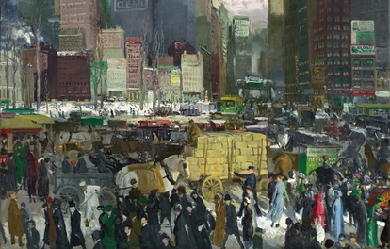
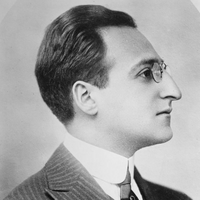
Louis Untermeyer (October 1, 1885 – December 18, 1977) was an American poet, anthologist, critic, and editor. He was appointed the fourteenth Consultant in Poetry to the Library of Congress in 1961. Untermeyer was born in New York City. He married Jean Starr in 1906. Their son Richard was born in 1907 and died under uncertain circumstances in 1927. After a 1926 divorce, they were reunited in 1929, after which they adopted two sons, Laurence and Joseph. He married the poet Virginia Moore in 1927; their son, John Moore Untermeyer (1928), was renamed John Fitzallen Moore after a painful 1929 divorce. In the 1930s, he divorced Jean Starr Untermeyer and married Esther Antin. This relationship also ended in divorce in 1945. In 1948, he married Bryna Ivens, an editor of Seventeen magazine. Untermeyer was known for his wit and his love of puns. For a while, he held Marxist beliefs, writing for magazines such as The Masses, through which he advocated that the United States stay out of World War I. After the suppression of that magazine by the U.S. government, he joined The Liberator, published by the Workers Party of America. Later he wrote for the independent socialist magazine The New Masses. He was a co-founder of "The Seven Arts," a poetry magazine that is credited for introducing many new poets, including Robert Frost, who became Untermeyer's long-term friend and correspondent. In 1950, Untermeyer was a panelist during the first year of the What's My Line? television quiz program. According to Bennett Cerf, Untermeyer would sign virtually any piece of paper that someone placed in front of him, and Untermeyer inadvertently signed a few Communist proclamations. According to Cerf, Untermeyer was not at all a communist, but he had joined several suspect societies that made him stand out. He was named during the hearings by the House Committee on Un-American Activities investigating communist subversion. The Catholic War Veterans and "right wing organizations" began hounding Mr. Untermeyer. Goodson-Todman, producer of the show, held out against the protests of Untermeyer for some time, but finally war veterans began picketing outside the New York City television studio from which What's My Line? was telecast live. The pressure became too great, and the sponsor Jules Montenier, inventor of Stopette deodorant, said, “After all, I'm paying a lot of money for this. I can't afford to have my product picketed.” At that point, the producers told Untermeyer that he had to leave the television series. The last live telecast on which he appeared was on March 11, 1951, and the mystery guest he questioned while blindfolded was Celeste Holm. The kinescope of this episode has been lost. His exit led to Bennett Cerf becoming a permanent member of the program. The controversy surrounding Untermeyer led to him being blacklisted by the television industry. According to Untermeyer's friend Arthur Miller, Untermeyer became so depressed by his forced departure from What's My Line? that he refused to leave his home in Brooklyn for more than a year, and his wife Bryna answered all incoming phone calls. It was she who eventually told Miller what had happened because Untermeyer would not pick up the phone to talk to him, even though Miller's support of blacklisted writers and radio and television personalities was well-known to Untermeyer and many others. But for more than a year, whenever Miller dialed the Untermeyers' phone number, Bryna "talked obscurely about [her husband Louis] not wanting phone conversations anymore, preferring to wait until we could all get together again," wrote Miller. Miller was a "very infrequent television watcher" in 1951, according to words he used in his 1987 autobiography, and so he did not notice that Bennett Cerf had replaced Untermeyer on the live TV game show. Miller did read New York City newspapers every day, but apparently there was no published report of Untermeyer's disappearance from television, therefore Miller was unaware that anything was wrong until Untermeyer's wife Bryna revealed what it was eventually after they had conversed by phone for more than a year. Louis Untermeyer was the author or editor of close to 100 books, from 1911 until his death. Many of them and his other memorabilia are preserved in a special section of the Lilly Library at Indiana University. Schools used his Modern American and British poetry books widely, and they often introduced college students to poetry. He and Bryna Ivens Untermeyer created a number of books for young people, under the Golden Treasury of Children's Literature. Utermeyer also rounded up contributors for a Modern Masters for Children series published by Crowell-Collier Press in the 1960s--the books were designed to have a vocabulary of 800 words and contributors included Robert Graves, Phylis McGinley, and Shirley Jackson. He lectured on literature for many years, both in the US and other countries. In 1956 the Poetry Society of America awarded Untermeyer a Gold Medal. He also served as the Consultant in Poetry to the Library of Congress from 1961 until 1963. Poetry collections * The Younger Quire (parodies), Mood Publishing, 1911. * First Love, French, 1911. * Challenge, Century, 1914. * These Times, Holt, 1917. * Including Horace, Harcourt, 1919. * The New Adam, Harcourt, 1920. * Roast Leviathan, Harcourt, 1923, reprinted, Arno, 1975. * (With son, Richard Untermeyer) Poems, privately printed, 1927. * Burning Bush, Harcourt, 1928. * Adirondack Cycle, Random House, 1929. * Food and Drink, Harcourt, 1932. * First Words before Spring, Knopf, 1933. * Selected Poems and Parodies, Harcourt, 1935. * For You with Love (juvenile), Golden Press, 1961. * Long Feud: Selected Poems, Harcourt, 1962. * One and One and One (juvenile), Crowell-Collier, 1962. * This Is Your Day (juvenile), Golden Press, 1964. * Labyrinth of Love, Simon & Schuster, 1965. * Thanks: A Poem (juvenile), Odyssey, 1965. * Thinking of You (juvenile), Golden Press, 1968. * A Friend Indeed, Golden Press, 1968. * You: A Poem, (juvenile), illustrations by Martha Alexander, Golden Press, 1969. References Wikipedia—https://en.wikipedia.org/wiki/Louis_Untermeyer
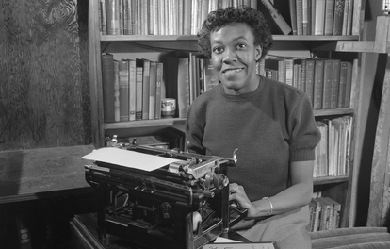

Gwendolyn Elizabeth Brooks (June 7, 1917– December 3, 2000) was an American poet and teacher. She was the first African-American woman to win a Pulitzer prize when she was awarded the Pulitzer Prize for Poetry in 1950 for her second collection, Annie Allen. Throughout her career she received many more honors. She was appointed Poet Laureate of Illinois in 1968, a position held until her death and Poet Laureate Consultant in Poetry to the Library of Congress in 1985.
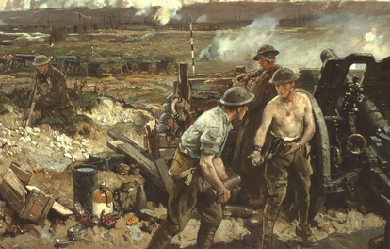
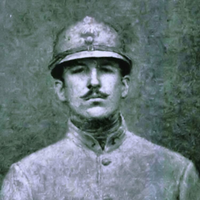
Alan Seeger (22 June 1888– 4 July 1916) was an American poet who fought and died in World War I during the Battle of the Somme serving in the French Foreign Legion. Seeger was the uncle of American folk singer Pete Seeger, and was a classmate of T.S. Eliot at Harvard. He is most well known for having authored the poem, I Have a Rendezvous with Death, a favorite of President John F. Kennedy. A statue modeled after Seeger is found on the monument honoring fallen Americans who volunteered for France during the war, located at the Place des États-Unis, Paris. He is sometimes called the “American Rupert Brooke.” Early life Born in New York on June 22, 1888, Seeger moved with his family to Staten Island at the age of one and remained there until the age of 10. In 1900, his family moved to Mexico for two years, which influenced the imagery of some of his poetry. His brother Charles Seeger, a noted pacifist and musicologist, was the father of the American folk singers Peter “Pete” Seeger, Mike Seeger, and Margaret “Peggy” Seeger. Seeger entered Harvard in 1906 after attending several elite preparatory schools, including Hackley School. Writing At Harvard, he edited and wrote for the Harvard Monthly. Among his friends there (and afterward) was the American Communist John Reed, though the two had differing ideological views, and his Harvard class also included T.S. Eliot and Walter Lippmann, among others. After graduating in 1910, he moved to Greenwich Village for two years, where he wrote poetry and enjoyed the life of a young bohemian. During his time in Greenwich Village, he attended soirées at the Mlles. Petitpas’ boardinghouse (319 West 29th Street), where the presiding genius was the artist and sage John Butler Yeats, father of the poet William Butler Yeats. Having moved to the Latin Quarter of Paris to continue his seemingly itinerant intellectual lifestyle, on August 24, 1914, Seeger joined the French Foreign Legion so that he could fight for the Allies in World War I (the United States did not enter the war until 1917). Death He was killed in action at Belloy-en-Santerre on July 4, 1916, famously cheering on his fellow soldiers in a successful charge after being hit several times by machine gun fire. Poetry Seeger’s poetry was published by Charles Scribner’s Sons in December 1916 with a 46-page introduction by William Archer. Poems, a collection of his works, was relatively unsuccessful, due, according to Eric Homberger, to its lofty idealism and language, qualities out of fashion in the early decades of the 20th century. Poems was reviewed in The Egoist, where the critic—T. S. Eliot, Seeger’s classmate at Harvard—commented that, Seeger was serious about his work and spent pains over it. The work is well done, and so much out of date as to be almost a positive quality. It is high-flown, heavily decorated and solemn, but its solemnity is thorough going, not a mere literary formality. Alan Seeger, as one who knew him can attest, lived his whole life on this plane, with impeccable poetic dignity; everything about him was in keeping. One of his more famous poems was I Have a Rendezvous with Death, published posthumously. A recurrent theme in both his poetic works and his personal writings was his desire for his life to end gloriously at an early age. This particular poem, according to the JFK Library, “was one of John F. Kennedy’s favorite poems and he often asked his wife (Jacqueline) to recite it.” Memorials On 4 July 1923, the President of the French Council of State, Raymond Poincaré, dedicated a monument in the Place des États-Unis to the Americans who had volunteered to fight in World War I in the service of France. The monument, in the form of a bronze statue on a plinth, executed by Jean Boucher, had been financed through a public subscription. Boucher had used a photograph of Seeger as his inspiration, and Seeger’s name can be found, among those of 23 others who had fallen in the ranks of the French Foreign Legion, on the back of the plinth. Also, on either side of the base of the statue, are two excerpts from Seeger’s “Ode in Memory of the American Volunteers Fallen for France”, a poem written shortly before his death on 4 July 1916. Seeger intended that his words should be read in Paris on 30 May of that year, at an observance of the American holiday, Decoration Day (later known as Memorial Day): They did not pursue worldly rewards; they wanted nothing more than to live without regret, brothers pledged to the honor implicit in living one’s own life and dying one’s own death. Hail, brothers! Goodbye to you, the exalted dead! To you, we owe two debts of gratitude forever: the glory of having died for France, and the homage due to you in our memories. Alan Seeger Natural Area, in central Pennsylvania, was named by Colonel Henry Shoemaker. It is unknown if Alan Seeger had any connection to the area or why Shoemaker chose to memorialize the poet. The area is known for its virgin trees. References Wikipedia—https://en.wikipedia.org/wiki/Alan_Seeger

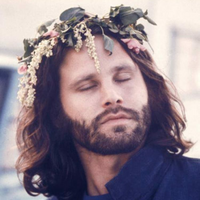
James Douglas “Jim” Morrison (December 8, 1943– July 3, 1971) was an American singer, songwriter, and poet, best remembered as the lead singer of The Doors. As a result of his lyrics, wild personality, performances, and the dramatic circumstances surrounding his life and death, Morrison is regarded by critics and fans as one of the most iconic and influential frontmen in rock music history. In the later part of the 20th century, his fame endured as one of the popular culture’s most rebellious and oft-displayed icons, representing the generation gap and youth counterculture. He was also well known for improvising spoken word poetry passages while the band played live. Morrison was ranked number 47 on Rolling Stone’s list of the "100 Greatest Singers of All Time", and number 22 on Classic Rock magazine’s "50 Greatest Singers In Rock". Ray Manzarek, who co-founded the Doors with him, said Morrison “embodied hippie counterculture rebellion”. Morrison was sometimes referred to by other nicknames, such as “Lizard King” and “King of Orgasmic Rock”. Morrison developed an alcohol dependency during the 1960s, which at times affected his performances on stage. He died at the age of 27 in Paris, possibly from an accidental heroin overdose. As no autopsy was performed, the exact cause of Morrison’s death is still disputed. Morrison is interred at Père Lachaise Cemetery in eastern Paris. Early years James Douglas Morrison was born in Melbourne, Florida, the son of Clara Virginia (née Clarke) and Rear Admiral George Stephen Morrison, USN, who commanded US naval forces during the Gulf of Tonkin incident, which provided the pretext for the US invasion of South Vietnam in 1965. Morrison had a sister, Anne Robin, who was born in 1947 in Albuquerque, New Mexico; and a brother, Andrew Lee Morrison, who was born in 1948 in Los Altos, California. His ancestors were Scottish, Irish, and English. In 1947, Morrison, then four years old, allegedly witnessed a car accident in the desert, in which a family of Native Americans were injured and possibly killed. He referred to this incident in the Doors’ song “Peace Frog” on the 1970 album Morrison Hotel, as well as in the spoken word performances “Dawn’s Highway” and “Ghost Song” on the posthumous 1978 album An American Prayer. Morrison believed this incident to be the most formative event of his life, and made repeated references to it in the imagery in his songs, poems, and interviews. His family does not recall this incident happening in the way he told it. According to the Morrison biography No One Here Gets Out Alive, Morrison’s family did drive past a car accident on an Indian reservation when he was a child, and he was very upset by it. The book The Doors, written by the remaining members of the Doors, explains how different Morrison’s account of the incident was from that of his father. This book quotes his father as saying, "We went by several Indians. It did make an impression on him [the young James]. He always thought about that crying Indian." This is contrasted sharply with Morrison’s tale of “Indians scattered all over the highway, bleeding to death.” In the same book, his sister is quoted as saying, “He enjoyed telling that story and exaggerating it. He said he saw a dead Indian by the side of the road, and I don’t even know if that’s true.” Raised a military brat, Morrison’s family moved often. He spent part of his childhood in San Diego. He completed third grade at a Fairfax County Elementary School Fairfax County, Virginia. His father was stationed at NAS Kingsville in 1952, he attended Charles H. Flato Elementary School in Kingsville, Texas. He continued at St. John’s Methodist School in Albuquerque, New Mexico, and then Longfellow School Sixth Grade Graduation Program from San Diego, California. In 1957, Morrison attended Alameda High School in Alameda, California. He graduated from George Washington High School, now George Washington Middle School, in Alexandria, Virginia in June 1961. Cass Elliot also attended high school there, that same year. Morrison read widely and voraciously—being particularly inspired by the writings of philosophers and poets. He was influenced by Friedrich Nietzsche, whose views on aesthetics, morality, and the Apollonian and Dionysian duality would appear in his conversation, poetry and songs. He read Plutarch’s “Lives of the Noble Greeks and Romans”. He read the works of the French Symbolist poet Arthur Rimbaud, whose style would later influence the form of Morrison’s short prose poems. He was also influenced by William S. Burroughs, Jack Kerouac, Allen Ginsberg, Lawrence Ferlinghetti, Charles Baudelaire, Molière, Franz Kafka, Honoré de Balzac and Jean Cocteau, along with most of the French existentialist philosophers. His senior-year English teacher said, “Jim read as much and probably more than any student in class, but everything he read was so offbeat I had another teacher (who was going to the Library of Congress) check to see if the books Jim was reporting on actually existed. I suspected he was making them up, as they were English books on sixteenth– and seventeenth-century demonology. I’d never heard of them, but they existed, and I’m convinced from the paper he wrote that he read them, and the Library of Congress would’ve been the only source.” Morrison went to live with his paternal grandparents in Clearwater, Florida, where he attended classes at St. Petersburg College (then known as a junior college). In 1962, he transferred to Florida State University (FSU) in Tallahassee, where he appeared in a school recruitment film. While attending FSU, Morrison was arrested for a prank following a home football game. In January 1964, Morrison moved to Los Angeles to attend the University of California, Los Angeles (UCLA). Shortly thereafter on August 2, 1964, Morrison’s father, George Stephen Morrison, commanded a carrier division of the United States fleet during the Gulf of Tonkin Incident, which resulted in the United States’ rapid escalation of the Vietnam War. At UCLA, Morrison enrolled in Jack Hirschman’s class on Antonin Artaud in the Comparative Literature program within the UCLA English Department. Artaud’s brand of surrealist theatre had a profound impact on Morrison’s dark poetic sensibility of cinematic theatricality. Morrison completed his undergraduate degree at UCLA’s film school within the Theater Arts department of the College of Fine Arts in 1965. At the time of graduation ceremony, he went to Venice, and his diploma was mailed to his mother at Coronado. He made several short films while attending UCLA. First Love, the first of these films, made with Morrison’s classmate and roommate Max Schwartz, was released to the public when it appeared in a documentary about the film Obscura. During these years, while living in Venice Beach, he became friends with writers at the Los Angeles Free Press, for which he advocated until his death in 1971. He conducted a lengthy and in-depth interview with Bob Chorush and Andy Kent, both working for the Free Press at the time (approximately December 6–8, 1970), and was planning on visiting the headquarters of the busy newspaper shortly before leaving for Paris. The Doors In the summer of 1965, after graduating with a bachelor’s degree from the UCLA film school, Morrison led a bohemian lifestyle in Venice Beach. Living on the rooftop of a building inhabited by his old UCLA cinematography friend, Dennis Jakobs, he wrote the lyrics of many of the early songs the Doors would later perform live and record on albums, the most notable being “Moonlight Drive” and “Hello, I Love You”. According to Jakobs, he lived on canned beans and LSD for several months. Morrison and fellow UCLA student, Ray Manzarek, were the first two members of the Doors, forming the group during that summer. They had met months earlier as cinematography students. The now-legendary story claims that Manzarek was lying on the beach at Venice one day, where he accidentally encountered Morrison. He was impressed with Morrison’s poetic lyrics, claiming that they were “rock group” material. Subsequently, guitarist Robby Krieger and drummer John Densmore joined. Krieger auditioned at Densmore’s recommendation and was then added to the lineup. All three musicians shared a common interest in the Maharishi Mahesh Yogi’s meditation practices at the time, attending scheduled classes, but Morrison was not involved in this series of classes, claiming later that he “did not meditate.” The Doors took their name from the title of Aldous Huxley’s book The Doors of Perception (a reference to the unlocking of doors of perception through psychedelic drug use). Huxley’s own title was a quotation from William Blake’s The Marriage of Heaven and Hell, in which Blake wrote: “If the doors of perception were cleansed everything would appear to man as it is, infinite.” Although Morrison was known as the lyricist of the group, Krieger also made significant lyrical contributions, writing or co-writing some of the group’s biggest hits, including “Light My Fire”, “Love Me Two Times”, “Love Her Madly”, and “Touch Me”. On the other hand, Morrison, who didn’t write most songs using an instrument, would come up with vocal melodies for his own lyrics, with the other band members contributing chords and rhythm. Morrison did not play an instrument live (except for maracas and tambourine for most shows, and harmonica on a few occasions) or in the studio (excluding maracas, tambourine, handclaps, and whistling). However, he did play the grand piano on “Orange County Suite” and a Moog synthesizer on “Strange Days”. In June 1966, Morrison and the Doors were the opening act at the Whisky a Go Go in the last week of the residency of Van Morrison’s band Them. Van’s influence on Jim’s developing stage performance was later noted by John Densmore in his book Riders On The Storm: “Jim Morrison learned quickly from his near-namesake’s stagecraft, his apparent recklessness, his air of subdued menace, the way he would improvise poetry to a rock beat, even his habit of crouching down by the bass drum during instrumental breaks.” On the final night, the two Morrisons and their two bands jammed together on “Gloria”. In November 1966, Morrison and the Doors produced a promotional film for “Break on Through (To the Other Side)”, which was their first single release. The film featured the four members of the group playing the song on a darkened set with alternating views and close-ups of the performers while Morrison lip-synched the lyrics. Morrison and the Doors continued to make short music films, including “The Unknown Soldier”, “Moonlight Drive”, and “People Are Strange”. The Doors achieved national recognition after signing with Elektra Records in 1967. The single “Light My Fire” spent three weeks at number one on the Billboard Hot 100 chart in July/August 1967. This was a far cry from the Doors playing warm up for Simon and Garfunkel and playing at a high school as they did in Connecticut that same year. Later, the Doors appeared on The Ed Sullivan Show, a popular Sunday night variety series that had introduced the Beatles and Elvis Presley to the United States. Ed Sullivan requested two songs from the Doors for the show, “People Are Strange” and “Light My Fire”. Sullivan’s censors insisted that the Doors change the lyrics of the song “Light My Fire” from “Girl we couldn’t get much higher” to “Girl we couldn’t get much better” for the television viewers; this was reportedly due to what was perceived as a reference to drugs in the original lyrics. After giving assurances of compliance to the producer in the dressing room, the band agreed, “we’re not changing a word,” and proceeded to sing the song with the original lyrics. Sullivan was not happy and he refused to shake hands with Morrison or any other band member after their performance. Sullivan had a show producer tell the band that they would never appear on The Ed Sullivan Show again. Morrison reportedly said to the producer, in a defiant tone, “Hey man. We just 'did’ the Sullivan Show!” By the release of their second album, Strange Days, the Doors had become one of the most popular rock bands in the United States. Their blend of blues and dark psychedelic rock included a number of original songs and distinctive cover versions, such as their rendition of “Alabama Song”, from Bertolt Brecht and Kurt Weill’s opera, Rise and Fall of the City of Mahagonny. The band also performed a number of extended concept works, including the songs “The End”, “When the Music’s Over”, and “Celebration of the Lizard”. In 1966, photographer Joel Brodsky took a series of black-and-white photos of Morrison, in a photo shoot known as “The Young Lion” photo session. These photographs are considered among the most iconic images of Jim Morrison and are frequently used as covers for compilation albums, books, and other memorabilia of the Doors and Morrison. In late 1967 at an infamous concert in New Haven, Connecticut, he was arrested on stage, an incident that further added to his mystique and emphasized his rebellious image. In 1968, the Doors released their third studio album, Waiting for the Sun. The band performed on July 5 at the Hollywood Bowl, this performance became famous with the DVD: Live at the Hollywood Bowl. It’s also this year that the band played, for the first time, in Europe. Their fourth album, The Soft Parade, was released in 1969. It was the first album where the individual band members were given credit on the inner sleeve for the songs they had written. Previously, each song on their albums had been credited simply to “the Doors”. On September 6 and 7, 1968, the Doors played four performances at the Roundhouse, London, England with Jefferson Airplane which were filmed by Granada for a television documentary The Doors are Open directed by John Sheppard. Around this time, Morrison—who had long been a heavy drinker—started showing up for recording sessions visibly inebriated. He was also frequently late for live performances. By early 1969, the formerly svelte singer had gained weight, grown a beard and mustache, and had begun dressing more casually—abandoning the leather pants and concho belts for slacks, jeans and T-shirts. During a concert of March 1, 1969 at the Dinner Key Auditorium in Miami, Morrison attempted to spark a riot in the audience. He failed, but a warrant for his arrest was issued by the Dade County Police department three days later for indecent exposure. Consequently, many of the Doors’ scheduled concerts were canceled. In September 1970, Morrison was convicted of indecent exposure and profanity. Morrison, who attended the sentencing “in a wool jacket adorned with Indian designs”, silently listened as he was sentenced for six months in prison and had to pay a $500 fine. Morrison remained free on a $50,000 bond. At the sentencing, Judge Murray Goodman told Morrison that he was a “person graced with a talent” admired by many of his peers. In 2007 Florida Governor Charlie Crist suggested the possibility of a posthumous pardon for Morrison, which was announced as successful on December 9, 2010. Drummer John Densmore denied Morrison ever exposed himself on stage that night. Following The Soft Parade, the Doors released Morrison Hotel. After a lengthy break the group reconvened in October 1970 to record what would become their final album with Morrison, titled L.A. Woman. Shortly after the recording sessions for the album began, producer Paul A. Rothchild—who had overseen all of their previous recordings—left the project. Engineer Bruce Botnick took over as producer. Poetry and film Morrison began writing in earnest during his adolescence. At UCLA he studied the related fields of theater, film, and cinematography. He self-published two separate volumes of his poetry in 1969, titled The Lords / Notes on Vision and The New Creatures. The Lords consists primarily of brief descriptions of places, people, events and Morrison’s thoughts on cinema. The New Creatures verses are more poetic in structure, feel and appearance. These two books were later combined into a single volume titled The Lords and The New Creatures. These were the only writings published during Morrison’s lifetime. Morrison befriended Beat poet Michael McClure, who wrote the afterword for Danny Sugerman’s biography of Morrison, No One Here Gets Out Alive. McClure and Morrison reportedly collaborated on a number of unmade film projects, including a film version of McClure’s infamous play The Beard, in which Morrison would have played Billy the Kid. After his death, a further two volumes of Morrison’s poetry were published. The contents of the books were selected and arranged by Morrison’s friend, photographer Frank Lisciandro, and girlfriend Pamela Courson’s parents, who owned the rights to his poetry. The Lost Writings of Jim Morrison Volume I is titled Wilderness, and, upon its release in 1988, became an instant New York Times Bestseller. Volume II, The American Night, released in 1990, was also a success. Morrison recorded his own poetry in a professional sound studio on two separate occasions. The first was in March 1969 in Los Angeles and the second was on December 8, 1970. The latter recording session was attended by Morrison’s personal friends and included a variety of sketch pieces. Some of the segments from the 1969 session were issued on the bootleg album The Lost Paris Tapes and were later used as part of the Doors’ An American Prayer album, released in 1978. The album reached No. 54 on the music charts. Some poetry recorded from the December 1970 session remains unreleased to this day and is in the possession of the Courson family. Morrison’s best-known but seldom seen cinematic endeavor is HWY: An American Pastoral, a project he started in 1969. Morrison financed the venture and formed his own production company in order to maintain complete control of the project. Paul Ferrara, Frank Lisciandro and Babe Hill assisted with the project. Morrison played the main character, a hitchhiker turned killer/car thief. Morrison asked his friend, composer/pianist Fred Myrow, to select the soundtrack for the film. Personal life Morrison’s family Morrison’s early life was the semi-nomadic existence typical of military families. Jerry Hopkins recorded Morrison’s brother, Andy, explaining that his parents had determined never to use physical corporal punishment such as spanking on their children. They instead instilled discipline and levied punishment by the military tradition known as dressing down. This consisted of yelling at and berating the children until they were reduced to tears and acknowledged their failings. Once Morrison graduated from UCLA, he broke off most contact with his family. By the time Morrison’s music ascended to the top of the charts (in 1967) he had not been in communication with his family for more than a year and falsely claimed that his parents and siblings were dead (or claiming, as it has been widely misreported, that he was an only child). This misinformation was published as part of the materials distributed with the Doors’ self-titled debut album. Admiral Morrison was not supportive of his son’s career choice in music. One day, an acquaintance brought over a record thought to have Jim on the cover. The record was the Doors’ self-titled debut. The young man played the record for Morrison’s father and family. Upon hearing the record, Morrison’s father wrote him a letter telling him “to give up any idea of singing or any connection with a music group because of what I consider to be a complete lack of talent in this direction.” In a letter to the Florida Probation and Parole Commission District Office dated October 2, 1970, Morrison’s father acknowledged the breakdown in family communications as the result of an argument over his assessment of his son’s musical talents. He said he could not blame his son for being reluctant to initiate contact and that he was proud of him nonetheless. Morrison spoke fondly of his Irish and Scottish ancestry and was inspired by Celtic mythology in his poetry and songs. Celtic Family Magazine revealed in their 2016 Spring Issue his Morrison clan was originally from the Isle of Lewis, Scotland, while his Irish side, the Clelland clan whom married into the Morrison line were from County Down, Ireland. Relationships Morrison’s first major love affair was with Mary Werbelow, whom he met on the beach in Florida. The relationship lasted several years inspiring many of the songs on the first two Doors albums including the 11-minute ballad “The End” which Ray Manzarek said was originally “a short goodbye love song to Mary” calling her “Jim’s first love”. Werbelow has remained out of view to rock historians with one exception, a 2005 interview in the St. Petersburg Times where she said Morrison spoke to her before a photo shoot for the Doors’ fourth album and told her the first three albums were about her. Morrison spent nearly the entirety of his adult life with a woman named Pamela Courson after meeting while both attended university. They met before he gained fame or fortune and she encouraged him to develop his poetry. At times, Courson used the surname “Morrison” with his apparent consent, or at least lack of concern. She was buried as Pamela Susan Morrison. After Courson’s death in 1974, and after her parents petitioned the court for inheritance of Morrison’s estate, the probate court in California decided that she and Morrison had once had what qualified as a common-law marriage, despite neither having applied for such status while they were living and common-law marriage not being recognized in California. Morrison’s will lists him as “an unmarried person” but listed Courson as the sole heir. They had previously obtained marriage licenses in Colorado in 1967 and in Los Angeles in 1968. The Doors’ keyboardist Ray Manzarek described Courson as Morrison’s “other half”. Morrison spoke to Courson through his lyrics and his poetry and dedicated his published poetry book The New Creatures to her. Songs like “Love Street”, “Queen of the Highway”, “Blue Sunday", and “Indian Summer” as well as many of his poems were said to be written about her. Morrison also reportedly regularly had sex with fans ("groupies") such as Pamela Des Barres and Josépha Karcz, who wrote a novel about their night together, and had numerous short flings with other musicians, as well as writers and photographers involved in the music business. They included Nico, the singer associated with the Velvet Underground, a one-night stand with singer Grace Slick of Jefferson Airplane, an on-again, off-again relationship with 16 Magazine’s Gloria Stavers as well as an alleged alcohol-fueled encounter with Janis Joplin. Nico also wanted to marry Morrison and they cut their thumbs in the desert with a knife and let their blood mingle. Nico said, “We exchanged blood. I carry his blood inside me.” David Crosby said many years later Morrison treated Joplin meanly at a party at the Calabasas, California, home of John Davidson while Davidson was out of town. She reportedly hit him over the head with a bottle of whiskey in retaliation during a fight in front of witnesses. In 1965, Judy Huddleston met Morrison and claimed she had a four-year on-and-off relationship with him that she chronicled in her book Love Him Madly: An Intimate Memoir of Jim Morrison and an out-of-print book called This is the End My Only Friend: Living & Dying with Jim Morrison, which was updated as Like He Was God. In 1970, Morrison participated in a Celtic Pagan handfasting ceremony with rock critic author Patricia Kennealy. The couple signed a document declaring themselves wed, but none of the necessary paperwork for a legal marriage was filed with the state. Kennealy discussed her experiences with Morrison in her autobiography Strange Days: My Life With and Without Jim Morrison. In an interview reported in the book Rock Wives, Kennealy reveals that she and Jim Morrison were wed, sort of, in a witch ceremony in 1970, but that he turned “really cold” when Kennealy became pregnant—maybe, she speculates, because he had "20 paternity suits pending against him." She was asked if Morrison took the ceremony seriously and she answered “probably not too seriously”. In July 1971, Janet Erwin documented in her journal having dated Morrison during the last few weeks before he traveled to Paris. She wrote the essay “Your Ballroom Days Are Over.” On a couple of their nights together there were strong aftershocks from the 1971 San Fernando earthquake; one aftershock measured 5.0 on the Richter magnitude scale. At the time of Morrison’s death there were at least three paternity actions pending against him, although no claims were made against his estate by any of the putative paternity claimants. One persistent claim of paternity came from Cliff Morrison. Pamela Des Barres later said in her autobiography I’m With The Band: Confessions of a Groupie that Morrison “turned out to be very much a one-woman man”, referring to his relationship with Pamela Courson. Death Morrison joined Courson in Paris in March 1971, at an apartment he had rented on the rue Beautreillis (in the 4th arrondissement of Paris on the Right Bank). In letters he described going for long walks through the city, alone. During this time, Morrison shaved his beard and lost some of the weight he had gained in the previous months. Morrison died on July 3, 1971 at age 27. In the official account of his death, he was found in a Paris apartment bathtub (at 17–19 rue Beautreillis, 4th arrondissement) by Courson. The official cause of death was listed as “heart failure”, although no autopsy was performed. The absence of an autopsy left many questions regarding the cause of Morrison’s death. In Wonderland Avenue, Danny Sugerman discussed his encounter with Courson after she returned to the United States. According to Sugerman’s account, Courson stated that Morrison had died of an accidental heroin overdose, having snorted what he believed to be cocaine. Sugerman added that Courson had given numerous contradictory versions of Morrison’s death, saying at times that she had killed Morrison, or that his death was her fault. Courson’s story of Morrison’s unintentional ingestion of heroin, resulting in an accidental overdose, is supported by the confession of Alain Ronay, who has written that Morrison died of a hemorrhage after snorting Courson’s heroin, and that Courson nodded off instead of phoning for medical help, leaving Morrison alone and bleeding to death. Ronay confessed in an article in Paris that he then helped cover up the circumstances of Morrison’s death, and that there was no autopsy– the normal procedure when a young person dies suddenly– due to the medical examiner being bribed. In the epilogue of No One Here Gets Out Alive, Hopkins and Sugerman write that Ronay and Agnès Varda say Courson lied to the police who responded to the death scene, and later in her deposition, telling them Morrison never took drugs. She also claimed that she was Morrison’s cousin. In the epilogue to No One Here Gets Out Alive, Hopkins says that 20 years after Morrison’s death, Ronay and Varda broke their silence and gave this account “they arrived at the house shortly after Morrison’s death and Courson said that she and Morrison had taken heroin after a night of drinking. Morrison had been coughing badly, had gone to take a bath, and vomited blood.” Courson said that he appeared to recover and that she then went to sleep. When she awoke sometime later Morrison was unresponsive, so she called local friends. Hopkins and Sugerman also claim that Morrison had asthma and was suffering from a respiratory condition involving a chronic cough and vomiting blood on the night of his death. This theory is partially supported in The Doors (written by the remaining members of the band) in which they claim Morrison had been coughing up blood for nearly two months in Paris, but none of the members of the Doors were in Paris with Morrison in the months prior to his death. No other friends have reported witnessing Morrison coughing. According to a Madame Colinette, who was at Père Lachaise Cemetery mourning the recent loss of her husband, she witnessed Morrison’s funeral. The ceremony was “pitiful,” with several of the attendants muttering a few words, throwing a few flowers over the casket, then leaving quickly and hastily within minutes as if their lives depended upon it. Those who attended included Alain Ronay, Agnès Varda, Bill Siddons (manager), Courson, and Robin Wertle (Morrison’s Canadian private secretary at the time for a few months). In the first version of No One Here Gets Out Alive, published in 1980, Sugerman and Hopkins gave some credence to the rumor that Morrison may not have died at all, calling the fake death theory “not as far-fetched as it might seem”. This theory led to considerable distress for Morrison’s loved ones over the years, notably when fans would stalk them, searching for evidence of Morrison’s whereabouts. No proof of any kind has ever been offered to substantiate Sugerman’s suggestion that Morrison was still alive. In 1995, a new epilogue was added to Sugerman’s and Hopkins’s book, giving new facts about Morrison’s death and discounting the fake death theory saying “As time passed, some of Jim and Pamela [Courson]'s friends began to talk about what they knew, and although everything they said pointed irrefutably to Jim’s demise, there remained and probably always will be those who refuse to believe that Jim is dead and those who will not allow him to rest in peace.” In 2007, Sam Bernett, a former manager of the Rock 'n’ Roll Circus nightclub, released a (French) book titled “The End: Jim Morrison”, alleging that Morrison overdosed on heroin in his nightclub. He claims that Morrison went to the club to buy heroin for Courson, used some himself and died in the bathroom, and that his body was then moved by Patrick Chauvel, who corroborates the move, along with two unidentified drug dealers, nicknamed ‘Le Chinois’ and ‘Le Petit Robert’ out the back of the Nightclub so as to prevent a scandal and then bundled into a taxi with the two dealers, which then drove to Morrison’s rue Beautrellis apartment. Apart from Chauvel, one of the other patrons at the club who state that they helped move Morrison was interviewed in the documentary Rock Poet: Jim Morrison (2010). According to Bernett, the heroin was ultimately supplied by the aristocrat Jean de Breiteuil. In 2014, Marianne Faithfull claimed that her boyfriend, de Breiteuil, received a late-night phone call and he alone rushed over to Morrison’s apartment on the day of his death. Near the end of an 1986 audio interview, with radio host Roger Steffens and Doors drummer John Densmore. Steffens recounts that he had been told two days after Morrison’s death, by a shaking Marianne Faithfull and her lover Jean de Breiteuil in Marrakesh of the details of Morrison’s demise, with both Faithfull and Breiteuil having been in Morrison’s apartment after his return from the nightclub and seeing him dead in the bathroom, a scene which motivated them to quickly flee the country, flying to Tangier the next day and then on to Marrakesh, where Steffens happened to be living in 1971. Faithfull would consistently decline to comment on this thereafter until 2014. Steffens remarked that he found it amazing how Faithfull had never publicly discussed the tragedy from 1971 up to the time of recording, 1986. As early as the 1990s, Cameron Watson, an American working as a DJ in Paris at that time, would give the account that while working in the Parisian nightclub La Bulle in July 1971, two “well dressed” drug dealers arrived in the early morning hours at the club and told him that Jim Morrison had just died, Watson then announced this to the few remaining patrons at the club, the first public announcement of his demise and which contributed to the growth of the local parisian rumors. Paris Journal After his death, a notebook of poetry written by Morrison was recovered entitled Paris Journal which amongst other personal details, contains the allegorical foretelling of a man who will be left grieving and having to abandon his belongings, due to a police investigation into a death connected to the Chinese opium trade. Weeping, he left his pad on orders from police & furnishings hauled away, all records & momentos, & reporters calculating tears & curses for the press: “I hope the Chinese junkies get you” & they will for the [opium] poppy rules the world. The concluding stanzas of this poem end with conveying a disappointment for someone who he had an intimate relationship with and a further invocation of Billy/the killer Hitchhiker, a common character in Morrison’s body of work. This is my poem for you, Great flowing funky flower’d beast, Great perfumed wreck of hell... Someone new in your knickers & who would that be? You know, You know more, than you let on... Tell them you came & saw & look’d into my eyes & saw the shadow of the guard receding, Thoughts in time & out of season The Hitchiker stood by the side of the road & levelled his thumb in the calm calculus of reason. In 2013 another of Morrison’s notebooks from Paris, found alongside the Paris Journal in the same box, known as the 127 Fascination box, sold for $250,000. at auction. This box of personal belongings similarly contained a home movie of Pamela Courson, the only film so far recovered, to be shot by Morrison. The box also housed a number of older notebooks and journals and may have potentially included the “Steno Pad” and falsely titled “The Lost Paris Tapes” if they had not been separated from the primary collection and sold by Philippe Dalecky with this promotional title. This tape was later determined by avid listeners to be largely of Jomo & The Smoothies recordings of Morrison, friends and producer Paul Rothchild loose jamming in Los Angeles well before 1971. Grave site Morrison was buried in Père Lachaise Cemetery in Paris, one of the city’s most visited tourist attractions. The grave had no official marker until French officials placed a shield over it, which was stolen in 1973. The grave was listed in the cemetery directory with Morrison’s name incorrectly rearranged as “Douglas James Morrison.” In 1981, Croatian sculptor Mladen Mikulin voluntarily placed a bust of his own design and a new gravestone with Morrison’s name at the grave to commemorate the 10th anniversary of his death; the bust was defaced through the years by cemetery vandals and later stolen in 1988. Mikulin made another bust of Morrison in 1989, and a bronze portrait of him in 2001; neither piece is at the gravesite. In the early 1990s, Morrison’s father, George Stephen Morrison, after consulting with E. Nicholas Genovese, professor of classics and humanities, San Diego State University, placed a flat stone on the grave. The bronze plaque thereon bears the Greek inscription: ΚΑΤΑ ΤΟΝ ΔΑΙΜΟΝΑ ΕΑΥΤΟΥ, literally meaning “according to his own daemon, i.e., guiding spirit,” to convey the sentiment “True to Himself.” Artistic influences As a naval family the Morrisons relocated frequently. Consequently, Morrison’s early education was routinely disrupted as he moved from school to school. Nonetheless he was drawn to the study of literature, poetry, religion, philosophy and psychology, among other fields. Biographers have consistently pointed to a number of writers and philosophers who influenced Morrison’s thinking and, perhaps, his behavior. While still in his teens Morrison discovered the work of philosopher Friedrich Nietzsche. He was also drawn to the poetry of William Blake, Charles Baudelaire and Arthur Rimbaud. Beat Generation writers such as Jack Kerouac also had a strong influence on Morrison’s outlook and manner of expression; Morrison was eager to experience the life described in Kerouac’s On the Road. He was similarly drawn to the work of French writer Louis-Ferdinand Céline. Céline’s book, Voyage au Bout de la Nuit (Journey to the End of the Night) and Blake’s Auguries of Innocence both echo through one of Morrison’s early songs, “End of the Night”. Morrison later met and befriended Michael McClure, a well known beat poet. McClure had enjoyed Morrison’s lyrics but was even more impressed by his poetry and encouraged him to further develop his craft. Morrison’s vision of performance was colored by the works of 20th-century French playwright Antonin Artaud (author of Theater and its Double) and by Julian Beck’s Living Theater. Other works relating to religion, mysticism, ancient myth and symbolism were of lasting interest, particularly Joseph Campbell’s The Hero with a Thousand Faces. James Frazer’s The Golden Bough also became a source of inspiration and is reflected in the title and lyrics of the song “Not to Touch the Earth”. Morrison was particularly attracted to the myths and religions of Native American cultures. While he was still in school, his family moved to New Mexico where he got to see some of the places and artifacts important to the American Southwest Indigenous cultures. These interests appear to be the source of many references to creatures and places such as lizards, snakes, deserts and “ancient lakes” that appear in his songs and poetry. His interpretation and imagination of the practices of Native American ceremonial people (which, based on his readings, he referred to by the anthropological but inaccurate term “shamans”) influenced his stage routine, notably in seeking trance states and vision through dancing to the point of exhaustion. In particular, Morrison’s poem “The Ghost Song” was inspired by his readings about the Native American Ghost Dance. Jim Morrison’s vocal influences included Elvis Presley and Frank Sinatra, which is evident in his own baritone crooning style used in several of the Doors’ songs and in the 1981 documentary The Doors: A Tribute to Jim Morrison, producer Paul Rothchild refers his first impression of Morrison as being a “Rock and Roll Bing Crosby”. It is mentioned within the pages of No One Here Gets Out Alive by Danny Sugerman, that Morrison as a teenager was such a fan of Presley’s music that he demanded people be quiet when Elvis was on the radio. The Frank Sinatra influence is mentioned in the pages of The Doors, The Illustrated History also by Sugerman, where Frank Sinatra is listed on Morrison’s Band Bio as being his favorite singer. Reference to this can also be found in a Rolling Stone article about Jim Morrison, regarding the Top 100 rock singers of all time. Legacy Musical Morrison was, and continues to be, one of the most popular and influential singer-songwriters and iconic front men in rock history. To this day Morrison is widely regarded as the prototypical rock-star: surly, sexy, scandalous, and mysterious. The leather pants he was fond of wearing both onstage and off have since become stereotyped as rock-star apparel. In 2011, a Rolling Stone readers’ pick placed Jim Morrison in fifth place of the magazine’s “Best Lead Singers of All Time”. Iggy and the Stooges are said to have formed after lead singer Iggy Pop was inspired by Morrison while attending a Doors concert in Ann Arbor, Michigan. One of Pop’s most popular songs, “The Passenger”, is said to be based on one of Morrison’s poems. After Morrison’s death, Pop was considered as a replacement lead singer for the Doors; the surviving Doors gave him some of Morrison’s belongings and hired him as a vocalist for a series of shows. Wallace Fowlie, professor emeritus of French literature at Duke University, wrote Rimbaud and Jim Morrison, subtitled “The Rebel as Poet– A Memoir”. In this he recounts his surprise at receiving a fan letter from Morrison who, in 1968, thanked him for his latest translation of Arthur Rimbaud’s verse into English. “I don’t read French easily”, he wrote, “...your book travels around with me.” Fowlie went on to give lectures on numerous campuses comparing the lives, philosophies and poetry of Morrison and Rimbaud. The book The Doors by the remaining Doors quotes Morrison’s close friend Frank Lisciandro as saying that too many people took a remark of Morrison’s that he was interested in revolt, disorder, and chaos “to mean that he was an anarchist, a revolutionary, or, worse yet, a nihilist. Hardly anyone noticed that Jim was paraphrasing Rimbaud and the Surrealist poets.” Layne Staley, the vocalist of Alice in Chains, Eddie Vedder, the vocalist of Pearl Jam, Scott Weiland, the vocalist of Stone Temple Pilots and Velvet Revolver, Julian Casablancas of the Strokes, James LaBrie of Dream Theater, as well as Scott Stapp of Creed and Ville Valo of H.I.M., have all said that Morrison was their biggest influence and inspiration. Stone Temple Pilots and Velvet Revolver have both covered “Roadhouse Blues” by the Doors. Weiland also filled in for Morrison to perform “Break On Through (To The Other Side)” with the rest of the Doors. Stapp filled in for Morrison for “Light My Fire”, “Riders on the Storm” and “Roadhouse Blues” on VH1 Storytellers. Creed performed their version of “Roadhouse Blues” with Robby Krieger for the 1999 Woodstock Festival. Morrison’s recital of his poem “Bird Of Prey” can be heard throughout the song “Sunset” by Fatboy Slim. Rock band Bon Jovi featured Morrison’s grave in their “I’ll Sleep When I’m Dead” video clip. The band Radiohead mentions Jim Morrison in their song “Anyone Can Play Guitar”, stating “I wanna be wanna be wanna be Jim Morrison”. Alice Cooper in the liner notes of the album Killer stated that the song “Desperado” is about Jim Morrison. The leather pants of U2's Bono’s “The Fly” persona for the Achtung Baby era and subsequent Zoo TV Tour is attributed to Jim Morrison. On their 2008 album The Hawk Is Howling In 2012 electronic music producer Skrillex released “Breakn’ a Sweat” which contained vocals from an interview with Jim Morrison. In popular culture In June 2013, a new fossil analysis revealed a lizard, one of the largest ever known that lived on Myanmar, was given the moniker Barbaturex morrisoni in honor of Morrison. “This is a king lizard, and he was the lizard king, so it just fit,” said Jason Head, a paleontologist at the University of Nebraska-Lincoln. The animated television show The Simpsons has made numerous references to Morrison, including Krusty the Klown singing Break On Through ("I Love Lisa", Season 4); Otto Mann telling Homer that “me and the admiral do not get along” (a reference to Morrison and his estranged father, Rear Admiral George Stephen Morrison ("The Otto Show", Season 3)); mention of Morrison’s grave ("The Devil Wears Nada", Season 21). Another reference, “I am the lizard queen!” Is bellowed by Lisa Simpson at the end of her encounter with psychedelic theme-ride river water at Duff Gardens ("Selma’s Choice", Season 4). In another episode, Morrison himself was visually depicted in the form of a hallucination had by Homer Simpson when he was forming a rock band ("Covercraft", Season 26) In Stephen King’s The Stand, Stu Redman tells a friend about his encounter with Jim Morrison long after Morrison’s supposed death, late at night at a lonely Texas gas station in the 1980s. Discography Books By Morrison * The Lords and the New Creatures (1969). 1985 edition: ISBN 0-7119-0552-5 * An American Prayer (1970) privately printed by Western Lithographers. (Unauthorized edition also published in 1983, Zeppelin Publishing Company, ISBN 0-915628-46-5. The authenticity of the unauthorized edition has been disputed.) * Arden lointain, edition bilingue (1988), trad. de l’américain et présenté par Sabine Prudent et Werner Reimann. [Paris]: C. Bourgois. 157 p. N.B.: Original texts in English, with French translations, on facing pages. ISBN 2-267-00560-3 * Wilderness: The Lost Writings Of Jim Morrison (1988). 1990 edition: ISBN 0-14-011910-8 * The American Night: The Writings of Jim Morrison (1990). 1991 edition: ISBN 0-670-83772-5 About Morrison * Linda Ashcroft, Wild Child: Life with Jim Morrison, (1997) ISBN 1-56025-249-9 * Lester Bangs, “Jim Morrison: Bozo Dionysus a Decade Later” in Main Lines, Blood Feasts, and Bad Taste: A Lester Bangs Reader, John Morthland, ed. Anchor Press (2003) ISBN 0-375-71367-0 * Stephen Davis, Jim Morrison: Life, Death, Legend, (2004) ISBN 1-59240-064-7 * John Densmore, Riders on the Storm: My Life With Jim Morrison and the Doors (1991) ISBN 0-385-30447-1 * Dave DiMartino, Moonlight Drive (1995) ISBN 1-886894-21-3 * Steven Erkel, "The Poet Behind the Doors: Jim Morrison’s Poetry and the 1960s Countercultural Movement" (2011) * Wallace Fowlie, Rimbaud and Jim Morrison (1994) ISBN 0-8223-1442-8 * Jerry Hopkins, The Lizard King: The Essential Jim Morrison (1995) ISBN 0-684-81866-3 * Jerry Hopkins and Danny Sugerman, No One Here Gets Out Alive (1980) ISBN 0-85965-138-X * Mike Jahn, “Jim Morrison and the Doors” (1969)Library of Congress Catalog Card Number 71-84745 * Dylan Jones, Jim Morrison: Dark Star, (1990) ISBN 0-7475-0951-4 * Patricia Kennealy, Strange Days: My Life With and Without Jim Morrison (1992) ISBN 0-525-93419-7 * Gerry Kirstein, “Some Are Born to Endless Night: Jim Morrison, Visions of Apocalypse and Transcendence” (2012) ISBN 1451558066 * Frank Lisciandro, Morrison: A Feast of Friends (1991) ISBN 0-446-39276-6, Morrison—Un festin entre amis (1996) (French) * Frank Lisciandro, Jim Morrison: An Hour For Magic (A Photojournal) (1982) ISBN 0-85965-246-7, James Douglas Morrison (2005) (French) * Ray Manzarek, Light My Fire (1998) ISBN 0-446-60228-0. First by Jerry Hopkins and Danny Sugerman (1981) * Peter Jan Margry, The Pilgrimage to Jim Morrison’s Grave at Père Lachaise Cemetery: The Social Construction of Sacred Space. In idem (ed.), Shrines and Pilgrimage in the Modern World. New Itineraries into the Sacred. Amsterdam University Press, 2008, p. 145–173. * Thanasis Michos, The Poetry of James Douglas Morrison (2001) ISBN 960-7748-23-9 (Greek) * Daveth Milton, We Want The World: Jim Morrison, The Living Theatre, and the FBI, (2012) ISBN 978-0957051188 * Mark Opsasnick, The Lizard King Was Here: The Life and Times of Jim Morrison in Alexandria, Virginia (2006) ISBN 1-4257-1330-0 * James Riordan & Jerry Prochnicky, Break on through: The Life and Death of Jim Morrison (1991) ISBN 0-688-11915-8 * Adriana Rubio, Jim Morrison: Ceremony... Exploring the Shaman Possession (2005) ISBN * Howard Sounes. 27: A History of the 27 Club Through the Lives of Brian Jones, Jimi Hendrix, Janis Joplin, Jim Morrison, Kurt Cobain, and Amy Winehouse, Boston: Da Capo Press, 2013. ISBN 0-306-82168-0. * The Doors (remaining members Ray Manzarek, Robby Krieger, John Densmore) with Ben Fong-Torres, The Doors (2006) ISBN 1-4013-0303-X * Mick Wall, “Love Becomes a Funeral Pyre: A Biography of the Doors”, (2014) Films Films by Morrison * HWY: An American Pastoral Documentaries featuring Morrison Films about The Doors * The Doors (1991), A film by director Oliver Stone, starring Val Kilmer as Morrison and with cameos by Krieger and Densmore. Kilmer’s performance was praised by some critics. Ray Manzarek, The Doors’ keyboardist, harshly criticized Stone’s portrayal of Morrison, and noted that numerous events depicted in the movie were pure fiction. David Crosby on an album by CPR wrote and recorded a song about the movie with the lyric: “And I have seen that movie– and it wasn’t like that.” References Wikipedia—https://en.wikipedia.org/wiki/Jim_Morrison
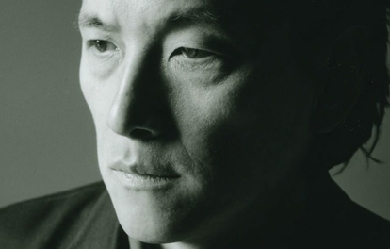
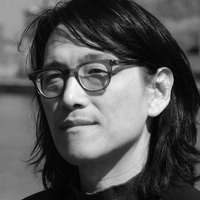
Li-Young Lee (李立揚, pinyin: Lǐ Lìyáng) (born August 19, 1957) is an American poet. He was born in Jakarta, Indonesia, to Chinese parents. His maternal great-grandfather was Yuan Shikai, China’s first Republican President, who attempted to make himself emperor. Lee’s father, who was a personal physician to Mao Zedong while in China, relocated his family to Indonesia, where he helped found Gamaliel University. His father was exiled and spent 19 months in an Indonesian prison camp in Macau. In 1959 the Lee family fled the country to escape anti-Chinese sentiment and after a five-year trek through Hong Kong and Japan, they settled in the United States in 1964. Li-Young Lee attended the University of Pittsburgh and the University of Arizona, and the State University of New York at Brockport. Development as a poet Lee attended the University of Pittsburgh, where he began to develop his love for writing. He had seen his father find his passion for ministry and as a result of his father reading to him and encouraging Lee to find his passion, Lee began to dive into the art of language. Lee’s writing has also been influenced by classic Chinese poets, such as Li Bai and Du Fu. Many of Lee’s poems are filled with themes of simplicity, strength, and silence. All are strongly influenced by his family history, childhood, and individuality. He writes with simplicity and passion which creates images that take the reader deeper and also requires his audience to fill in the gaps with their own imagination. These feelings of exile and boldness to rebel take shape as they provide common themes for poems. Lee’s influence on Asian American poetry Li-Young Lee has been an established Asian American poet who has been doing interviews for the past twenty years. Breaking the Alabaster Jar: Conversations with Li-Young Lee (BOA Editions, 2006, ed. Earl G. Ingersoll), is the first edited and published collection of interviews with an Asian American poet. In this book, Earl G. Ingersoll has collected interviews with the poet consisting of “conversational” questions meant to bring out Lee’s views on Asian American poetry, writing, and identity. Awards and honors * Lee has won numerous poetry awards: * 1986: Delmore Schwartz Memorial Award, from New York University, for Rose * 1988: Whiting Award * 1990: Lamont Poetry Selection for The City in Which I Love You * 1995: Lannan Literary Award * 1995: American Book Award, from the Before Columbus Foundation, for The Wingéd Seed: A Remembrance * 2002: William Carlos Williams Award for Book of My Nights (American Poets Continuum) Judge: Carolyn Kizer * 2003: Fellowship of the Academy of American Poets, which does not accept applications and which includes a $25,000 stipend * Fellowship, National Endowment for the Arts * Fellowship, John Simon Guggenheim Memorial Foundation * Grant, Illinois Arts Council * Grant, Commonwealth of Pennsylvania * Grant, Pennsylvania Council on the Arts Other recognition * 2011: Lee’s poem ″A Story″ was featured in the AP English Literature and Composition 2011 Free-Response Questions. Selected bibliography Poetry * * 1986: Rose. Rochester: BOA Editions Limited, ISBN 0-918526-53-1 * 1990: The City In Which I Love You. Rochester: BOA Editions Limited, ISBN 0-918526-83-3 * 2001: Book of My Nights. Rochester: BOA Editions Limited, ISBN 1-929918-08-9 * 2008: Behind My Eyes. New York: W.W. Norton & Co., ISBN 0-393-33481-3 Memoir * * The Wingéd Seed: A Remembrance. (hardcover) New York: Simon & Schuster, 1995. ASIN: B000NGRB2G (paperback) St. Paul: Ruminator, 1999. ISBN 1-886913-28-5 References Wikipedia—https://en.wikipedia.org/wiki/Li-Young_Lee
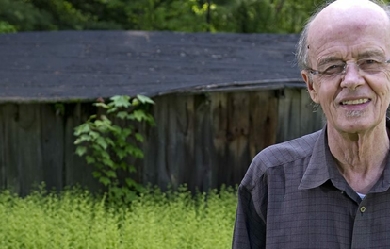
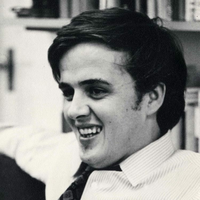
James Vincent Tate (December 8, 1943– July 8, 2015) was an American poet whose work earned him the Pulitzer Prize and the National Book Award. He was a professor of English at the University of Massachusetts Amherst and a member of the American Academy of Arts and Letters. Biography Tate was born in Kansas City, Missouri, where he lived with his mother and his grandparents in his grandparents’ house. His father, a pilot in World War II, had died in combat on April 11, 1944, before Tate was a year old. Tate and his mother moved out after seven years when she remarried. The eventual poet said he belonged to a gang in high school and had little interest in literature. He planned on being a gas station attendant as his uncle had been, but finding that his friends to his surprise were going to college, he applied to Kansas State College of Pittsburg (now Pittsburg State University) in 1961. Tate wrote his first poem a few months into college with no external motivation; he observed that poetry “became a private place that I was hugely drawn to, where I could let my daydreams—and my pain—come in completely disguised. I knew from the moment I started writing that I never wanted to be writing about my life.” In college he read Wallace Stevens and William Carlos Williams and was “in heaven”. He received his B.A. in 1965, going on to earn his M.F.A. from the University of Iowa’s famed Writer’s Workshop. During this period he was finally exposed to fellow poets and he became interested in surrealism, reading Max Jacob, Robert Desnos, and André Breton; for Benjamin Péret he expressed particular affection. Of poets writing in Spanish, César Vallejo “destroyed” him but he was not so taken by the lyricism or romanticism of Pablo Neruda or Federico García Lorca. He was married to Dara Wier. Tate died on July 8, 2015 at the age of 71. Career Tate taught creative writing at the University of California, Berkeley, Columbia University, and at the University of Massachusetts Amherst, where he worked from 1971 until his death in 2015. He was a member of the poetry faculty at the MFA Program for Poets & Writers, along with Dara Wier and Peter Gizzi. Dudley Fitts selected Tate’s first book of poems, The Lost Pilot (1967), for the Yale Series of Younger Poets while Tate was still a student at the Writers’ Workshop; Fitts praised Tate’s writing for its “natural grace.” Tate’s first volume of poetry, Cages, was published by Shepherd’s Press, Iowa City, 1966. Tate won the 1992 Pulitzer Prize and the Poetry Society of America’s William Carlos Williams Award in 1991 for his Selected Poems. In 1994, he won the National Book Award for his poetry collection Worshipful Company of Fletchers. Tate’s writing style is often described as surrealistic, comic and absurdist. His work has captivated other poets as diverse as John Ashbery and Dana Gioia. Regarding his own work, Tate said, “My characters usually are—or, I’d say most often, I don’t want to generalize too much—but most often they’re in trouble, and they’re trying to find some kind of life.” This view is supported by the poet Tony Hoagland’s observation that “his work of late has been in prose poems, in which his picaresque speaker or characters are spinning through life, inquisitive and clueless as Candide, trying to identify and get with the fiction of whatever world they are in.” In addition to many books of poetry, he published two books of prose, Dreams of a Robot Dancing Bee (2001) and The Route as Briefed (1999). Some of Tate’s additional awards included a National Institute of Arts and Letters Award, the Wallace Stevens Award, and fellowships from the Guggenheim Foundation and the National Endowment for the Arts. He was also a Chancellor of the Academy of American Poets. Published works Full-length poetry collections Dome of the Hidden Pavilion (Ecco Press, 2015) The Eternal Ones of the Dream: Selected Poems 1990-2010 (Ecco Press, 2012) The Ghost Soldiers (Ecco Press, 2008) Return to the City of White Donkeys (Ecco Press, 2004) Memoir of the Hawk (Ecco Press, 2002) Shroud of the Gnome (Ecco Press, 1997) Worshipful Company of Fletchers: Poems (Ecco Press, 1994)—winner of the National Book Award Selected Poems (Wesleyan University Press, 1991)—winner of the Pulitzer Prize and the William Carlos Williams Award Distance from Loved Ones (Wesleyan University Press, 1990) Reckoner (Wesleyan University Press, 1986) Constant Defender (Ecco Press, 1983) Riven Doggeries (Ecco Press, 1979) Viper Jazz (Wesleyan University Press, 1976) Absences: New Poems (Little, Brown & Co., 1972) Hints to Pilgrims (Halty Ferguson, 1971) The Oblivion Ha-Ha (Little, Brown & Co., 1970) The Lost Pilot (Yale University Press, 1967) Chapbooks The Zoo Club (Rain Taxi, 2011) Lost River (Sarabande Books, 2003) Police Story (Rain Taxi, 1999) Bewitched: 26 poems (Embers Handpress, Wales, illustration by Laurie Smith.) Just Shades (Parallel Editions, 1985, illustrated by John Alcorn) Land of Little Sticks (Metacom Press, 1981) Apology for Eating Geoffrey Movius’ Hyacinth (Unicorn Press, 1972) Amnesia People (Little Balkans Press, 1970) Wrong Songs (H. Ferguson, 1970) Shepherds of the Mist (Black Sparrow Press, 1969) The Torches (Unicorn Press, 1968) Prose Dreams of a Robot Dancing Bee: 44 Stories (Verse Press, 2002) The Route as Briefed (University of Michigan Press, 1999) Hottentot Ossuary (Temple Bar Bookshop, 1974) Collaborations Lucky Darryl (Release Press, 1977, a novel co-written with Bill Knott) Are You Ready, Mary Baker Eddy??? (Cloud Marauder Press, 1970, poems co-written with Bill Knott) In anthologies Tate’s work has been included in The Best American Poetry series numerous times, including in 2010, 2008, 2006, 2005, 2004, 2003, 2001, 1998, 1997, 1994, 1993, 1991, 1990, and 1988; his work was also in the The Norton Anthology of Modern and Contemporary Poetry. Honors and awards Tate was elected to the American Academy of Arts and Letters in 2004; other recognition includes: Pulitzer Prize for Poetry National Institute of Arts and Letters Award Guggenheim Fellowship National Endowment for the Arts Literature Fellowship in Poetry National Book Award for Poetry 1995 Wallace Stevens Award Yale Series of Younger Poets References Wikipedia—https://en.wikipedia.org/wiki/James_Tate_(writer)
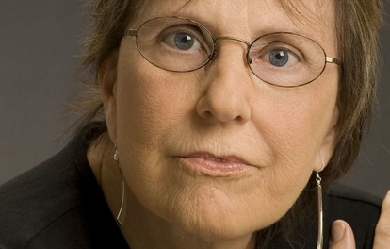
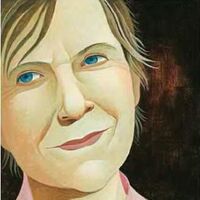
Rae Armantrout (born 13 April 1947) is an American poetess generally associated with the Language poets. Armantrout was born in Vallejo, California but grew up in San Diego. She has published ten books of poetry and has also been featured in a number of major anthologies. Armantrout currently teaches at the University of California, San Diego, where she is Professor of Poetry and Poetics.
.jpg?locale=fr)
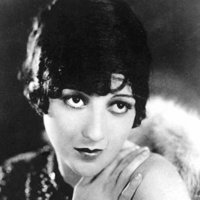
Elinor Morton Wylie (September 7, 1885– December 16, 1928) was an American poet and novelist popular in the 1920s and 1930s. “She was famous during her life almost as much for her ethereal beauty and personality as for her melodious, sensuous poetry.” Life Family and childhood Elinor Wylie was born Elinor Morton Hoyt in Somerville, New Jersey, into a socially prominent family. Her grandfather, Henry M. Hoyt, was a governor of Pennsylvania. Her aunt was Helen Hoyt, a minor poet. Her parents were Henry Martyn Hoyt, Jr., who would be United States Solicitor General from 1903 to 1909; and Anne Morton McMichael (born July 31, 1861 in Pa.). Their other children were: Henry Martyn Hoyt (May 8, 1887, in Pa.– August 25, 1920 in New York City) who married Alice Gordon Parker (1885–1951) Constance A. Hoyt (May 20, 1889, in Pa.– 1923 in Bavaria, Germany) who married Ferdinand von Stumm-Halberg on March 30, 1910, in Washington, D.C. Morton McMichael Hoyt (April 4, 1899, in Washington, D.C. - August 21, 1949, in Philadelphia, Pennsylvania), three times married and divorced Eugenia Bankhead, known as “Sister” and sister of Tallulah Bankhead Nancy McMichael Hoyt (born October 1, 1902, in Washington, D.C.) romance novelist who wrote Elinor Wylie: The Portrait of an Unknown Woman (1935). She married Edward Davison Curtis; they divorced in 1932. Elinor was educated at Miss Baldwin’s School (1893–97), Mrs. Flint’s School (1897–1901), and finally Holton-Arms School (1901–04). She was “trained for the life of a debutante and a society wife”. “As a girl she was already bookish—not in the languid or inactive sense but girded, embraced by books, between whose covers lay the word-perfect world she sought. She grew into a tall, dark beauty in the classic 1920s style. Some who knew her claimed she was the most striking woman they ever met.” Marriages and scandal The future Elinor Wylie became notorious, during her lifetime, for her multiple affairs and marriages. On the rebound from an earlier romance she met her first husband, Harvard graduate Philip Simmons Hichborn (1882–1912), the son of a rear-admiral. She eloped with him and they were married on December 13, 1906. She had a son by him, Philip Simmons Hichborn, Jr., born September 22, 1907 in Washington, D.C. However, “Hichborn, a would-be poet, was emotionally unstable”, and Elinor found herself in an unhappy marriage. She also found herself being stalked by Horace Wylie, “a Washington lawyer with a wife and three children”, who "was 17 years older than Elinor. He stalked her for years, appearing wherever she was.” Following the death in November 1910 of Elinor’s father, she left her husband and son, and began living with Wylie. “After being ostracized by their families and friends and mistreated in the press, the couple moved to England” where they lived “under the assumed name of Waring; this event caused a scandal in the Washington, D.C., social circles Elinor Wylie had frequented”. Philip Simmons Hitchborn Sr. committed suicide in 1912. With Horace Wylie’s encouragement, in 1912 Elinor anonymously published Incidental Number, a small book of poems she had written in the previous decade. Between 1914 and 1916, Elinor tried to have a second child, but “suffered several miscarriages... as well as a stillbirth and... a premature child who died after one week.” After Wylie’s wife agreed to a divorce, the couple returned to the United States. Elinor and Horace Wylie married in 1916; “By that time, however, the couple were drawing apart.” Elinor began spending time in literary circles in New York City—"her friends there numbered John Peale Bishop, Edmund Wilson, John Dos Passos, Sinclair Lewis, Carl Van Vechten, and... William Rose Benét.” Her last marriage (in 1923) was to William Rose Benét (February 2, 1886– May 4, 1950), who was part of her literary circle and brother of Stephen Vincent Benét. By the time of Wylie’s third book of poetry, Trivial Breath in 1928, her marriage with Benét was also in trouble, and they had agreed to live apart. She moved to England and fell in love with the husband of a friend, Henry de Clifford Woodhouse, to whom she wrote a series of 19 sonnets which she published privately in 1928 as Angels and Earthly Creatures (also included in her 1929 book of the same name). Career Elinor Wylie’s literary friends encouraged her to submit her verse to Poetry magazine. Poetry published four of her poems, including what became “her most widely anthologized poem, 'Velvet Shoes’”, in May 1920. With Benét now acting as her informal literary agent, "Wylie left her second husband and moved to New York in 1921". The Dictionary of Literary Biography (DLB) says: “She captivated the literary world with her slender, tawny-haired beauty, personal elegance, acid wit, and technical virtuosity.” In 1921, Wylie’s first commercial book of poetry, Nets to Catch the Wind, was published. The book, “which many critics still consider to contain her best poems,” was an immediate success. Edna St. Vincent Millay and Louis Untermeyer praised the work. The Poetry Society awarded her its Julia Ellsworth Ford Prize. In 1923 she published Black Armor, which was “another successful volume of verse”. The New York Times enthused: “There is not a misplaced word or cadence in it. There is not an extra syllable.” 1923 also saw the publication of Wylie’s first novel, Jennifer Lorn, to considerable fanfare. Van Vechten “organized a torchlight parade through Manhattan to celebrate its publication”. She would write "four historical novels widely admired when first published, although interest in them diminished in the masculine era of the 1940s and 50s". She worked as the poetry editor of Vanity Fair magazine between 1923 and 1925. She was an editor of Literary Guild, and a contributing editor of The New Republic, from 1926 through 1928. Wylie was an “admirer of the British Romantic poets, and particularly of Shelley, to a degree that some critics have seen as abnormal”. “A friend claimed she was 'positively dotty’ about Shelley, not just making him her model in art and life but on occasion actually 'seeing’ the dead poet.” She wrote a 1926 novel, The Orphan Angel, in which “the great young poet is rescued from drowning off an Italian cape and travels to America, where he encounters the dangers of the frontier.” By the time of Wylie’s third book of poetry, Trivial Breath in 1928, her marriage with Benét was also in trouble, and they had agreed to live apart. She moved to England and fell in love with the husband of a friend, Henry de Clifford Woodhouse, to whom she wrote a series of 19 sonnets which she published privately in 1928 as Angels and Earthly Creatures (also included in her 1929 book of the same name). Elinor Wylie died of a stroke at Benét’s New York apartment, while working with him preparing the 1929 Angels and Earthly Creatures for publication. Writing Poetry Wylie’s “highly polished, articulate, and deeply emotional verse shows the influence of the metaphysical poets,” such as John Donne, George Herbert, and Andrew Marvell. If her poetry is derivative of anyone, though, that would be “of the British Romantic poets, and particularly of Shelley,” whom she admired “to a degree that some critics have seen as abnormal.” In her first book, Nets to Catch the Wind, “Stanzas and lines were quite short, and the effect of her images was of a highly detailed, polished surface. Often, her poems expressed a dissatisfaction with the realities of life on the part of a speaker who aspired to a more gratifying world of art and beauty.” Louis Untermeyer wrote that the book “impresses immediately because of its brilliance... which, at first, seems to sparkle without burning.... It is the brilliance of moon-light corruscating on a plain of ice. But if Mis. Wylie seldom allows her verses to grow agitated, she never permits them to remain dull.... in 'August’ the sense of heat is conveyed by tropic luxuriance and contrast; in 'The Eagle and the Mole’ she lifts didacticism to a proud level... never has snow-silence been more unerringly communicated than in ‘Velvet Shoes.’” Other notable poems include “Wild Peaches,” “A Proud Lady,” “Sanctuary,” “Winter Sleep,” “Madman’s Song,” “The Church-Bell,” and “A Crowded Trolley Car.” In Black Armor (1923), “the intellect has grown more fiery, the mood has grown warmer, and the craftsmanship is more dazzling than ever.... she varies the perfect modulation with rhymes that are delightfully acrid and unique departures which never fail of success... from the nimble dexterity of a rondo like 'Peregrine’ to the introspective poignance of ‘Self Portrait,’ from the fanciful 'Escape’ to the grave mockery of ‘Let No Charitable Hope.’” Trivial Breath (1928) “is the work of a poet in transition. At times the craftsman is uppermost; at times the creative genius.” Wylie’s biographer Stanley Olson called the sonnets that begin 1929's Angels and Earthly Creatures “perhaps, her finest achievement.... The love in these lyrics is not a private love, not a variety of confession, but an abstracted one.... The nineteen sonnets are paced with strength, energy and undeniable feeling, sustained as a group by shifting through the complexities and vicissitudes of love.” Untermeyer also praised the sonnets, but added: “The other poems share this intensity. 'This Corruptible’ is both visionary and philosophic; 'O Virtuous Light’ deals with that piercing clarity, the intuition... The other poems are scarcely less uplifted, finding their summit in 'Hymn to Earth, which is one of her deeper poems and one which is certain to endure.” Fiction Wylie’s four novels “are delicately wrought and filled with ironic fancy”. They were "widely admired when first published, although interest in them diminished in the masculine era of the 1940s and 50s".
_-_Google_Art_Project.jpg?locale=fr)
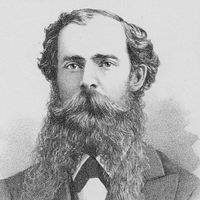
Henry Clay Work (October 1, 1832– June 8, 1884) was an American composer and songwriter. Early life and education Work was born in Middletown, Connecticut, to Alanson and Amelia (Forbes) Work. His father opposed slavery, and Work was himself an active abolitionist and Union supporter. His family’s home became a stop on the Underground Railroad, assisting runaway slaves to freedom in Canada, for which his father was once imprisoned. Work was self-taught in music. By the time he was 23, he worked as a printer in Chicago, specializing in setting musical type. He allegedly composed in his head as he worked, without a piano, using the noise of the machinery as an inspiration. His first published song was “We Are Coming, Sister Mary”, which eventually became a staple in Christy’s Minstrels shows. Career Work produced much of his best material during the Civil War. In 1862 he published “Kingdom Coming” using his own lyrics based upon snippets of Negro speech he had heard. This use of slave dialect (Irish too was a favourite) tended to limit the appeal of Work’s works and make them frowned upon today. However, “Kingdom Coming” appeared in the Jerome Kern show “Good Morning, Dearie” on Broadway in 1921, and was heard in the background in the 1944 Judy Garland film “Meet Me in St. Louis”. 1862 also saw his novelty song “Grafted Into the Army”, followed in 1863 by “Babylon is Fallen” ("Don’t you see the black clouds risin’ ober yonder"), “The Song of a Thousand Years”, and “God Save the Nation”. His 1864 effort “Wake Nicodemus” was popular in minstrel shows. In 1865 he wrote his greatest hit, “Marching Through Georgia”, inspired by Sherman’s march to the sea at the end of the previous year. Thanks to its lively melody, the song was immensely popular, its million sheet-music sales being unprecedented. It is a cheerful marching song and has since been pressed into service many times, including by Princeton University as a football fight song. Timothy Shay Arthur’s play Ten Nights in a Barroom, had Work’s 1864 “Come Home, Father”, a dirgesome song bemoaning the demon drink: too mawkish for modern tastes, but always sung at Temperance Meetings. Settling into sentimental balladry, Work had significant post-Civil War success with the “The Lost Letter”, and “The Ship That Never Returned”—a tune reused in the "Wreck of the Old 97" and “MTA”. A massive hit was “My Grandfather’s Clock”, published in 1876, which was introduced by Sam Lucas in Hartford, Connecticut, and again secured more than a million sales of the sheet music, along with popularizing the phrase “grandfather clock” to describe a longcase clock.” By 1880 Work was living in New York City, giving his occupation as a musician. He died in Hartford two years later at the age of 51. He was survived by his wife, Sarah Parker Work, and one of their four children. Henry Clay Work was inducted into the Songwriters Hall of Fame in 1970. He was a distant cousin to Frances Work, a great-grandmother of Diana, Princess of Wales. Songs Among the best-known of Henry Clay Work’s 75 compositions are: “Kingdom Coming” (c. 1863) “Come Home, Father” (1864) “Wake Nicodemus” (1864) “Marching Through Georgia” (1865) “The Ship That Never Returned” (1868) “Crossing the Grand Sierras” (1870) “My Grandfather’s Clock” (1876) References Wikipedia—https://en.wikipedia.org/wiki/Henry_Clay_Work
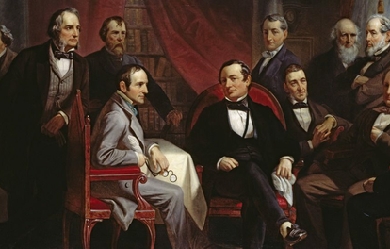
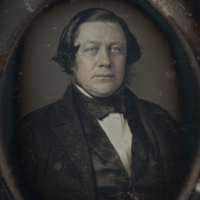
Washington Irving (April 3, 1783– November 28, 1859) was an American short story writer, essayist, biographer, historian, and diplomat of the early 19th century. He is best known for his short stories “Rip Van Winkle” (1819) and “The Legend of Sleepy Hollow” (1820), both of which appear in his book The Sketch Book of Geoffrey Crayon, Gent. His historical works include biographies of George Washington, Oliver Goldsmith, and Muhammad, and several histories of 15th-century Spain dealing with subjects such as Christopher Columbus, the Moors and the Alhambra. Irving served as the U.S. ambassador to Spain from 1842 to 1846. He made his literary debut in 1802 with a series of observational letters to the Morning Chronicle, written under the pseudonym Jonathan Oldstyle. After moving to England for the family business in 1815, he achieved international fame with the publication of The Sketch Book of Geoffrey Crayon, Gent. in 1819–20. He continued to publish regularly—and almost always successfully—throughout his life, and just eight months before his death (at age 76, in Tarrytown, New York), completed a five-volume biography of George Washington. Irving, along with James Fenimore Cooper, was among the first American writers to earn acclaim in Europe, and Irving encouraged American authors such as Nathaniel Hawthorne, Herman Melville, Henry Wadsworth Longfellow, and Edgar Allan Poe. Irving was also admired by some European writers, including Walter Scott, Lord Byron, Thomas Campbell, Francis Jeffrey, and Charles Dickens. As America’s first genuine internationally best-selling author, Irving advocated for writing as a legitimate profession and argued for stronger laws to protect American writers from copyright infringement. Biography Early years Washington Irving’s parents were William Irving, Sr., originally of Quholm, Shapinsay, Orkney, and Sarah (née Sanders), Scottish-English immigrants. They married in 1761 while William was serving as a petty officer in the British Navy. They had eleven children, eight of whom survived to adulthood. Their first two sons, each named William, died in infancy, as did their fourth child, John. Their surviving children were: William, Jr. (1766), Ann (1770), Peter (1771), Catherine (1774), Ebenezer (1776), John Treat (1778), Sarah (1780), and Washington. The Irving family settled in Manhattan, New York City, and was part of the city’s small, vibrant merchant class when Washington Irving was born on April 3, 1783, the same week city residents learned of the British ceasefire that ended the American Revolution; Irving’s mother named him after the hero of the revolution, George Washington. At age six, with the help of a nanny, Irving met his namesake, who was then living in New York after his inauguration as president in 1789. The president blessed young Irving, an encounter Irving later commemorated in a small watercolor painting, which still hangs in his home today. The Irvings lived at 131 William Street at the time of Washington Irving’s birth. The family later moved across the street to 128 William St. Several of Washington Irving’s older brothers became active New York merchants, and they encouraged their younger brother’s literary aspirations, often supporting him financially as he pursued his writing career. An uninterested student, Irving preferred adventure stories and drama and, by age fourteen, was regularly sneaking out of class in the evenings to attend the theater. The 1798 outbreak of yellow fever in Manhattan prompted his family to send him to healthier climes upriver, and Irving was dispatched to stay with his friend James Kirke Paulding in Tarrytown, New York. It was in Tarrytown that Irving became familiar with the nearby town of Sleepy Hollow, with its quaint Dutch customs and local ghost stories. Irving made several other trips up the Hudson as a teenager, including an extended visit to Johnstown, New York, where he passed through the Catskill mountain region, the setting for “Rip Van Winkle”. "[O]f all the scenery of the Hudson", Irving wrote later, “the Kaatskill Mountains had the most witching effect on my boyish imagination”. The 19-year-old Irving began writing letters to the New York Morning Chronicle in 1802, submitting commentaries on the city’s social and theater scene under the name of Jonathan Oldstyle. The name, which purposely evoked the writer’s Federalist leanings, was the first of many pseudonyms Irving would employ throughout his career. The letters brought Irving some early fame and moderate notoriety. Aaron Burr, a co-publisher of the Chronicle, was impressed enough to send clippings of the Oldstyle pieces to his daughter, Theodosia, while writer Charles Brockden Brown made a trip to New York to recruit Oldstyle for a literary magazine he was editing in Philadelphia. Concerned for his health, Irving’s brothers financed an extended tour of Europe from 1804 to 1806. Irving bypassed most of the sites and locations considered essential for the development of an upwardly mobile young man, to the dismay of his brother William. William wrote that, though he was pleased his brother’s health was improving, he did not like the choice to “gallop through Italy... leaving Florence on your left and Venice on your right”. Instead, Irving honed the social and conversational skills that would later make him one of the world’s most in-demand guests. “I endeavor to take things as they come with cheerfulness”, Irving wrote, “and when I cannot get a dinner to suit my taste, I endeavor to get a taste to suit my dinner”. While visiting Rome in 1805, Irving struck up a friendship with the American painter Washington Allston, and nearly allowed himself to be persuaded into following Allston into a career as a painter. “My lot in life, however”, Irving said later, “was differently cast”. First major writings Irving returned from Europe to study law with his legal mentor, Judge Josiah Ogden Hoffman, in New York City. By his own admission, he was not a good student, and barely passed the bar in 1806. Irving began actively socializing with a group of literate young men he dubbed “The Lads of Kilkenny”. Collaborating with his brother William and fellow Lad James Kirke Paulding, Irving created the literary magazine Salmagundi in January 1807. Writing under various pseudonyms, such as William Wizard and Launcelot Langstaff, Irving lampooned New York culture and politics in a manner similar to today’s Mad magazine. Salmagundi was a moderate success, spreading Irving’s name and reputation beyond New York. In its seventeenth issue, dated November 11, 1807, Irving affixed the nickname “Gotham”—an Anglo-Saxon word meaning “Goat’s Town”—to New York City. In late 1809, while mourning the death of his seventeen-year-old fiancée Matilda Hoffman, Irving completed work on his first major book, A History of New-York from the Beginning of the World to the End of the Dutch Dynasty, by Diedrich Knickerbocker (1809), a satire on self-important local history and contemporary politics. Prior to its publication, Irving started a hoax akin to today’s viral marketing campaigns; he placed a series of missing person advertisements in New York newspapers seeking information on Diedrich Knickerbocker, a crusty Dutch historian who had allegedly gone missing from his hotel in New York City. As part of the ruse, Irving placed a notice—allegedly from the hotel’s proprietor—informing readers that if Mr. Knickerbocker failed to return to the hotel to pay his bill, he would publish a manuscript Knickerbocker had left behind. Unsuspecting readers followed the story of Knickerbocker and his manuscript with interest, and some New York city officials were concerned enough about the missing historian that they considered offering a reward for his safe return. Riding the wave of public interest he had created with his hoax, Irving—adopting the pseudonym of his Dutch historian—published A History of New York on December 6, 1809, to immediate critical and popular success. “It took with the public”, Irving remarked, “and gave me celebrity, as an original work was something remarkable and uncommon in America”. Today, the surname of Diedrich Knickerbocker, the fictional narrator of this and other Irving works, has become a nickname for Manhattan residents in general. After the success of A History of New York, Irving searched for a job and eventually became an editor of Analectic Magazine, where he wrote biographies of naval heroes like James Lawrence and Oliver Perry. He was also among the first magazine editors to reprint Francis Scott Key’s poem “Defense of Fort McHenry”, which would later be immortalized as “The Star-Spangled Banner”, the national anthem of the United States. Like many merchants and New Yorkers, Irving originally opposed the War of 1812, but the British attack on Washington, D.C. in 1814 convinced him to enlist. He served on the staff of Daniel Tompkins, governor of New York and commander of the New York State Militia. Apart from a reconnaissance mission in the Great Lakes region, he saw no real action. The war was disastrous for many American merchants, including Irving’s family, and in mid-1815, he left for England to attempt to salvage the family trading company. He remained in Europe for the next seventeen years. Irving was elected a member of the American Antiquarian Society in 1815. Life in Europe The Sketch Book Irving spent the next two years trying to bail out the family firm financially but eventually had to declare bankruptcy. With no job prospects, Irving continued writing throughout 1817 and 1818. In the summer of 1817, he visited Walter Scott, beginning a lifelong personal and professional friendship. Irving continued writing: he composed the short story “Rip Van Winkle” overnight while staying with his sister Sarah and her husband, Henry van Wart in Birmingham, England, a place that also inspired other works. In October 1818, Irving’s brother William secured for Irving a post as chief clerk to the United States Navy, and urged him to return home. Irving turned the offer down, opting to stay in England to pursue a writing career. In the spring of 1819, Irving sent to his brother Ebenezer in New York a set of short prose pieces that he asked be published as The Sketch Book of Geoffrey Crayon, Gent. The first installment, containing “Rip Van Winkle”, was an enormous success, and the rest of the work would be equally successful; it was issued in 1819–1820 in seven installments in New York, and in two volumes in London ("The Legend of Sleepy Hollow" would appear in the sixth issue of the New York edition, and the second volume of the London edition). Like many successful authors of this era, Irving struggled against literary bootleggers. In England, some of his sketches were reprinted in periodicals without his permission, a legal practice as there was no international copyright law at the time. To prevent further piracy in Britain, Irving paid to have the first four American installments published as a single volume by John Miller in London. Irving appealed to Walter Scott for help procuring a more reputable publisher for the remainder of the book. Scott referred Irving to his own publisher, London powerhouse John Murray, who agreed to take on The Sketch Book. From then on, Irving would publish concurrently in the United States and Britain to protect his copyright, with Murray being his English publisher of choice. Irving’s reputation soared, and for the next two years, he led an active social life in Paris and Britain, where he was often feted as an anomaly of literature: an upstart American who dared to write English well. Bracebridge Hall and Tales of a Traveller With both Irving and publisher John Murray eager to follow up on the success of The Sketch Book, Irving spent much of 1821 travelling in Europe in search of new material, reading widely in Dutch and German folk tales. Hampered by writer’s block—and depressed by the death of his brother William—Irving worked slowly, finally delivering a completed manuscript to Murray in March 1822. The book, Bracebridge Hall, or The Humorists, A Medley (the location was based loosely on Aston Hall, occupied by members of the Bracebridge family, near his sister’s home in Birmingham) was published in June 1822. The format of Bracebridge was similar to that of The Sketch Book, with Irving, as Crayon, narrating a series of more than fifty loosely connected short stories and essays. While some reviewers thought Bracebridge to be a lesser imitation of The Sketch Book, the book was well received by readers and critics. “We have received so much pleasure from this book”, wrote critic Francis Jeffrey in the Edinburgh Review, “that we think ourselves bound in gratitude... to make a public acknowledgement of it.” Irving was relieved at its reception, which did much to cement his reputation with European readers. Still struggling with writer’s block, Irving traveled to Germany, settling in Dresden in the winter of 1822. Here he dazzled the royal family and attached himself to Mrs. Amelia Foster, an American living in Dresden with her five children. Irving was particularly attracted to Mrs. Foster’s 18-year-old daughter Emily and vied in frustration for her hand. Emily finally refused his offer of marriage in the spring of 1823. He returned to Paris and began collaborating with playwright John Howard Payne on translations of French plays for the English stage, with little success. He also learned through Payne that the novelist Mary Wollstonecraft Shelley was romantically interested in him, though Irving never pursued the relationship. In August 1824, Irving published the collection of essays Tales of a Traveller—including the short story “The Devil and Tom Walker”—under his Geoffrey Crayon persona. “I think there are in it some of the best things I have ever written”, Irving told his sister. But while the book sold respectably, Traveller was dismissed by critics, who panned both Traveller and its author. “The public have been led to expect better things”, wrote the United States Literary Gazette, while the New-York Mirror pronounced Irving “overrated”. Hurt and depressed by the book’s reception, Irving retreated to Paris where he spent the next year worrying about finances and scribbling down ideas for projects that never materialized. Spanish books While in Paris, Irving received a letter from Alexander Hill Everett on January 30, 1826. Everett, recently the American Minister to Spain, urged Irving to join him in Madrid, noting that a number of manuscripts dealing with the Spanish conquest of the Americas had recently been made public. Irving left for Madrid and enthusiastically began scouring the Spanish archives for colorful material. With full access to the American consul’s massive library of Spanish history, Irving began working on several books at once. The first offspring of this hard work, A History of the Life and Voyages of Christopher Columbus, was published in January 1828. The book was popular in the United States and in Europe and would have 175 editions published before the end of the century. It was also the first project of Irving’s to be published with his own name, instead of a pseudonym, on the title page. Irving was invited to stay at the palace of the Duke of Gor, who gave him unfettered access to his library containing many medieval manuscripts. Chronicle of the Conquest of Granada was published a year later, followed by Voyages and Discoveries of the Companions of Columbus in 1831. Irving’s writings on Columbus are a mixture of history and fiction, a genre now called romantic history. Irving based them on extensive research in the Spanish archives, but also added imaginative elements aimed at sharpening the story. The first of these works is the source of the durable myth that medieval Europeans believed the Earth was flat. (See Myth of the flat earth.) According to the popular book, Columbus proved the Earth was round. In 1829, Irving moved into Granada’s ancient palace Alhambra, “determined to linger here”, he said, “until I get some writings under way connected with the place”. Before he could get any significant writing underway, however, he was notified of his appointment as Secretary to the American Legation in London. Worried he would disappoint friends and family if he refused the position, Irving left Spain for England in July 1829. Secretary to the American legation in London Arriving in London, Irving joined the staff of American Minister Louis McLane. McLane immediately assigned the daily secretary work to another man and tapped Irving to fill the role of aide-de-camp. The two worked over the next year to negotiate a trade agreement between the United States and the British West Indies, finally reaching a deal in August 1830. That same year, Irving was awarded a medal by the Royal Society of Literature, followed by an honorary doctorate of civil law from Oxford in 1831. Following McLane’s recall to the United States in 1831 to serve as Secretary of Treasury, Irving stayed on as the legation’s chargé d’affaires until the arrival of Martin Van Buren, President Andrew Jackson’s nominee for British Minister. With Van Buren in place, Irving resigned his post to concentrate on writing, eventually completing Tales of the Alhambra, which would be published concurrently in the United States and England in 1832. Irving was still in London when Van Buren received word that the United States Senate had refused to confirm him as the new Minister. Consoling Van Buren, Irving predicted that the Senate’s partisan move would backfire. “I should not be surprised”, Irving said, “if this vote of the Senate goes far toward elevating him to the presidential chair”. Return to America Washington Irving arrived in New York, after seventeen years abroad, on May 21, 1832. That September, he accompanied the U.S. Commissioner on Indian Affairs, Henry Leavitt Ellsworth, along with companions Charles La Trobe and Count Albert-Alexandre de Pourtales, on a surveying mission deep in Indian Territory, now known as Oklahoma. At the completion of his western tour, Irving traveled through Washington, D.C. and Baltimore, where he became acquainted with the politician and novelist John Pendleton Kennedy. Frustrated by bad investments, Irving turned to writing to generate additional income, beginning with A Tour on the Prairies, a work which related his recent travels on the frontier. The book was another popular success and also the first book written and published by Irving in the United States since A History of New York in 1809. In 1834, he was approached by fur magnate John Jacob Astor, who convinced Irving to write a history of his fur trading colony in the American Northwest, now known as Astoria, Oregon. Irving made quick work of Astor’s project, shipping the fawning biographical account titled Astoria in February 1836. In 1835, Irving, Astor, and a few others founded the Saint Nicholas Society in the City of New York. During an extended stay at Astor’s, Irving met the explorer Benjamin Bonneville, who intrigued Irving with his maps and stories of the territories beyond the Rocky Mountains. When the two met in Washington, D.C. several months later, Bonneville opted to sell his maps and rough notes to Irving for $1,000. Irving used these materials as the basis for his 1837 book The Adventures of Captain Bonneville. These three works made up Irving’s “western” series of books and were written partly as a response to criticism that his time in England and Spain had made him more European than American. In the minds of some critics, especially James Fenimore Cooper and Philip Freneau, Irving had turned his back on his American heritage in favor of English aristocracy. Irving’s western books, particularly A Tour on the Prairies, were well received in the United States, though British critics accused Irving of “book-making”. In 1835, Irving purchased a “neglected cottage” and its surrounding riverfront property in Tarrytown, New York. The house, which he named Sunnyside in 1841, required constant repair and renovation over the next twenty years. With costs of Sunnyside escalating, Irving reluctantly agreed in 1839 to become a regular contributor to The Knickerbocker magazine, writing new essays and short stories under the Knickerbocker and Crayon pseudonyms. He was regularly approached by aspiring young authors for advice or endorsement, including Edgar Allan Poe, who sought Irving’s comments on “William Wilson” and “The Fall of the House of Usher”. Irving also championed America’s maturing literature, advocating stronger copyright laws to protect writers from the kind of piracy that had initially plagued The Sketch Book. Writing in the January 1840 issue of Knickerbocker, he openly endorsed copyright legislation pending in the U.S. Congress. “We have a young literature”, he wrote, “springing up and daily unfolding itself with wonderful energy and luxuriance, which... deserves all its fostering care”. The legislation did not pass. In 1841, he was elected in the National Academy of Design as an Honorary Academician. Irving at this time also began a friendly correspondence with the English writer Charles Dickens and hosted the author and his wife at Sunnyside during Dickens’s American tour in 1842. Minister to Spain In 1842, after an endorsement from Secretary of State Daniel Webster, President John Tyler appointed Irving as Minister to Spain. Irving was surprised and honored, writing, “It will be a severe trial to absent myself for a time from my dear little Sunnyside, but I shall return to it better enabled to carry it on comfortably”. While Irving hoped his position as Minister would allow him plenty of time to write, Spain was in a state of perpetual political upheaval during most of his tenure, with a number of warring factions vying for control of the twelve-year-old Queen Isabella II. Irving maintained good relations with the various generals and politicians, as control of Spain rotated through Espartero, Bravo, then Narvaez. However, the politics and warfare were exhausting, and Irving—homesick and suffering from a crippling skin condition—grew quickly disheartened: I am wearied and at times heartsick of the wretched politics of this country. . . . The last ten or twelve years of my life, passed among sordid speculators in the United States, and political adventurers in Spain, has shewn me so much of the dark side of human nature, that I begin to have painful doubts of my fellow man; and look back with regret to the confiding period of my literary career, when, poor as a rat, but rich in dreams, I beheld the world through the medium of my imagination and was apt to believe men as good as I wished them to be. With the political situation in Spain relatively settled, Irving continued to closely monitor the development of the new government and the fate of Isabella. His official duties as Spanish Minister also involved negotiating American trade interests with Cuba and following the Spanish parliament’s debates over slave trade. He was also pressed into service by the American Minister to the Court of St. James’s in London, Louis McLane, to assist in negotiating the Anglo-American disagreement over the Oregon border that newly elected president James K. Polk had vowed to resolve. Final years and death Returning from Spain in 1846, Irving took up permanent residence at Sunnyside and began work on an “Author’s Revised Edition” of his works for publisher George Palmer Putnam. For its publication, Irving had made a deal that guaranteed him 12 percent of the retail price of all copies sold. Such an agreement was unprecedented at that time. On the death of John Jacob Astor in 1848, Irving was hired as an executor of Astor’s estate and appointed, by Astor’s will, as first chairman of the Astor library, a forerunner to the New York Public Library. As he revised his older works for Putnam, Irving continued to write regularly, publishing biographies of the writer and poet Oliver Goldsmith in 1849 and the 1850 work about the Islamic prophet Muhammad. In 1855, he produced Wolfert’s Roost, a collection of stories and essays he had originally written for The Knickerbocker and other publications, and began publishing at intervals a biography of his namesake, George Washington, a work which he expected to be his masterpiece. Five volumes of the biography were published between 1855 and 1859. Irving traveled regularly to Mount Vernon and Washington, D.C. for his research, and struck up friendships with Presidents Millard Fillmore and Franklin Pierce. He was elected an Associate Fellow of the American Academy of Arts and Sciences in 1855. He continued to socialize and keep up with his correspondence well into his seventies, and his fame and popularity continued to soar. “I don’t believe that any man, in any country, has ever had a more affectionate admiration for him than that given to you in America”, wrote Senator William C. Preston in a letter to Irving. “I believe that we have had but one man who is so much in the popular heart”. By 1859, author Oliver Wendell Holmes Sr. noted that Sunnyside had become “next to Mount Vernon, the best known and most cherished of all the dwellings in our land”. On the night of November 28, 1859, at 9:00 pm, only eight months after completing the final volume of his Washington biography, Washington Irving died of a heart attack in his bedroom at Sunnyside at the age of 76. Legend has it that his last words were: “Well, I must arrange my pillows for another night. When will this end?” He was buried under a simple headstone at Sleepy Hollow cemetery on December 1, 1859. Irving and his grave were commemorated by Henry Wadsworth Longfellow in his 1876 poem, “In The Churchyard at Tarrytown”, which concludes with: How sweet a life was his; how sweet a death! Living, to wing with mirth the weary hours, Or with romantic tales the heart to cheer; Dying, to leave a memory like the breath Of summers full of sunshine and of showers, A grief and gladness in the atmosphere. Legacy Literary reputation Irving is largely credited as the first American Man of Letters, and the first to earn his living solely by his pen. Eulogizing Irving before the Massachusetts Historical Society in December 1859, his friend, the poet Henry Wadsworth Longfellow, acknowledged Irving’s role in promoting American literature: “We feel a just pride in his renown as an author, not forgetting that, to his other claims upon our gratitude, he adds also that of having been the first to win for our country an honourable name and position in the History of Letters”. Irving perfected the American short story, and was the first American writer to place his stories firmly in the United States, even as he poached from German or Dutch folklore. He is also generally credited as one of the first to write both in the vernacular, and without an obligation to the moral or didactic in his short stories, writing stories simply to entertain rather than to enlighten. Irving also encouraged would-be writers. As George William Curtis noted, there “is not a young literary aspirant in the country, who, if he ever personally met Irving, did not hear from him the kindest words of sympathy, regard, and encouragement”. Some critics, however—including Edgar Allan Poe—felt that while Irving should be given credit for being an innovator, the writing itself was often unsophisticated. “Irving is much over-rated”, Poe wrote in 1838, “and a nice distinction might be drawn between his just and his surreptitious and adventitious reputation—between what is due to the pioneer solely, and what to the writer”. A critic for the New-York Mirror wrote: “No man in the Republic of Letters has been more overrated than Mr. Washington Irving”. Some critics noted especially that Irving, despite being an American, catered to British sensibilities and, as one critic noted, wrote “of and for England, rather than his own country”. Other critics were inclined to be more forgiving of Irving’s style. William Makepeace Thackeray was the first to refer to Irving as the “ambassador whom the New World of Letters sent to the Old”, a banner picked up by writers and critics throughout the 19th and 20th centuries. “He is the first of the American humorists, as he is almost the first of the American writers”, wrote critic H.R. Hawless in 1881, “yet belonging to the New World, there is a quaint Old World flavor about him”. Early critics often had difficulty separating Irving the man from Irving the writer—"The life of Washington Irving was one of the brightest ever led by an author", wrote Richard Henry Stoddard, an early Irving biographer—but as years passed and Irving’s celebrity personality faded into the background, critics often began to review his writings as all style, no substance. “The man had no message”, said critic Barrett Wendell. Yet, critics conceded that despite Irving’s lack of sophisticated themes—Irving biographer Stanley T. Williams could be scathing in his assessment of Irving’s work—most agreed he wrote elegantly. Impact on American culture Irving popularized the nickname “Gotham” for New York City, later used in Batman comics and movies as the name of Gotham City, and is credited with inventing the expression “the almighty dollar”. The surname of his Dutch historian, Diedrich Knickerbocker, is generally associated with New York and New Yorkers, and can still be seen across the jerseys of New York’s professional basketball team, albeit in its more familiar, abbreviated form, reading simply Knicks. In Bushwick, Brooklyn, a neighborhood of New York City, there are two parallel streets named Irving Avenue and Knickerbocker Avenue; the latter forms the core of the neighborhood’s shopping district. One of Irving’s most lasting contributions to American culture is in the way Americans perceive and celebrate Christmas. In his 1812 revisions to A History of New York, Irving inserted a dream sequence featuring St. Nicholas soaring over treetops in a flying wagon—a creation others would later dress up as Santa Claus. In his five Christmas stories in The Sketch Book, Irving portrayed an idealized celebration of old-fashioned Christmas customs at a quaint English manor, that depicted harmonious warm-hearted English Christmas festivities he experienced while staying in Aston Hall, Birmingham, England, that had largely been abandoned. He used text from The Vindication of Christmas (London 1652) of old English Christmas traditions, he had transcribed into his journal as a format for his stories. The book contributed to the revival and reinterpretation of the Christmas holiday in the United States. In his biography of Christopher Columbus, Irving introduced the erroneous idea that Europeans believed the world to be flat prior to the discovery of the New World. Borrowed from Irving, the flat-Earth myth has been taught in schools as fact to many generations of Americans. The American painter John Quidor based many of his paintings on scenes from the works of Irving about Dutch New York, including such paintings as Ichabod Crane Flying from the Headless Horseman (1828), The Return of Rip Van Winkle (1849), and The Headless Horseman Pursuing Ichabod Crane (1858). Works * Letters of Jonathan Oldstyle 1802 * Salmagundi 1807–1808 * A History of New York 1809 * The Sketch Book of Geoffrey Crayon, Gent. 1819–1820 * Bracebridge Hall 1822 * Tales of a Traveller 1824 * A History of the Life and Voyages of Christopher Columbus 1828 * Chronicle of the Conquest of Granada 1829 * Voyages and Discoveries of the Companions of Columbus 1831 * Tales of the Alhambra 1832 * The Crayon Miscellany 1835 * Astoria 1836 * The Adventures of Captain Bonneville 1837 * The Life of Oliver Goldsmith 1840 * Biography and Poetical Remains of the Late Margaret Miller Davidson 1841 * Mahomet and His Successors 1849 * Wolfert's Roost 1855 * The Life of George Washington 1855–1859 References Wikipedia—https://en.wikipedia.org/wiki/Washington_Irving
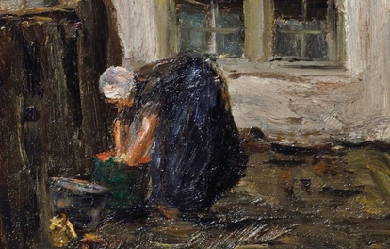

Linda Pastan (born May 27, 1932 in New York) is an American poet of Jewish background. From 1991–1995 she was Poet Laureate of Maryland. She is known for writing short poems that address topics like family life, domesticity, motherhood, the female experience, aging, death, loss and the fear of loss, as well as the fragility of life and relationships. Her most recent collections of poetry include Insomnia, Traveling Light, and Queen of a Rainy Country. Life Pastan has published at least 12 books of poetry and a number of essays. Her awards include the Dylan Thomas Award, a Pushcart Prize, the Alice Fay di Castagnola Award (Poetry Society of America), the Bess Hokin Prize (Poetry Magazine), the 1986 Maurice English Poetry Award (for A Fraction of Darkness), the Charity Randall Citation of the International Poetry Forum, and the 2003 Ruth Lilly Poetry Prize. She also received the Radcliffe College Distinguished Alumnae Award. Two of her collections of poems were nominated for the National Book Award and one for the Los Angeles Times Book Prize. Family As of 2011, she lives in Potomac, Maryland with her husband Ira Pastan, an accomplished physician and researcher. She is the mother of novelist Rachel Pastan; Washington, D.C. chef and restaurateur Peter Pastan; and Atlanta nephrologist Stephen Pastan.
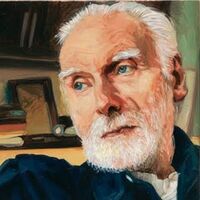
Jack Gilbert (February 18, 1925 – November 13, 2012) was an American poet. Born and raised in the Pittsburgh, Pennsylvania neighborhood of East Liberty, he attended Peabody High School then worked as a door-to-door salesman, an exterminator, and a steelworker. He graduated from the University of Pittsburgh in 1954, where he and his classmate Gerald Stern developed a serious interest in poetry and writing. Later, he received his Master's degree from San Francisco State University in 1963. Career His work is distinguished by simple lyricism and straightforward clarity of tone. His first book of poetry, Views of Jeopardy, (1962) won the Yale Younger Poets Prize and was nominated for the Pulitzer Prize, while Gilbert was quickly recognized and made into something of a media darling. He then retreated from his earlier activity in the San Francisco poetry scene, where he had participated in Jack Spicer's Poetry as Magic workshop, and moved to Europe. Living on a Guggenheim Fellowship he toured 15 countries as a lecturer on American Literature for the U.S. State Department and lived in England, Denmark, and Greece. Nearly the whole of his career after the publication of his first book of poetry was marked by what he described as a self-imposed isolation. His books of poetry were few and far between; however he continuously maintained his writing and contributed to The American Poetry Review, Genesis West, The Quarterly, Poetry, Ironwood, The Kenyon Review, and The New Yorker. Personal life Gilbert was a close friend of the poet Linda Gregg who was once his student and with whom he was in a relationship for six years. He was married to Michiko Nogami, another former student and a language instructor based in San Francisco, now deceased, about whom he wrote many of his poems. He was also in a significant long term relationship with the poet Laura Ulewicz during the late fifties and early sixties in San Francisco. Gilbert died on November 13, 2012 in Berkeley, California. He was 87. On April 15, 2013 it was announced that Gilbert's Collected Poems was a finalist for the 2013 Pulitzer Prize in Poetry. The Pulitzer jury's citation read: “a half century of poems reflecting a creative author’s commitment to living fully and honestly and to producing straightforward work that illuminates everyday experience with startling clarity.” Awards 1962 Yale Series of Younger Poets Competition for Views of Jeopardy 1964 Guggenheim Fellowship 1994 Lannan Literary Award for Poetry 1983 Stanley Kunitz Prize for Monolithos 1983 the American Poetry Review Prize for Monolithos 1983 finalist for the Pulitzer Prize for Poetry for Monolithos 2005 National Book Critics Circle Award for Refusing Heaven 2013 finalist for the Pulitzer Prize for Poetry for Collected Poems References Wikipedia - http://en.wikipedia.org/wiki/Jack_Gilbert
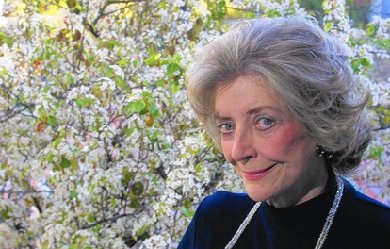
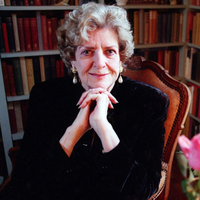
Carolyn Ashley Kizer (December 10, 1925– October 9, 2014) was an American poet of the Pacific Northwest whose works reflect her feminism. She won the Pulitzer Prize in 1985. According to an article at the Center for the Study of the Pacific Northwest, "Kizer reached into mythology in poems like “Semele Recycled”; into politics, into feminism, especially in her series of poems called “Pro Femina”; into science, the natural world, music, and translations and commentaries on Japanese and Chinese literatures".
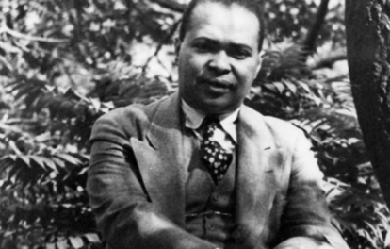
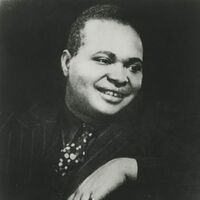
Countee Cullen (1903 – January 9, 1946) was an American poet who was a leading figure in the Harlem Renaissance. Early life Countee Cullen was possibly born on May 30, although due to conflicting accounts of his early life, a general application of the year of his birth as 1903 is reasonable. He was either born in New York, Baltimore, or Lexington, Kentucky, with his widow being convinced he was born in Lexington. Cullen was possibly abandoned by his mother, and reared by a woman named Mrs. Porter, who was probably his paternal grandmother. Porter brought young Countee to Harlem when he was nine. She died in 1918. No known reliable information exists of his childhood until 1918 when he was taken in, or adopted, by Reverend and Mrs Frederick A. Cullen of Harlem, New York City. The Reverend was the local minister, and founder, of the Salem Methodist Episcopal Church. DeWitt Clinton High School At some point, Cullen entered the DeWitt Clinton High School in Manhattan. He excelled academically at the school while emphasizing his skills at poetry and in oratorical contest. At DeWitt, he was elected into the honor society, editor of the weekly newspaper, and elected vice-president of his graduating class. In January 1922, he graduated with honors in Latin, Greek, Mathematics, and French. New York University and Harvard University After graduating high school, he entered New York University (NYU). In 1923, he won second prize in the Witter Bynner undergraduate poetry contest, which was sponsored by the Poetry Society of America, with a poem entitled The Ballad of the Brown Girl. At about this time, some of his poetry was promulgated in the national periodicals Harper's, Crisis, Opportunity, The Bookman, and Poetry. The ensuing year he again placed second in the contest and finally winning it in 1925. Cullen competed in a poetry contest sponsored by Opportunity. and came in second with To One Who Say Me Nay, while losing to Langston Hughes's The Weary Blues. Sometime thereafter, Cullen graduated from NYU as one of eleven students selected to Phi Beta Kappa. Cullen entered Harvard in 1925, to pursue a masters in English, about the same time his first collection of poems, Color, was published. Written in a careful, traditional style, the work celebrated black beauty and deplored the effects of racism. The book included "Heritage" and "Incident", probably his most famous poems. "Yet Do I Marvel", about racial identity and injustice, showed the influence of the literary expression of William Wordsworth and William Blake, but its subject was far from the world of their Romantic sonnets. The poet accepts that there is God, and "God is good, well-meaning, kind", but he finds a contradiction of his own plight in a racist society: he is black and a poet. Cullen's Color was a landmark of the Harlem Renaissance. He graduated with a masters degree in 1926. Professional career This 1920s artistic movement produced the first large body of work in the United States written by African Americans. However, Cullen considered poetry raceless, although his 'The Black Christ' took a racial theme, lynching of a black youth for a crime he did not commit. Countee Cullen was very secretive about his life. His real mother did not contact him until he became famous in the 1920s. The movement was centered in the cosmopolitan community of Harlem, in New York City. During the 1920s, a fresh generation of writers emerged, although a few were Harlem-born. Other leading figures included Alain Locke (The New Negro, 1925), James Weldon Johnson (Black Manhattan, 1930), Claude McKay (Home to Harlem, 1928), Hughes (The Weary Blues, 1926), Zora Neale Hurston (Jonah's Gourd Vine, 1934), Wallace Thurman (Harlem: A Melodrama of Negro Life, 1929), Jean Toomer (Cane, 1923) and Arna Bontemps (Black Thunder, 1935). The movement was accelerated by grants and scholarships and supported by such white writers as Carl Van Vechten. He worked as assistant editor for Opportunity magazine, where his column, "The Dark Tower", increased his literary reputation. Cullen's poetry collections The Ballad of the Brown Girl (1927) and Copper Sun (1927) explored similar themes as Color, but they were not so well received. Cullen's Guggenheim Fellowship of 1928 enabled him to study and write abroad. He met Nina Yolande Du Bois, daughter of W.E.B. DuBois, the leading black intellectual. At that time Yolande was involved romantically with a popular band leader. Between the years 1928 and 1934, Cullen traveled back and forth between France and the United States. Cullen married Yolande DuBois in April 1928. The marriage was the social event of the decade, but the marriage did not fare well, and he divorced in 1930. It is rumored that Cullen was a homosexual, and his relationship with Harold Jackman was a significant factor in the divorce. Jackman was a teacher whom Van Vechten had used as a model in his novel Nigger Heaven (1926). By 1929 Cullen had published four volumes of poetry. The title poem of The Black Christ and Other Poems (1929) was criticized for the use of Christian religious imagery - Cullen compared the lynching of a black man to the crucification of Jesus. As well as writing books himself, Cullen promoted the work of other black writers. But by 1930 Cullen's reputation as a poet waned. In 1932 appeared his only novel, One Way to Heaven, a social comedy of lower-class blacks and the bourgeoisie in New York City. From 1934 until the end of his life, he taught English, French, and creative writing at Frederick Douglass Junior High School in New York City. During this period, he also wrote two works for young readers, The Lost Zoo (1940), poems about the animals who perished in the Flood, and My Lives and How I Lost Them, an autobiography of his cat. In the last years of his life, Cullen wrote mostly for the theatre. He worked with Arna Bontemps to adapt his 1931 novel, God Sends Sunday into St. Louis Woman (1946, publ. 1971) for the musical stage. Its score was composed by Harold Arlen and Johnny Mercer, both white. The Broadway musical, set in poor black neighborhood in St. Louis, was criticized by black intellectuals for creating a negative image of black Americans. Cullen also translated the Greek tragedy Medea by Euripides, which was published in 1935 as The Medea and Some Poems with a collection of sonnets and short lyrics. In 1940, Cullen married Ida Mae Robertson, whom he had known for ten years. Poetry * "I Have a Rendezvous With Life" (1920s, poem) * Color Harper & brothers, 1925; Ayer, 1993, ISBN 9780881431551 [includes the poems "Incident," "Near White," "Heritage," and others], illustrations by Charles Cullen * Copper Sun, Harper & brothers, 1927 * The Ballad of the Brown Girl Harper & Brothers, 1927, illustrations by Charles Cullen * The Black Christ and Other Poems, Harper & brothers, 1929, illustrations by Charles Cullen * Tableau (1925) * One way to heaven, Harper & brothers, 1932 * Any Human to Another (1934) * The Medea and Some Other Poems (1935) * The lost zoo, Harper & brothers, 1940, Illustrations by Charles Sebree * My lives and how I lost them, Harper & Brothers Publishers, 1942 * On These I Stand: An Anthology of the Best Poems of Countee Cullen, Harper & Brothers Publishers, 1947 * My Soul's High Song: The Collected Writings of Countee Cullen (1991) * Countee Cullen: Collected Poems, Library of America, 2011, ISBN 9781598530834 Prose * One Way to Heaven (1931) * The Lost Zoo (1940) * My Lives and How I Lost Them (1942) Drama St. Louis Woman (1946) References Wikipedia - http://en.wikipedia.org/wiki/Countee_Cullen By Gerald Early Poet, anthologist, novelist, translator, children's writer, and playwright, Countee Cullen is something of a mysterious figure. He was born 30 March 1903, but it has been difficult for scholars to place exactly where he was born, with whom he spent the very earliest years of his childhood, and where he spent them. New York City and Baltimore have been given as birthplaces. Cullen himself, on his college transcript at New York University, lists Louisville, Kentucky, as his place of birth. A few years later, when he had achieved considerable literary fame during the era known as the New Negro or Harlem Renaissance, he was to assert that his birthplace was New York City, which he continued to claim for the rest of his life. Cullen’s second wife, Ida, and some of his closest friends, including Langston Hughes and Harold Jackman, said that Cullen was born in Louisville. As James Weldon Johnson wrote of Cullen in The Book of American Negro Poetry (rev. ed., 1931): "There is not much to say about these earlier years of Cullen--unless he himself should say it." And Cullen--revealing a temperament that was not exactly secretive but private, less a matter of modesty than a tendency toward being encoded and tactful--never in his life said anything more clarifying. Sometime before 1918, Cullen was adopted by the Reverend Frederick A. and Carolyn Belle (Mitchell) Cullen. It is impossible to state with certainty how old Cullen was when he was adopted or how long he knew the Cullens before he was adopted. Apparently he went by the name of Countee Porter until 1918. By 1921 he became Countee P. Cullen and eventually just Countee Cullen. According to Harold Jackman, Cullen's adoption was never "official." That is to say it was never consummated through proper state-agency channels. Indeed, it is difficult to know if Cullen was ever legally an orphan at any stage in his childhood. Frederick Cullen was a pioneer black activist minister. He established his Salem Methodist Episcopal Church in a storefront mission upon his arrival in New York City in 1902, and in 1924 moved the Church to the site of a former white church in Harlem where he could boast of a membership of more than twenty-five hundred. Countee Cullen himself stated in Caroling Dusk (1927) that he was "reared in the conservative atmosphere of a Methodist parsonage," and it is clear that his foster father was a particularly strong influence. The two men were very close, often traveling abroad together. But as Cullen evidences a decided unease in his poetry over his strong and conservative Christian training and the attraction of his pagan inclinations, his feelings about his father may have been somewhat ambivalent. On the one hand, Frederick Cullen was a puritanical Christian patriarch, and Cullen was never remotely that in his life. On the other hand, it has been suggested that Frederick Cullen was also something of an effeminate man. (He was dressed in girl's clothing by his poverty-stricken mother well beyond the acceptable boyhood age for such transvestism.) That Cullen was homosexual or of a decidedly ambiguous sexual nature may also be attributable to his foster father's contrary influence as both fire-breathing Christian and latent homosexual. Cullen was an outstanding student at DeWitt Clinton High School (1918-1921). He edited the school's newspaper, assisted in editing the literary magazine, Magpie, and began to write poetry that achieved notice. While in high school Cullen won his first contest, a citywide competition, with the poem "I Have a Rendezvous with Life," a nonracial poem inspired by Alan Seeger's "I Have a Rendezvous with Death." At New York University (1921-1925), he wrote most of the poems for his first three volumes: Color (1925), Copper Sun (1927), and The Ballad of the Brown Girl (1927). If any event signaled the coming of the Harlem Renaissance, it was the precocious success of this rather shy black boy who, more than any other black literary figure of his generation, was being touted and bred to become a major crossover literary figure. Here was a black man with considerable academic training who could, in effect, write "white" verse-ballads, sonnets, quatrains, and the like--much in the manner of Keats and the British Romantics, (albeit, on more than one occasion, tinged with racial concerns) with genuine skill and compelling power. He was certainly not the first Negro to attempt to write such verse but he was first to do so with such extensive education and with such a complete understanding of himself as a poet. Only two other black American poets before Cullen could be taken so seriously as self-consciously considered and proficient poets: Phillis Wheatley and Paul Laurence Dunbar. If the aim of the Harlem Renaissance was, in part, the reinvention of the native-born Negro as a being who can be assimilated while decidedly retaining something called "a racial self-consciousness," then Cullen fit the bill. If "I Have a Rendezvous with Life" was the opening salvo in the making of Culln's literary reputation, then the 1924 publication of "Shroud of Color" in H. L. Mencken's American Mercury confirmed the advent of the black boy wonder as one of the most exciting American poets on the scene. After graduating Phi Beta Kappa from NYU, Cullen earned a masters degree in English and French from Harvard (1925-1927). Between high school and his graduation from Harvard, Cullen was the most popular black poet and virtually the most popular black literary figure in America. One of Cullen's poems and his popular column in Opportunity inspired A’Leila Walker--heiress of Madame C. J. Walker's hair-care products fortune and owner of a salon where the black and white literati gathered in the late 1920s--to name her salon "The Dark Tower." Cullen won more major literary prizes than any other black writer of the 1920s: first prize in the Witter Bynner Poetry contest in 1925, Poetry magazine's John Reed Memorial Prize, the Amy Spingarn Award of the Crisis magazine, second prize in Opportunity magazine's first poetry contest, and second prize in the poetry contest of Palms. In addition, he was the second black to win a Guggenheim Fellowship. Cullen was also at the center of one of the major social events of the Harlem Renaissance: On 9 April 1928 he married Yolande Du Bois, only child of W E. B. Du Bois, in one of the most lavish weddings in black New York history. This wedding was to symbolize the union of the grand black intellectual patriarch and the new breed of younger Negroes who were responsible for much of the excitement of the Renaissance. It was an apt meshing of personalities as Cullen and Du Bois were both conservative by nature and ardent traditionalists. That the marriage turned out so disastrously and ended so quickly (they divorced in 1930) probably adversely affected Cullen, who remarried in 1940. In 1929, Cullen published The Black Christ and Other Poems to less than his accustomed glowing reviews. He was bitterly disappointed that The Black Christ, his longest and in many respects most complicated poem, was considered by most critics and reviewers to be his weakest and least distinguished. From the 1930s until his death, Cullen wrote a great deal less, partly hampered by his job as a French teacher at Frederick Douglass Junior High. (His most famous student was James Baldwin.) But he wrote noteworthy, even significant work in a number of genres. His novel One Way to Heaven, published in 1934, rates as one of the better black satires and is one of the three important fictional retrospectives of the Harlem Renaissance, the others being Wallace Thurman's Infants of the Spring and George S. Schuyler's Black No More. Cullen's The Medea is the first major translation of a classical work by a twentieth-century black American writer. Cullen's contributions to children's literature, The Lost Zoo and *Christopher Cat, are among the more clever and engaging books of children's verse, written at a time when there was not much published in this area by black writers. He also completed perhaps some of his best, certainly some of his more darkly complex, sonnets. He was also working on a musical with Arna Bontemps called St. Louis Woman (based on Bontemps's novel God Sends Sunday) at the time of his death from high blood pressure and uremic poisoning on 9 January 1946. For many years after his death, Cullen's reputation was eclipsed by that of other Harlem Renaissance writers, particularly Langston Hughes and Zora Neale Hurston, and his work had gone out of print. In the last few years, however, there has been a resurgence of interest in Cullen's life and work and his writings are being reissued. See: Blanche E. Ferguson, Countee Cullen and the Negor Renaissance, 1966. Margaret Perry, A Bio-Bibliography of Countee P. Cullen, 1903-1946, 1966. Arna Bontemps, ed., The Harlem Renaissance Remembered, 1972. Arthur P. Davis, From the Dark Tower: Afro-American Writers, 1900 to 1960, 1974. Alan R. Shucard, Countee Cullen, 1984. Gerald Early, ed., My Soul’s High Song: The Collected Writings of Countee Cullen, Voice of the Harlem Renaissance, 1991. From The Oxford Companion to African American Literature. Copyright © 1997 by Oxford University Press. Reference www.english.illinois.edu/maps/poets/a_f/cullen/life.htm By Clifton H. Johnson Cullen, Countee (30 May 1903?-9 Jan. 1946), poet and playwright, was the son of Elizabeth Thomas Lucas. The name of his father is not known. The place of his birth has been variously cited as Louisville, Kentucky, New York City, and Baltimore, Maryland. Although in later years Cullen claimed to have been born in New York City, it probably was Louisville, which he consistently named as his birthplace in his youth and which he wrote on his registration form for New York University. His mother died in Louisville in 1940. In 1916 Cullen was enrolled in Public School Number 27 in the Bronx, New York, under the name of Countee L. Porter, with no accent on the first "e." At that time he was living with Amanda Porter, who generally is assumed to have been his grandmother. Shortly after she died in October 1917, Countee went to live with the Reverend Frederick Asbury Cullen, pastor of Salem Methodist Episcopal Church in Harlem, and his wife, the former Carolyn Belle Mitchell. Countee was never formally adopted by the Cullens, but he later claimed them as his natural parents and in 1918 assumed the name Countée P. (Porter) Cullen. In 1925 he dropped the middle initial. Cullen was an outstanding student in every school he attended. He entered the respected, almost exclusively white, Dewitt Clinton High School for boys in Manhattan in 1918. He became a member of the Arista honor society, and in his senior year he received the Magpie Cup in recognition of his achievements. He served as vice president of the senior class and was associate editor of the 1921 Magpie, the school's literary magazine, and editor of the Clinton News. He won an oratorical contest sponsored by the film actor Douglas Fairbanks and served as treasurer of the Inter-High School Poetry Society and as chairperson of the Senior Publications Committee. His poetry appeared regularly in school publications and he received wider public recognition in 1921 when his poem, "I Have a Rendezvous with Life," won first prize in a citywide contest sponsored by the Empire Federation of Women's Clubs. At New York University, which Cullen attended on a New York State Regents scholarship, he was elected to Phi Beta Kappa in his junior year and received a bachelor's degree in 1925. His poems were published frequently in the school magazine, The Arch, of which he eventually became poetry editor. In 1926 he received a master's degree from Harvard University and won the Crisis magazine award in poetry. When Cullen's first collection of poetry, Color, was published in 1925 during his senior year at New York University, he had already achieved national fame. His poems had been published in Bookman, American Mercury, Harper's, Century, Nation, Poetry, Crisis, the Messenger, Palms, and Opportunity. He had won second prize in 1923 in the Witter Bynner Undergraduate Poetry Contest sponsored by the Poetry Society of America. He placed second in that contest again in 1924 but won first prize in 1925, when he also won the John Reed Memorial Prize awarded by Poetry magazine. Color received universal critical acclaim. Alain Locke wrote in Opportunity (Jan. 1926): "Ladies and Gentlemen! A genius! Posterity will laugh at us if we do not proclaim him now. COLOR transcends all of the limiting qualifications that might be brought forward if it were merely a work of talent." The volume contains epitaphs, only two of which could be considered racial; love poems; and poems on other traditional subjects. But the significant theme--as the title implies--was race, and it was the poems dealing with racial subjects that captured the attention of the critics. Cullen was praised for portraying the experience of African Americans in the vocabulary and poetic forms of the classical tradition but with a personal intimacy. His second volume of poetry, Copper Sun, published in 1927 also by Harper and Brothers (the publisher of all his books), won first prize in literature from the Harmon Foundation. There are fewer racial poems in this collection than in Color, however, they express an anger that was not so pronounced in the earlier volume. The majority of the poems in Copper Sun deal with life and love and other traditional themes of nineteenth-century poetry. Cullen edited the October 1926 special issue of Palms devoted to African-American poets, and he collected and edited Caroling Dusk in 1927, an anthology of poetry by African Americans. Cullen was by this time generally recognized by critics and the public as the leading literary figure of the Harlem Renaissance. Gerald Early in My Soul's High Song (1991), Cullen's collected writings, said, "He was, indeed, a boy wonder, a young handsome black Ariel ascending, a boyish, brown-skinned titan who, in the early and mid-twenties, embodied many of the hopes, aspirations, and maturing expressive possibilities of his people." Cullen said that he wanted to be known as a poet, not a "Negro poet." This did not affect his popularity, although some Harlem Renaissance writers, including Langston Hughes, interpreted this to mean that he wanted to deny his race, an interpretation endorsed by some later scholars. A reading of his poetry reveals this view to be unfounded. In fact his major poems, and most of those still being printed in anthologies, have racial themes. Cullen expounded his view in the Brooklyn Eagle (10 Feb. 1924): If I am going to be a poet at all, I am going to be POET and not NEGRO POET. This is what has hindered the development of artists among us. Their one note has been the concern with their race. That is all very well, none of us can get away from it. I cannot at times. You will see it in my verse. The consciousness of this is too poignant at times. I cannot escape it. But what I mean is this: I shall not write of negro subjects for the purpose of propaganda. That is not what a poet is concerned with. Of course, when the emotion rising out of the fact that I am a negro is strong, I express it. But that is another matter. From 1926 to 1928, Cullen was assistant editor to Charles S. Johnson of Opportunity (subtitled "A Journal of Negro Life") for which he also wrote a feature column, "The Dark Tower." On the one hand, in his reviews and commentaries, he called upon African-American writers to create a representative and respectable race literature, and on the other insisted that the African-American artist should not be bound by race or restricted to racial themes. The year 1928 was a watershed for Cullen. He received a Guggenheim Fellowship to study in Paris, the third volume of his poetry, The Ballad of a Brown Girl, was published, and, after a long courtship, he married Nina Yolande Du Bois. Her father, W. E. B. Du Bois, the exponent of the "Talented Tenth" concept, rejoiced at bringing the young genius into his family. The wedding, performed by Cullen's foster father, was the social event of the decade in Harlem. After a brief honeymoon in Philadelphia, Cullen left for Paris and was soon joined by his bride. The couple experienced difficulties from the beginning. Finally, after informing her father that Cullen had confessed that he was sexually attracted to men, Nina Yolande sued for divorce, which was obtained in Paris in 1930. Cullen continued to write and publish after 1928, but his works were no longer universally acclaimed. The Black Christ and Other Poems, completed under the Guggenheim Fellowship, was published in 1929 while he was abroad. His only novel, One Way to Heaven, was published in 1932, and The Medea and Some Poems in 1935. He wrote two books for juveniles, The Lost Zoo (1940) and My Lives and How I Lost Them (1942). His stage adaptation of One Way to Heaven was produced by several amateur and professional theater groups but remained one of his several unpublished plays. Critics gave these works mixed reviews at best. Cullen's reputation as a writer rests on his poetry. His novel is not an important work, and it received little attention from the critics. He rejected so-called jazz and free-style as inappropriate forms of poetic expression. He was a romantic lyric poet and a great admirer of John Keats and Edna St. Vincent Millay. While his arch traditionalism and lack of originality in style had been seen in Color as minor flaws, they came to be viewed as major deficiencies in his later works. Cullen's fall from grace with the critics had little effect on his popularity. He remained much in demand for lectures and readings by both white and black groups. In 1931 alone he read his poetry and lectured in various institutions in seventeen states and Canada. Some of his poems were set to music by Charles Marsh, Virgil Thomson, William Schuman, William Lawrence, Margaret Bonds, Clarence Cameron White, Emerson Whithorne, and Noel DaCosta. However, even though he continued to live with his foster father, royalties and lecture fees were insufficient income for subsistence. He searched for academic positions and was offered professorships at Sam Huston College (named for an Iowa farmer, not the Texas senator), Dillard University, Fisk University, Tougaloo College, and West Virginia State College. There is no clear explanation of why he did not accept any of the positions. In 1932 he became a substitute teacher in New York public schools and became a full-time teacher of English and French at Frederick Douglass Junior High School in 1934, a position he held until his death (caused by complications of high blood pressure) in New York City, and where he taught and inspired the future novelist and essayist James Baldwin. Cullen married Ida Mae Roberson in 1940, and they apparently enjoyed a happy married life. Cullen's chief creative interest during the last year of his life was in writing the script for St. Louis Woman, a musical based on Arna Bontemps's novel God Sends Sunday. With music by Harold Arlen and lyrics by Johnny Mercer, St. Louis Woman opened on Broadway on 30 March 1946. Although the production was opposed by Walter White of the National Association for the Advancement of Colored People and some other civil rights activists as an unfavorable representation of African Americans, it ran for four months and was revived several times by amateurs and one professional group between 1959 and 1980. On These I Stand, a collection of poems that Cullen had selected as his best, was published posthumously in 1947. The 135th Street Branch of the New York Public Library was named for Cullen in 1951, and a public school in New York City and one in Chicago also bear his name. For a few brief years Cullen was the most celebrated African-American writer in the nation and by many accounts is considered one of the major voices of the Harlem Renaissance. Source: http://www.anb.org/articles/16/16-00391.html; American National Biography Online Feb. 2000. Access Date: Wed Mar 21 11:27:39 2001 Copyright (c) 2000 American Council of Learned Societies. Published by Oxford University Press. All rights reserved. Reference www.english.illinois.edu/maps/poets/a_f/cullen/life.htm
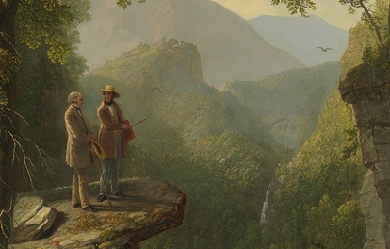
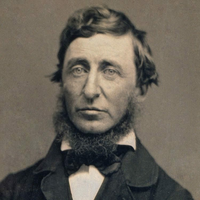
Henry David Thoreau (see name pronunciation; July 12, 1817– May 6, 1862) was an American author, poet, philosopher, abolitionist, naturalist, tax resister, development critic, surveyor, and historian. A leading transcendentalist, Thoreau is best known for his book Walden, a reflection upon simple living in natural surroundings, and his essay Resistance to Civil Government (also known as Civil Disobedience), an argument for disobedience to an unjust state. Thoreau’s books, articles, essays, journals, and poetry total over 20 volumes. Among his lasting contributions are his writings on natural history and philosophy, where he anticipated the methods and findings of ecology and environmental history, two sources of modern-day environmentalism. His literary style interweaves close natural observation, personal experience, pointed rhetoric, symbolic meanings, and historical lore, while displaying a poetic sensibility, philosophical austerity, and “Yankee” love of practical detail. He was also deeply interested in the idea of survival in the face of hostile elements, historical change, and natural decay; at the same time he advocated abandoning waste and illusion in order to discover life’s true essential needs. He was a lifelong abolitionist, delivering lectures that attacked the Fugitive Slave Law while praising the writings of Wendell Phillips and defending abolitionist John Brown. Thoreau’s philosophy of civil disobedience later influenced the political thoughts and actions of such notable figures as Leo Tolstoy, Mahatma Gandhi, and Martin Luther King, Jr. Thoreau is sometimes cited as an anarchist. Though Civil Disobedience seems to call for improving rather than abolishing government—"I ask for, not at once no government, but at once a better government"—the direction of this improvement points toward anarchism: “'That government is best which governs not at all;' and when men are prepared for it, that will be the kind of government which they will have.” Richard T. Drinnon reproaches Thoreau for his ambiguity when writing on governance, noting that Thoreau’s “sly satire, his liking for wide margins for his writing, and his fondness for paradox provided ammunition for widely divergent interpretations of 'Civil Disobedience’.” Name pronunciation and physical appearance Amos Bronson Alcott and Thoreau’s aunt each wrote that “Thoreau” is pronounced like the word “thorough” (pronounced THUR-oh—/ˈθʌroʊ/—in General American, but more precisely THOR-oh—/ˈθɔːroʊ/—in 19th-century New England). Edward Waldo Emerson wrote that the name should be pronounced “Thó-row”, with the h sounded and stress on the first syllable. Among modern-day American speakers, it is perhaps more commonly pronounced thə-ROH—/θəˈroʊ/—with stress on the second syllable. In appearance he was homely, with a nose that he called “my most prominent feature.” Of his face and disposition, Ellery Channing wrote: “His face, once seen, could not be forgotten. The features were quite marked: the nose aquiline or very Roman, like one of the portraits of Caesar (more like a beak, as was said); large overhanging brows above the deepest set blue eyes that could be seen, in certain lights, and in others gray,—eyes expressive of all shades of feeling, but never weak or near-sighted; the forehead not unusually broad or high, full of concentrated energy and purpose; the mouth with prominent lips, pursed up with meaning and thought when silent, and giving out when open with the most varied and unusual instructive sayings.” Life Early life and education, 1817–1836 Henry David Thoreau was born David Henry Thoreau in Concord, Massachusetts, into the “modest New England family” of John Thoreau (a pencil maker) and Cynthia Dunbar. His paternal grandfather was born in Jersey. His maternal grandfather, Asa Dunbar, led Harvard’s 1766 student “Butter Rebellion”, the first recorded student protest in the Colonies. David Henry was named after a recently deceased paternal uncle, David Thoreau. He did not become “Henry David” until after college, although he never petitioned to make a legal name change. He had two older siblings, Helen and John Jr., and a younger sister, Sophia. Thoreau’s birthplace still exists on Virginia Road in Concord. The house has recently been restored by the Thoreau Farm Trust, a nonprofit organization, and is now open to the public. He studied at Harvard College between 1833 and 1837. He lived in Hollis Hall and took courses in rhetoric, classics, philosophy, mathematics, and science. He was a member of the Institute of 1770 (now the Hasty Pudding Club). A legend proposes that Thoreau refused to pay the five-dollar fee for a Harvard diploma. In fact, the master’s degree he declined to purchase had no academic merit: Harvard College offered it to graduates “who proved their physical worth by being alive three years after graduating, and their saving, earning, or inheriting quality or condition by having Five Dollars to give the college.” His comment was: “Let every sheep keep its own skin”, a reference to the tradition of diplomas being written on sheepskin vellum. Return to Concord, 1836–1842 The traditional professions open to college graduates—law, the church, business, medicine—failed to interest Thoreau, so in 1835 he took a leave of absence from Harvard, during which he taught school in Canton, Massachusetts. After he graduated in 1837, he joined the faculty of the Concord public school, but resigned after a few weeks rather than administer corporal punishment. He and his brother John then opened a grammar school in Concord in 1838 called Concord Academy. They introduced several progressive concepts, including nature walks and visits to local shops and businesses. The school ended when John became fatally ill from tetanus in 1842 after cutting himself while shaving. He died in his brother Henry’s arms. Upon graduation Thoreau returned home to Concord, where he met Ralph Waldo Emerson through a mutual friend. Emerson took a paternal and at times patronizing interest in Thoreau, advising the young man and introducing him to a circle of local writers and thinkers, including Ellery Channing, Margaret Fuller, Bronson Alcott, Nathaniel Hawthorne and his son Julian Hawthorne, who was a boy at the time. Emerson urged Thoreau to contribute essays and poems to a quarterly periodical, The Dial, and Emerson lobbied editor Margaret Fuller to publish those writings. Thoreau’s first essay published there was Aulus Persius Flaccus, an essay on the playwright of the same name, published in The Dial in July 1840. It consisted of revised passages from his journal, which he had begun keeping at Emerson’s suggestion. The first journal entry on October 22, 1837, reads, “'What are you doing now?' he asked. ‘Do you keep a journal?’ So I make my first entry to-day.” Thoreau was a philosopher of nature and its relation to the human condition. In his early years he followed Transcendentalism, a loose and eclectic idealist philosophy advocated by Emerson, Fuller, and Alcott. They held that an ideal spiritual state transcends, or goes beyond, the physical and empirical, and that one achieves that insight via personal intuition rather than religious doctrine. In their view, Nature is the outward sign of inward spirit, expressing the “radical correspondence of visible things and human thoughts”, as Emerson wrote in Nature (1836). On April 18, 1841, Thoreau moved into the Emerson house. There, from 1841–1844, he served as the children’s tutor, editorial assistant, and repair man/gardener. For a few months in 1843, he moved to the home of William Emerson on Staten Island, and tutored the family sons while seeking contacts among literary men and journalists in the city who might help publish his writings, including his future literary representative Horace Greeley. Thoreau returned to Concord and worked in his family’s pencil factory, which he continued to do for most of his adult life. He rediscovered the process to make a good pencil out of inferior graphite by using clay as the binder; this invention improved upon graphite found in New Hampshire and bought in 1821 by relative Charles Dunbar. (The process of mixing graphite and clay, known as the Conté process, was patented by Nicolas-Jacques Conté in 1795). His other source had been Tantiusques, an Indian operated mine in Sturbridge, Massachusetts. Later, Thoreau converted the factory to produce plumbago (graphite), which was used in the electrotyping process. Once back in Concord, Thoreau went through a restless period. In April 1844 he and his friend Edward Hoar accidentally set a fire that consumed 300 acres (1.2 km2) of Walden Woods. Civil Disobedience and the Walden years, 1845–1849 I went to the woods because I wished to live deliberately, to front only the essential facts of life, and see if I could not learn what it had to teach, and not, when I came to die, discover that I had not lived. I did not wish to live what was not life, living is so dear; nor did I wish to practise resignation, unless it was quite necessary. I wanted to live deep and suck out all the marrow of life, to live so sturdily and Spartan-like as to put to rout all that was not life, to cut a broad swath and shave close, to drive life into a corner, and reduce it to its lowest terms, and, if it proved to be mean, why then to get the whole and genuine meanness of it, and publish its meanness to the world; or if it were sublime, to know it by experience, and be able to give a true account of it in my next excursion. Thoreau needed to concentrate and get himself working more on his writing. In March 1845, Ellery Channing told Thoreau, "Go out upon that, build yourself a hut, & there begin the grand process of devouring yourself alive. I see no other alternative, no other hope for you." Two months later, Thoreau embarked on a two-year experiment in simple living on July 4, 1845, when he moved to a small, self-built house on land owned by Emerson in a second-growth forest around the shores of Walden Pond. The house was in “a pretty pasture and woodlot” of 14 acres (57,000 m2) that Emerson had bought, 1.5 miles (2.4 km) from his family home. On July 24 or July 25, 1846, Thoreau ran into the local tax collector, Sam Staples, who asked him to pay six years of delinquent poll taxes. Thoreau refused because of his opposition to the Mexican–American War and slavery, and he spent a night in jail because of this refusal. The next day Thoreau was freed when someone, likely his aunt, paid the tax against his wishes. The experience had a strong impact on Thoreau. In January and February 1848, he delivered lectures on “The Rights and Duties of the Individual in relation to Government” explaining his tax resistance at the Concord Lyceum. Bronson Alcott attended the lecture, writing in his journal on January 26: Heard Thoreau’s lecture before the Lyceum on the relation of the individual to the State– an admirable statement of the rights of the individual to self-government, and an attentive audience. His allusions to the Mexican War, to Mr. Hoar’s expulsion from Carolina, his own imprisonment in Concord Jail for refusal to pay his tax, Mr. Hoar’s payment of mine when taken to prison for a similar refusal, were all pertinent, well considered, and reasoned. I took great pleasure in this deed of Thoreau’s. Thoreau revised the lecture into an essay entitled Resistance to Civil Government (also known as Civil Disobedience). In May 1849 it was published by Elizabeth Peabody in the Aesthetic Papers. Thoreau had taken up a version of Percy Shelley’s principle in the political poem The Mask of Anarchy (1819), that Shelley begins with the powerful images of the unjust forms of authority of his time—and then imagines the stirrings of a radically new form of social action. At Walden Pond, he completed a first draft of A Week on the Concord and Merrimack Rivers, an elegy to his brother, John, that described their 1839 trip to the White Mountains. Thoreau did not find a publisher for this book and instead printed 1,000 copies at his own expense, though fewer than 300 were sold. Thoreau self-published on the advice of Emerson, using Emerson’s own publisher, Munroe, who did little to publicize the book. In August 1846, Thoreau briefly left Walden to make a trip to Mount Katahdin in Maine, a journey later recorded in “Ktaadn”, the first part of The Maine Woods. Thoreau left Walden Pond on September 6, 1847. At Emerson’s request, he immediately moved back into the Emerson house to help Lidian manage the household while her husband was on an extended trip to Europe. Over several years, he worked to pay off his debts and also continuously revised his manuscript for what, in 1854, he would publish as Walden, or Life in the Woods, recounting the two years, two months, and two days he had spent at Walden Pond. The book compresses that time into a single calendar year, using the passage of four seasons to symbolize human development. Part memoir and part spiritual quest, Walden at first won few admirers, but later critics have regarded it as a classic American work that explores natural simplicity, harmony, and beauty as models for just social and cultural conditions. American poet Robert Frost wrote of Thoreau, “In one book... he surpasses everything we have had in America.” American author John Updike said of the book: “A century and a half after its publication, Walden has become such a totem of the back-to-nature, preservationist, anti-business, civil-disobedience mindset, and Thoreau so vivid a protester, so perfect a crank and hermit saint, that the book risks being as revered and unread as the Bible.” Thoreau moved out of Emerson’s house in July 1848 and stayed at a home on Belknap Street nearby. In 1850, he and his family moved into a home at 255 Main Street; he stayed there until his death. Later years, 1851–1862 In 1851, Thoreau became increasingly fascinated with natural history and travel/expedition narratives. He read avidly on botany and often wrote observations on this topic into his journal. He admired William Bartram, and Charles Darwin’s Voyage of the Beagle. He kept detailed observations on Concord’s nature lore, recording everything from how the fruit ripened over time to the fluctuating depths of Walden Pond and the days certain birds migrated. The point of this task was to “anticipate” the seasons of nature, in his words. He became a land surveyor and continued to write increasingly detailed natural history observations about the 26 square miles (67 km2) town in his journal, a two-million word document he kept for 24 years. He also kept a series of notebooks, and these observations became the source for Thoreau’s late natural history writings, such as Autumnal Tints, The Succession of Trees, and Wild Apples, an essay lamenting the destruction of indigenous and wild apple species. Until the 1970s, literary critics dismissed Thoreau’s late pursuits as amateur science and philosophy. With the rise of environmental history and ecocriticism, several new readings of this matter began to emerge, showing Thoreau to be both a philosopher and an analyst of ecological patterns in fields and woodlots. For instance, his late essay, “The Succession of Forest Trees”, shows that he used experimentation and analysis to explain how forests regenerate after fire or human destruction, through dispersal by seed-bearing winds or animals. He traveled to Quebec once, Cape Cod four times, and Maine three times; these landscapes inspired his “excursion” books, A Yankee in Canada, Cape Cod, and The Maine Woods, in which travel itineraries frame his thoughts about geography, history and philosophy. Other travels took him southwest to Philadelphia and New York City in 1854, and west across the Great Lakes region in 1861, visiting Niagara Falls, Detroit, Chicago, Milwaukee, St. Paul and Mackinac Island. Although provincial in his physical travels, he was extraordinarily well-read. He obsessively devoured all the first-hand travel accounts available in his day, at a time when the last unmapped regions of the earth were being explored. He read Magellan and James Cook, the arctic explorers Franklin, Mackenzie and Parry, David Livingstone and Richard Francis Burton on Africa, Lewis and Clark; and hundreds of lesser-known works by explorers and literate travelers. Astonishing amounts of global reading fed his endless curiosity about the peoples, cultures, religions and natural history of the world, and left its traces as commentaries in his voluminous journals. He processed everything he read, in the local laboratory of his Concord experience. Among his famous aphorisms is his advice to “live at home like a traveler.” After John Brown’s raid on Harpers Ferry, many prominent voices in the abolitionist movement distanced themselves from Brown, or damned him with faint praise. Thoreau was disgusted by this, and he composed a speech—A Plea for Captain John Brown—which was uncompromising in its defense of Brown and his actions. Thoreau’s speech proved persuasive: first the abolitionist movement began to accept Brown as a martyr, and by the time of the American Civil War entire armies of the North were literally singing Brown’s praises. As a contemporary biographer of John Brown put it: “If, as Alfred Kazin suggests, without John Brown there would have been no Civil War, we would add that without the Concord Transcendentalists, John Brown would have had little cultural impact.” Death Thoreau contracted tuberculosis in 1835 and suffered from it sporadically afterwards. In 1859, following a late-night excursion to count the rings of tree stumps during a rain storm, he became ill with bronchitis. His health declined over three years with brief periods of remission, until he eventually became bedridden. Recognizing the terminal nature of his disease, Thoreau spent his last years revising and editing his unpublished works, particularly The Maine Woods and Excursions, and petitioning publishers to print revised editions of A Week and Walden. He also wrote letters and journal entries until he became too weak to continue. His friends were alarmed at his diminished appearance and were fascinated by his tranquil acceptance of death. When his aunt Louisa asked him in his last weeks if he had made his peace with God, Thoreau responded: “I did not know we had ever quarreled.” Aware he was dying, Thoreau’s last words were “Now comes good sailing”, followed by two lone words, “moose” and “Indian”. He died on May 6, 1862 at age 44. Bronson Alcott planned the service and read selections from Thoreau’s works, and Channing presented a hymn. Emerson wrote the eulogy spoken at his funeral. Originally buried in the Dunbar family plot, he and members of his immediate family were eventually moved to Sleepy Hollow Cemetery (N42° 27' 53.7" W71° 20' 33") in Concord, Massachusetts. Thoreau’s friend Ellery Channing published his first biography, Thoreau the Poet-Naturalist, in 1873, and Channing and another friend Harrison Blake edited some poems, essays, and journal entries for posthumous publication in the 1890s. Thoreau’s journals, which he often mined for his published works but which remained largely unpublished at his death, were first published in 1906 and helped to build his modern reputation. A new, expanded edition of the journals is underway, published by Princeton University Press. Today, Thoreau is regarded as one of the foremost American writers, both for the modern clarity of his prose style and the prescience of his views on nature and politics. His memory is honored by the international Thoreau Society and his legacy honored by the Thoreau Institute at Walden Woods, established in 1998 in Lincoln, Massachusetts. Nature and human existence Most of the luxuries and many of the so-called comforts of life are not only not indispensable, but positive hindrances to the elevation of mankind. Thoreau was an early advocate of recreational hiking and canoeing, of conserving natural resources on private land, and of preserving wilderness as public land. He was not a strict vegetarian, though he said he preferred that diet and advocated it as a means of self-improvement. He wrote in Walden: “The practical objection to animal food in my case was its uncleanness; and besides, when I had caught and cleaned and cooked and eaten my fish, they seemed not to have fed me essentially. It was insignificant and unnecessary, and cost more than it came to. A little bread or a few potatoes would have done as well, with less trouble and filth.” Thoreau neither rejected civilization nor fully embraced wilderness. Instead he sought a middle ground, the pastoral realm that integrates both nature and culture. His philosophy required that he be a didactic arbitration between the wilderness he based so much on and the spreading mass of North American humanity. He decried the latter endlessly but felt the teachers need to be close to those who needed to hear what he wanted to tell them. The wildness he enjoyed was the nearby swamp or forest, and he preferred “partially cultivated country.” His idea of being “far in the recesses of the wilderness” of Maine was to “travel the logger’s path and the Indian trail”, but he also hiked on pristine untouched land. In the essay “Henry David Thoreau, Philosopher” Roderick Nash writes: "Thoreau left Concord in 1846 for the first of three trips to northern Maine. His expectations were high because he hoped to find genuine, primeval America. But contact with real wilderness in Maine affected him far differently than had the idea of wilderness in Concord. Instead of coming out of the woods with a deepened appreciation of the wilds, Thoreau felt a greater respect for civilization and realized the necessity of balance." On alcohol, Thoreau wrote: “I would fain keep sober always... I believe that water is the only drink for a wise man; wine is not so noble a liquor... Of all ebriosity, who does not prefer to be intoxicated by the air he breathes?” Sexuality Thoreau strove to portray himself as an ascetic puritan. However, his sexuality has long been the subject of speculation, including by his contemporaries. Critics have called him heterosexual, homosexual, or asexual. There is no evidence to suggest he had physical relations with anyone, man or woman. Some scholars suggest that homoerotic sentiments run through his writings, and conclude that he was homosexual. The elegy Sympathy was inspired by the eleven-year-old Edmund Sewell, with whom he hiked for five days in 1839. One scholar has suggested that he wrote the poem to Edmund because he could not bring himself to write it to Edmund’s sister, and another that Thoreau’s “emotional experiences with women are memorialized under a camouflage of masculine pronouns”, but other scholars dismiss this. It has argued that the long paean in Walden to the French-Canadian woodchopper Alek Therien, which includes allusions to Achilles and Patroclus, is an expression of conflicted desire. In some of Thoreau’s writing there is the sense of a secret self. In 1840 he writes in his journal: “My friend is the apology for my life. In him are the spaces which my orbit traverses”. Thoreau was strongly influenced by the moral reformers of his time, and this may have instilled anxiety and guilt over sexual desire. Politics Thoreau was fervently against slavery and actively supported the abolitionist movement. He participated in the Underground Railroad, delivered lectures that attacked the Fugitive Slave Law, and in opposition with the popular opinion of the time, supported radical abolitionist militia leader John Brown and his party. Two weeks after the ill-fated raid on Harpers Ferry and in the weeks leading up to Brown’s execution, Thoreau regularly delivered a speech to the citizens of Concord, Massachusetts in which he compared the American government to Pontius Pilate and likened Brown’s execution to the crucifixion of Jesus Christ: “Some eighteen hundred years ago Christ was crucified; this morning, perchance, Captain Brown was hung. These are the two ends of a chain which is not without its links. He is not Old Brown any longer; he is an angel of light.” In The Last Days of John Brown, Thoreau described the words and deeds of John Brown as noble and an example of heroism. In addition, he lamented the newspaper editors who dismissed Brown and his scheme as “crazy”. Thoreau was a proponent of limited government and individualism. Although he was hopeful that mankind could potentially have, through self-betterment, the kind of government which “governs not at all”, he distanced himself from contemporary “no-government men” (anarchists), writing: “I ask for, not at once no government, but at once a better government.” Thoreau deemed the evolution from absolute monarchy to limited monarchy to democracy as “a progress toward true respect for the individual” and theorized about further improvements “towards recognizing and organizing the rights of man.” Echoing this belief, he went on to write: “There will never be a really free and enlightened State until the State comes to recognize the individual as a higher and independent power, from which all its power and authority are derived, and treats him accordingly.” Although Thoreau believed resistance to unjustly exercised authority could be both violent (exemplified in his support for John Brown) and nonviolent (his own example of tax resistance displayed in Resistance to Civil Government), he regarded pacifist nonresistance as temptation to passivity, writing: “Let not our Peace be proclaimed by the rust on our swords, or our inability to draw them from their scabbards; but let her at least have so much work on her hands as to keep those swords bright and sharp.” Furthermore, in a formal lyceum debate in 1841, he debated the subject “Is it ever proper to offer forcible resistance?”, arguing the affirmative. Likewise, his condemnation of the Mexican–American War did not stem from pacifism, but rather because he considered Mexico “unjustly overrun and conquered by a foreign army” as a means to expand the slave territory. Thoreau was ambivalent towards industrialization and capitalism. On one hand he regarded commerce as “unexpectedly confident and serene, adventurous, and unwearied” and expressed admiration for its associated cosmopolitanism, writing: I am refreshed and expanded when the freight train rattles past me, and I smell the stores which go dispensing their odors all the way from Long Wharf to Lake Champlain, reminding me of foreign parts, of coral reefs, and Indian oceans, and tropical climes, and the extent of the globe. I feel more like a citizen of the world at the sight of the palm-leaf which will cover so many flaxen New England heads the next summer. On the other hand, he wrote disparagingly of the factory system: I cannot believe that our factory system is the best mode by which men may get clothing. The condition of the operatives is becoming every day more like that of the English; and it cannot be wondered at, since, as far as I have heard or observed, the principal object is, not that mankind may be well and honestly clad, but, unquestionably, that corporations may be enriched. Thoreau also favored bioregionalism, the protection of animals and wild areas, free trade, and taxation for schools and highways. He disapproved of the subjugation of Native Americans, slavery, technological utopianism, consumerism, philistinism, mass entertainment, and frivolous applications of technology. Intellectual interests, influences, and affinities Indian sacred texts and philosophy Thoreau was influenced by Indian spiritual thought. In Walden, there are many overt references to the sacred texts of India. For example, in the first chapter ("Economy"), he writes: “How much more admirable the Bhagvat-Geeta than all the ruins of the East!” American Philosophy: An Encyclopedia classes him as one of several figures who “took a more pantheist or pandeist approach by rejecting views of God as separate from the world”, also a characteristic of Hinduism. Furthermore, in “The Pond in Winter”, he equates Walden Pond with the sacred Ganges river, writing: In the morning I bathe my intellect in the stupendous and cosmogonal philosophy of the Bhagvat Geeta since whose composition years of the gods have elapsed, and in comparison with which our modern world and its literature seem puny and trivial; and I doubt if that philosophy is not to be referred to a previous state of existence, so remote is its sublimity from our conceptions. I lay down the book and go to my well for water, and lo! there I meet the servant of the Brahmin, priest of Brahmaand Vishnu and Indra, who still sits in his temple on the Ganges reading the Vedas, or dwells at the root of a tree with his crust and water jug. I meet his servant come to draw water for his master, and our buckets as it were grate together in the same well. The pure Walden water is mingled with the sacred water of the Ganges. Additionally, Thoreau followed various Hindu customs, including following a diet of rice ("It was fit that I should live on rice, mainly, who loved so well the philosophy of India."), flute playing (reminiscent of the favorite musical pastime of Krishna), and yoga. In an 1849 letter to his friend H.G.O. Blake, he wrote about yoga and its meaning to him: Free in this world as the birds in the air, disengaged from every kind of chains, those who practice yoga gather in Brahma the certain fruits of their works. Depend upon it that, rude and careless as I am, I would fain practice the yoga faithfully. The yogi, absorbed in contemplation, contributes in his degree to creation; he breathes a divine perfume, he hears wonderful things. Divine forms traverse him without tearing him, and united to the nature which is proper to him, he goes, he acts as animating original matter. To some extent, and at rare intervals, even I am a yogi. Biology Thoreau read contemporary works in the new science of biology, including the works of Alexander von Humboldt, Charles Darwin, and Asa Gray (Charles Darwin’s staunchest American ally). Thoreau was deeply influenced by Humboldt, especially his work Kosmos. In 1859, Thoreau purchased and read Darwin’s On the Origin of Species. Unlike many natural historians at the time, including Louis Agassiz who publicly opposed Darwinism in favor of a static view of nature, Thoreau was immediately enthusiastic about the theory of evolution by natural selection and endorsed it, stating: The development theory implies a greater vital force in Nature, because it is more flexible and accommodating, and equivalent to a sort of constant new creation. (A quote from On the Origin of Species follows this sentence.) Influence “Thoreau’s careful observations and devastating conclusions have rippled into time, becoming stronger as the weaknesses Thoreau noted have become more pronounced... Events that seem to be completely unrelated to his stay at Walden Pond have been influenced by it, including the national park system, the British labor movement, the creation of India, the civil rights movement, the hippie revolution, the environmental movement, and the wilderness movement. Today, Thoreau’s words are quoted with feeling by liberals, socialists, anarchists, libertarians, and conservatives alike.” Thoreau’s political writings had little impact during his lifetime, as "his contemporaries did not see him as a theorist or as a radical, viewing him instead as a naturalist. They either dismissed or ignored his political essays, including Civil Disobedience. The only two complete books (as opposed to essays) published in his lifetime, Walden and A Week on the Concord and Merrimack Rivers (1849), both dealt with nature, in which he loved to wander." His obituary was lumped in with others rather than as a separate article in an 1862 yearbook. Nevertheless, Thoreau’s writings went on to influence many public figures. Political leaders and reformers like Mohandas Gandhi, U.S. President John F. Kennedy, American civil rights activist Martin Luther King, Jr., U.S. Supreme Court Justice William O. Douglas, and Russian author Leo Tolstoy all spoke of being strongly affected by Thoreau’s work, particularly Civil Disobedience, as did "right-wing theorist Frank Chodorov [who] devoted an entire issue of his monthly, Analysis, to an appreciation of Thoreau.” Thoreau also influenced many artists and authors including Edward Abbey, Willa Cather, Marcel Proust, William Butler Yeats, Sinclair Lewis, Ernest Hemingway, Upton Sinclair, E. B. White, Lewis Mumford, Frank Lloyd Wright, Alexander Posey and Gustav Stickley. Thoreau also influenced naturalists like John Burroughs, John Muir, E. O. Wilson, Edwin Way Teale, Joseph Wood Krutch, B. F. Skinner, David Brower and Loren Eiseley, whom Publishers Weekly called “the modern Thoreau.” English writer Henry Stephens Salt wrote a biography of Thoreau in 1890, which popularized Thoreau’s ideas in Britain: George Bernard Shaw, Edward Carpenter and Robert Blatchford were among those who became Thoreau enthusiasts as a result of Salt’s advocacy. Mohandas Gandhi first read Walden in 1906 while working as a civil rights activist in Johannesburg, South Africa. He first read Civil Disobedience “while he sat in a South African prison for the crime of nonviolently protesting discrimination against the Indian population in the Transvaal. The essay galvanized Gandhi, who wrote and published a synopsis of Thoreau’s argument, calling its 'incisive logic... unanswerable’ and referring to Thoreau as 'one of the greatest and most moral men America has produced’.” He told American reporter Webb Miller, "[Thoreau’s] ideas influenced me greatly. I adopted some of them and recommended the study of Thoreau to all of my friends who were helping me in the cause of Indian Independence. Why I actually took the name of my movement from Thoreau’s essay ‘On the Duty of Civil Disobedience,’ written about 80 years ago.” Martin Luther King, Jr. noted in his autobiography that his first encounter with the idea of nonviolent resistance was reading “On Civil Disobedience” in 1944 while attending Morehouse College. He wrote in his autobiography that it was, “Here, in this courageous New Englander’s refusal to pay his taxes and his choice of jail rather than support a war that would spread slavery’s territory into Mexico, I made my first contact with the theory of nonviolent resistance. Fascinated by the idea of refusing to cooperate with an evil system, I was so deeply moved that I reread the work several times. I became convinced that noncooperation with evil is as much a moral obligation as is cooperation with good. No other person has been more eloquent and passionate in getting this idea across than Henry David Thoreau. As a result of his writings and personal witness, we are the heirs of a legacy of creative protest. The teachings of Thoreau came alive in our civil rights movement; indeed, they are more alive than ever before. Whether expressed in a sit-in at lunch counters, a freedom ride into Mississippi, a peaceful protest in Albany, Georgia, a bus boycott in Montgomery, Alabama, these are outgrowths of Thoreau’s insistence that evil must be resisted and that no moral man can patiently adjust to injustice.” American psychologist B. F. Skinner wrote that he carried a copy of Thoreau’s Walden with him in his youth. and, in 1945, wrote Walden Two, a fictional utopia about 1,000 members of a community living together inspired by the life of Thoreau. Thoreau and his fellow Transcendentalists from Concord were a major inspiration of the composer Charles Ives. The 4th movement of the Concord Sonata for piano (with a part for flute, Thoreau’s instrument) is a character picture and he also set Thoreau’s words. In the early 1960s Allan Sherman referred to Thoreau in his song parody “Here’s To Crabgrass” about the suburban housing boom of that era with the line “Come let us go there and live like Thoreau there.” Actor Ron Thompson did a dramatic portrayal of Henry David Thoreau on the 1976 NBC television series The Rebels. Thoreau’s ideas have impacted and resonated with various strains in the anarchist movement, with Emma Goldman referring to him as “the greatest American anarchist.” Green anarchism and Anarcho-primitivism in particular have both derived inspiration and ecological points-of-view from the writings of Thoreau. John Zerzan included Thoreau’s text “Excursions” (1863) in his edited compilation of works in the anarcho-primitivist tradition titled Against civilization: Readings and reflections. Additionally, Murray Rothbard, the founder of anarcho-capitalism, has opined that Thoreau was one of the “great intellectual heroes” of his movement. Thoreau was also an important influence on late-19th-century anarchist naturism. Globally, Thoreau’s concepts also held importance within individualist anarchist circles in Spain, France, and Portugal. Criticism Although his writings would receive widespread acclaim, Thoreau’s ideas were not universally applauded. Scottish author Robert Louis Stevenson judged Thoreau’s endorsement of living alone and apart from modern society in natural simplicity to be a mark of “unmanly” effeminacy and “womanish solitude”, while deeming him a self-indulgent “skulker.” Nathaniel Hawthorne was also critical of Thoreau, writing that he “repudiated all regular modes of getting a living, and seems inclined to lead a sort of Indian life among civilized men.” In a similar vein, poet John Greenleaf Whittier detested what he deemed to be the “wicked” and “heathenish” message of Walden, claiming that Thoreau wanted man to “lower himself to the level of a woodchuck and walk on four legs.” In response to such criticisms, English novelist George Eliot, writing for the Westminster Review, characterized such critics as uninspired and narrow-minded: People—very wise in their own eyes—who would have every man’s life ordered according to a particular pattern, and who are intolerant of every existence the utility of which is not palpable to them, may pooh-pooh Mr. Thoreau and this episode in his history, as unpractical and dreamy. Thoreau himself also responded to the criticism in a paragraph of his work “Walden” (1854), by illustrating the irrelevance of their inquiries: I should not obtrude my affairs so much on the notice of my readers if very particular inquiries had not been made by my townsmen concerning my mode of life, which some would call impertinent, though they do not appear to me at all impertinent, but, considering the circumstances, very natural and pertinent. Some have asked what I got to eat; if I did not feel lonesome; if I was not afraid; and the like. Others have been curious to learn what portion of my income I devoted to charitable purposes; and some, who have large families, how many poor children I maintained. [...] Unfortunately, I am confined to this theme by the narrowness of my experience. Moreover, I, on my side, require of every writer, first or last, a simple and sincere account of his own life, and not merely what he has heard of other men’s lives; [...] I trust that none will stretch the seams in putting on the coat, for it may do good service to him whom it fits. Recent criticism has accused Thoreau of hypocrisy, misanthropy and being sanctimonious, based on his writings in Walden, although this criticism has been perceived as highly selective. Works * Aulus Persius Flaccus (1840) * The Service (1840) * A Walk to Wachusett (1842) * Paradise (to be) Regained (1843) * The Landlord (1843) * Sir Walter Raleigh (1844) * Herald of Freedom (1844) * Wendell Phillips Before the Concord Lyceum (1845) * Reform and the Reformers (1846–48) * Thomas Carlyle and His Works (1847) * A Week on the Concord and Merrimack Rivers (1849) * Resistance to Civil Government, or Civil Disobedience, or On the Duty of Civil Disobedience (1849) * An Excursion to Canada (1853) * Slavery in Massachusetts (1854) * Walden (1854) A Fully Annotated Edition. Jeffrey S. Cramer, ed., Yale University Press, 2004 * A Plea for Captain John Brown (1859) * Remarks After the Hanging of John Brown (1859) * The Last Days of John Brown (1860) * Walking (1861) * Autumnal Tints (1862) * Wild Apples: The History of the Apple Tree (1862) * The Fall of the Leaf (1863) * Excursions (1863) * Life Without Principle (1863) * Night and Moonlight (1863) * The Highland Light (1864) * The Maine Woods (1864) Fully Annotated Edition. Jeffrey S. Cramer, ed., Yale University Press, 2009 * Cape Cod (1865) * Letters to Various Persons (1865) * A Yankee in Canada, with Anti-Slavery and Reform Papers (1866) * Early Spring in Massachusetts (1881) * Summer (1884) * Winter (1888) * Autumn (1892) * Miscellanies (1894) * Familiar Letters of Henry David Thoreau (1894) * Poems of Nature (1895) * Some Unpublished Letters of Henry D. and Sophia E. Thoreau (1898) * The First and Last Journeys of Thoreau (1905) * Journal of Henry David Thoreau (1906) * The Correspondence of Henry David Thoreau edited by Walter Harding and Carl Bode (Washington Square: New York University Press, 1958) * Poets of the English Language (Viking Press, 1950) * I Was Made Erect and Lone * The Bluebird Carries the Sky on His Back (Stanyan, 1970) * The Dispersion of Seeds (1993) * The Indian Notebooks (1847-1861) selections by Richard F. Fleck References Wikipedia—https://en.wikipedia.org/wiki/Henry_David_Thoreau

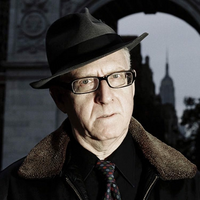
David Lehman (born June 11, 1948 in New York City) is a poet and the series editor for The Best American Poetry series. He teaches at The New School in New York City. Career David Lehman grew up the son of European Holocaust refugees in Manhattan’s northernmost neighborhood of Inwood. He attended Stuyvesant High School and Columbia University, and Cambridge University in England on a Kellett Fellowship. On his return to New York, he received a Ph.D. in English from Columbia, where he was Lionel Trilling’s research assistant. Lehman’s poem “The Presidential Years” appeared in The Paris Review No. 43 (Summer, 1968) while he was a Columbia undergraduate. His books of poetry include New and Selected Poems (2013), Yeshiva Boys (November 2009), When a Woman Loves a Man (2005), The Evening Sun (2002), The Daily Mirror (2000), and Valentine Place (1996), all published by Scribner. Princeton University Press published Operation Memory (1990), and An Alternative to Speech (1986). He collaborated with James Cummins on a book of sestinas, Jim and Dave Defeat the Masked Man (Soft Skull Press, 2005), and with Judith Hall on a book of poems and collages, Poetry Forum (Bayeux Arts, 2007). Since 2009, new poems have been published in 32 Poems, The Atlantic, The Awl, Barrow Street, The Common, Green Mountains Review, Hanging Loose, Hot Street, New Ohio Review, The New Yorker, Poetry, Poetry London, Sentence, Smartish Pace, Slate, and The Yale Review. Lehman’s poems appear in Chinese in the bilingual anthology, Contemporary American Poetry, published through a partnership between the NEA and the Chinese government, and in the Mongolian-English Anthology of American Poetry. Lehman’s work has been translated into sixteen languages overall, including Spanish, French, German, Danish, Russian, Polish, Korean and Japanese. In 2013, his translation of Goethe’s “Wandrers Nachtlied” into English appeared under the title “Goethe’s Nightsong” in The New Republic, and his translation of Guillaume Apollinaire’s “Zone” was published with an introductory essay in Virginia Quarterly Review. The translation and commentary won the journal’s Emily Clark Balch Prize for 2014. Additionally, his poem, “French Movie” appears in the third season of Motionpoems. Lehman is the series editor of The Best American Poetry, which he initiated in 1988. Lehman has edited The Oxford Book of American Poetry (Oxford University Press, 2006), The Best American Erotic Poems: From 1800 to the Present (Scribner, 2008), and Great American Prose Poems: From Poe to the Present (Scribner, 2003). He is the author of six nonfiction books, including, most recently, A Fine Romance: Jewish Songwriters, American Songs (Nextbook, 2009), for which he received a 2010 ASCAP Deems Taylor award from the American Society of Composers, Authors and Publishers. Sponsored by the American Library Association, Lehman curated, wrote, and designed a traveling library exhibit based on his book A Fine Romance that toured 55 libraries in 25 states between May 2011 and April 2012 with appearances at three libraries in New York state and Maryland. In an interview published in Smithsonian Magazine, Lehman discusses the artistry of the great lyricists: “The best song lyrics seem to me so artful, so brilliant, so warm and humorous, with both passion and wit, that my admiration is matched only by my envy... these lyricists needed to work within boundaries, to get complicated emotions across and fit the lyrics to the music, and to the mood thereof. That takes genius.” Lehman’s other books of criticism include The Last Avant-Garde: The Making of the New York School of Poets (Doubleday, 1998), which was named a "Book to Remember 1999" by the New York Public Library; The Big Question (1995); The Line Forms Here (1992) and Signs of the Times: Deconstruction and the Fall of Paul de Man (1991). His study of detective novels, The Perfect Murder (1989), was nominated for an Edgar Award from the Mystery Writers of America. A new edition of The Perfect Murder appeared in 2000. In October, 2015, he published Sinatra’s Century: One Hundred Notes on the Man and His World. Lehman worked as a free-lance journalist for many years. His by-line appeared frequently in Newsweek in the 1980s and he has written on a variety of subjects for journals ranging from the New York Times, the Washington Post, People, and The Wall Street Journal to The American Scholar, The Academy of American Poets, National Public Radio, Salon, Slate, Smithsonian, and Art in America. The Library of Congress commissioned an essay from Lehman, “Peace and War in American Poetry,” and posted it online in April 2013. In 2013, Lehman wrote the introduction to The Collected Poems of Joseph Ceravolo. He had previously written introductory essays to books by A. R. Ammons, Kenneth Koch, Philip Larkin, Alfred Leslie, Fairfield Porter, Karl Shapiro, and Mark Van Doren. In 1994 he succeeded Donald Hall as the general editor of the University of Michigan Press’s Poets on Poetry series, a position he held for twelve years. In 1997 he teamed with Star Black in creating and directing the famed KGB Bar Monday night poetry series in New York City’s East Village. Lehman and Black co-edited The KGB Bar Book of Poems (HarperCollins, 2000). They directed the reading series until 2003. He has taught in the graduate writing program of the New School in New York City since the program’s inception in 1996 and has served as poetry coordinator since 2003. In an interview with Tom Disch in the Cortland Review, Lehman addresses his great variety of poetic styles: “I write in a lot of different styles and forms on the theory that the poems all sound like me in the end, so why not make them as different from one another as possible, at least in outward appearance? If you write a new poem every day, you will probably have by the end of the year, if you’re me, an acrostic, an abecedarium, a sonnet or two, a couple of prose poems, poems that have arbitrary restrictions, such as the one I did that has only two words per line.” At the request of the editors of The American Scholar, Lehman initiated “Next Line, Please,” a poetry-writing contest, on the magazine’s website. The first project was a crowd-sourced sonnet, “Monday,” which was completed in August 2014. There followed a haiku, a tanka, an anagram based on Ralph Waldo Emerson’s middle name, a couplet (which grew into a “sonnet ghazal”), and a “shortest story” competition. Lehman devises the puzzles—or prompts—and judges the results. Lehman has been awarded fellowships from the Guggenheim Foundation, the Ingram Merrill Foundation, and the NEA, and received an award in literature from the American Academy of Arts and Letters and a Lila Wallace-Reader’s Digest Writer’s Award. He has lectured widely in the United States and abroad. Lehman divides his time between Ithaca, New York, and New York City. He is married to Stacey Harwood. Bibliography * works written by David Lehman: * Sinatra’s Century: One Hundred Notes on the Man and His World (2015) * New and Selected Poems (2013) * A Fine Romance (2009) * Yeshiva Boys (2009) * When a Woman Loves a Man (Scribner, 2005) * The Evening Sun (Scribner, 2002) * The Daily Mirror: A Journal in Poetry (2000) * The Last Avant-Garde: The Making of the New York School of Poets (1998) * Valentine Place (1996) * The Big Question (1995) * The Line Forms Here (1992) * Signs of the Times: Deconstruction and the Fall of Paul de Man (1991) * Operation Memory (1990) * The Perfect Murder: A Study in Detection (1989) * An Alternative to Speech (1986) * Beyond Amazement: New Essays on John Ashbery (1980) * works edited by David Lehman: * The Best American Erotic Poems (2008) * The Oxford Book of American Poetry (2006) * A. R. Ammons: Selected Poems (2006) * Great American Prose Poems: From Poe to the Present (2003) * Ecstatic Occasions, Expedient Forms: 85 Leading Contemporary Poets Select and Comment on Their Poems (1987, expanded 1996) * The Best American Poetry with guest editors: * Terrance Hayes (2014), Denise Duhamel (2013), Mark Doty (2012), Kevin Young (2011), Amy Gerstler (2010), David Wagoner (2009), Charles Wright (2008), Heather McHugh (2007), Billy Collins (2006), Paul Muldoon (2005), Lyn Hejinian (2004), Yusef Komunyakaa (2003), Robert Creeley (2002), Robert Hass (2001), Rita Dove (2000), Robert Bly (1999), John Hollander (1998), James Tate (1997), Adrienne Rich (1996), Richard Howard (1995), A.R. Ammons (1994), Louise Glück (1993), Charles Simic (1992), Mark Strand (1991), Jorie Graham (1990), Donald Hall (1989) and John Ashbery (1988). * works written collaboratively: * Poetry Forum: A Play Poem: A Pl’em with Judith Hall (Bayeux Arts, 2007) * Jim and Dave Defeat the Masked Man with James Cummins (Soft Skull Press, 2005) * works edited collaboratively: * The Best of the Best American Poetry: 25th Anniversary Edition with Robert Pinsky (Scribner, 2013) * The KGB Bar Book of Poems with Star Black (HarperCollins, 2000) * The Best of the Best American Poetry, 1988-1997 with Harold Bloom (Scribner, 1998) * James Merrill: Essays in Criticism with Charles Berger (Cornell University Press, 1983) References Wikipedia—https://en.wikipedia.org/wiki/David_Lehman
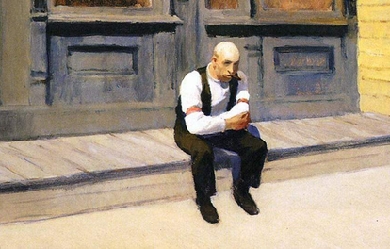
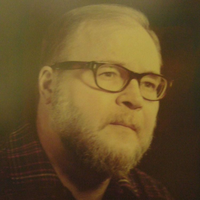
James Arlington Wright (December 13, 1927– March 25, 1980) was an American poet. Life Wright first emerged on the literary scene in 1956 with The Green Wall, a collection of formalist verse that was awarded the prestigious Yale Younger Poets Prize. But by the early 1960s, Wright, increasingly influenced by the Spanish language surrealists, had dropped fixed meters. His transformation achieved its maximum expression with the publication of the seminal The Branch Will Not Break (1963), which positioned Wright as curious counterpoint to the Beats and New York Schools, which predominated on the American coasts. This transformation had not come by accident, as Wright had been working for years with his friend Robert Bly, collaborating on the translation of world poets in the influential magazine The Fifties (later The Sixties). Such influences fertilized Wright’s unique perspective and helped put the Midwest back on the poetic map. Wright had discovered a terse, imagistic, free verse of clarity, and power. During the next ten years Wright would go on to pen some of the most beloved and frequently anthologized masterpieces of the century, such as “A Blessing,” “Autumn Begins in Martins Ferry, Ohio,” and “I Am a Sioux Indian Brave, He Said to Me in Minneapolis.” Wright’s son Franz Wright was also a poet. Together they are the only parent/child pair to have won a Pulitzer Prize in the same category (Poetry). Poetry Wright’s early poetry is relatively conventional in form and meter, especially compared with his later, looser poetry. Although most of his fame comes from his original poetry, Wright made a contribution to another area or literary modernism– the translation. Ezra Pound insisted that translation was in itself an art of the highest creative order. His work with translations of German and South American poets, as well as the poetry and aesthetic position of Robert Bly, had considerable influence on his own poems; this is most evident in The Branch Will Not Break, which departs radically from the formal style of Wright’s previous book, Saint Judas. In addition to his own poetry, he also published loose translations of René Char’s hermetic poems. His poetry often deals with the disenfranchised, or the American outsider. Wright suffered from depression and bipolar mood disorders and also battled alcoholism his entire life. He experienced several nervous breakdowns, was hospitalized, and was subjected to electroshock therapy. His dark moods and focus on emotional suffering were part of his life and often the focus of his poetry, although given the emotional turmoil he experienced personally, his poems can be optimistic in expressing a faith in life and human transcendence. In The Branch Will Not Break, the enduring human spirit becomes thematic. Nevertheless, the last line of his poem “Lying in a Hammock at William Duffy’s Farm in Pine Island, Minnesota” famously ends, “I have wasted my life.” Technically, Wright was an innovator, especially in the use of his titles, first lines, and last lines, which he used to great dramatic effect in defense of the lives of the disenfranchised. He is equally well known for his tender depictions of the bleak landscapes of the post-industrial American Midwest. Since his death, Wright has developed a cult following, transforming him into a seminal writer of significant influence. Hundreds of writers gathered annually for decades following his death to pay tribute at the James Wright Poetry Festival held from 1981 through 2007 in Martins Ferry. His 1972 Collected Poems won the Pulitzer Prize. In addition to his other awards, Wright received a grant from the Rockefeller Foundation. Works Published in his lifetime * Unless otherwise noted, year is when published: * The Green Wall (Yale University Press, 1957) * Saint Judas (Wesleyan University Press, 1959) * The Branch Will Not Break (Wesleyan University Press, 1963) * Autumn Begins in Martins Ferry, Ohio—Broadside (1963) * Shall We Gather at the River (Wesleyan University Press, 1967) * Collected Poems (Wesleyan University Press, 1971) * Two Citizens (Farrar, Straus and Giroux, 1973) * Moments of the Italian Summer (Dryad Press, 1976) * To a Blossoming Pear Tree (Farrar, Straus and Giroux, 1977) * This Journey (1982) Published posthumously * This Journey (1982; completed in 1980) * The Temple at Nîmes (1982) * James Wright, In Defense Against This Exile. Letters To Wayne Burns., edited with an introduction by John R. Doheny (1985) * Above the River - the Complete Poems, introduction by Donald Hall (1992) * Selected Poems (2005) * A Wild Perfection: The Selected Letters of James Wright (2005) * The Delicacy and Strength of Lace: Letters Between Leslie Marmon Silko and James Wright., edited by Anne Wright and Joy Harjo (2009) References Wikipedia—https://en.wikipedia.org/wiki/James_Wright_(poet)

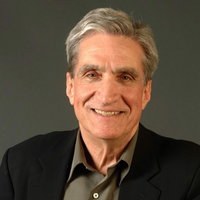
Robert Pinsky (born October 20, 1940) is an American poet, essayist, literary critic, and translator. From 1997 to 2000, he served as Poet Laureate Consultant in Poetry to the Library of Congress. Pinsky is the author of nineteen books, most of which are collections of his poetry. His published work also includes critically acclaimed translations, including The Inferno of Dante Alighieri and The Separate Notebooks by Czesław Miłosz. He teaches at Boston University. Biography Early life and education Pinsky was born in Long Branch, New Jersey to Jewish parents, Sylvia (née Eisenberg) and Milford Simon Pinsky, an optician. He attended Long Branch High School. He received a B.A. from Rutgers University in New Brunswick, New Jersey, and earned both an M.A. and Ph.D. from Stanford University, where he was a Stegner Fellow in creative writing. He was a student of Francis Fergusson and Paul Fussell at Rutgers and Yvor Winters at Stanford. Personal life Pinsky married Ellen Jane Bailey, a clinical psychologist, in 1961. They have three children. Pinsky taught at Wellesley College and at the University of California at Berkeley, and now lives in Cambridge, Massachusetts and teaches in the graduate writing program at Boston University. Career Early on, Pinsky was inspired by the flow and tension of jazz and the excitement that it made him feel. As a former saxophonist, he has said that being a musician was a profoundly influential experience that he has tried to reproduce in his poetry. The musicality of poetry was and is extremely important to his work. Additionally, Pinsky revealed in a 1999 interview with Bomb Magazine that he enjoys jazz for its “physical immediacy, improvisation and also the sense that a lifetime of suffering and study and thought and emotion is behind some single phrase.” Rather than intending to communicate a single or concrete meaning with his work, Pinsky anticipated that his poetry would change depending on the particular subjectivity of each reader. Embracing the idea that people’s individuality would fill out the poem, he has said, “The poetry I love is written with someone’s voice and I believe its proper culmination is to be read with someone’s voice. And the human voice in that sense is not electronically reproduced or amplified; it’s the actual living breath inside a body—not necessarily the second life of reception—not necessarily the expert’s body or the artist’s body. Whoever reads the poem aloud becomes the proper medium for the poem.” Pinsky observes 'the kind of poetry I write emphasizes the physical qualities of the words’ for poetry to Pinsky, is a vocal art, not necessarily performative, but reading to one self or recalling some lines by memory. Pinsky comments ‘all language is necessarily abstract ’ . No aspect of a poem, he observes, is more singular, more unique, than its rhythm, for there are no rules. He received a National Endowment for the Humanities Fellowship in 1974, and in 1997 he was named the United States Poet Laureate and Consultant in Poetry to the Library of Congress, being the first and so far only poet to be named to three terms. As Poet Laureate, Pinsky founded the Favorite Poem Project, in which thousands of Americans of varying backgrounds, all ages, and from every state share their favorite poems. Pinsky believed that, contrary to stereotype, poetry has a strong presence in the American culture. The project sought to document that presence, giving voice to the American audience for poetry. The Shakespeare Theatre of Washington, D.C. commissioned Pinsky to write a free adaptation of Friederich Schiller’s drama Wallenstein. The Shakespeare Theatre presented the play, starring Stephen Pickering in the title role, directed by Michael Kahn, in 2013. Premiering on April 17 of that year, the play had a sold-out run, in repertory with Coriolanus. Pinsky also wrote the libretto for Death and the Powers, an opera by composer Tod Machover. The opera received its world premiere in Monte Carlo in September 2010 and its U.S. premiere at Boston’s Cutler Majestic Theater in March 2011. Pinsky is also the author of the interactive fiction game Mindwheel (1984) developed by Synapse Software and released by Broderbund. Pinsky guest-starred in an episode of the animated sitcom The Simpsons TV show, “Little Girl in the Big Ten” (2002), and appeared on The Colbert Report in April, 2007, as the judge of a “Meta-Free-Phor-All” between Stephen Colbert and Sean Penn. In 2011, Farrar, Straus and Giroux published Selected Poems In 2012, Circumstantial Productions released the CD, PoemJazz, by Robert Pinsky and Laurence Hobgood. Bibliography Poetry Collections * Pinsky, Robert (1975). Sadness and happiness. Princeton UP. * An Explanation of America (1981) Princeton University Press * History of My Heart (1984) Farrar, Straus and Giroux * The Want Bone (1990) Farrar, Straus and Giroux * The Figured Wheel: New and Collected Poems 1966–1996 (1996) Farrar, Straus and Giroux * Jersey Rain (2000) Farrar, Straus and Giroux * Gulf Music: Poems (2007) Farrar, Straus and Giroux * Selected Poems (2011) Farrar, Straus and Giroux Poems Prose * Landor’s Poetry (1968) University of Chicago Press * The Situation of Poetry (1977) Princeton University Press * Poetry and the World (1988) Ecco Press * The Sounds of Poetry (1998) Farrar, Straus and Giroux * Democracy, Culture, and the Voice of Poetry (2002) Princeton University Press * The Life of David (2006) Schocken Books * Thousands of Broadways: Dreams and Nightmares of the American Small Town (2009) University of Chicago Press Libretto * Death and the Powers, an opera by Tod Machover (2010) Interactive fiction * Mindwheel (1984) As translator * The Separate Notebooks by Czesław Miłosz, with Renata Gorczynski and Robert Hass (1984) * The Inferno of Dante: A New Verse Translation (1995) As editor * Handbook of Heartbreak (1998) * Americans’ Favorite Poems: The Favorite Poem Project Anthology, with Maggie Dietz (1999) * Poems to Read: A New Favorite Poem Project Anthology (2002) * An Invitation to Poetry: A New Favorite Poem Project Anthology (2004) * Essential Pleasures: A New Anthology of Poems to Read Aloud (2009) * Singing School: Learning to Write (and Read) Poetry by Studying with the Masters (2014) CDs * PoemJazz (2012) Circumstantial Productions Honors and awards * Premio Capri (Italian) in 2009 * Manhae Foundation Prize (Korean) in 2006 * PEN/Voelcker Award for Poetry in 2004 * Poet Laureate Consultant in Poetry to the Library of Congress (1997–2000) * National Endowment for the Humanities Fellowship (1974) * Stegner Fellowship in Creative Writing at Stanford University * Saxifrage Prize (1980) for An Explanation of America * William Carlos Williams Award of the Poetry Society of America * Nominated for the National Book Critics Circle Award for Criticism (1988) for Poetry and the World * Nominated for the Pulitzer Prize for Poetry (1996) for The Figured Wheel: New and Collected Poems, 1966–1996 * Ambassador Book Award in Poetry of the English Speaking Union * Lenore Marshall Poetry Prize (1997) for The Figured Wheel: New and Collected Poems 1966–1996 * Los Angeles Times Book Award (1994) for The Inferno of Dante * Book-of-the-Month Editor’s Choice (1994) for The Inferno of Dante * Academy of American Poets’ Translation Award (1994) for The Inferno of Dante Notes and references Notes and citations Books and printed materials * The Art of Poetry LXXVI: Robert Pinsky" The Paris Review No. 144 (1997), pp. 180–213 (interview) Online resources * Library of Congress Online Resources * “Modernism and Memory,” Pinsky’s lecture from the 2010 Key West Literary Seminar * “In a deepening room,” ArchitectureBoston Magazine, Summer 2014: Books (Volume 18 n2) External links * Official Robert Pinsky Website * The Favorite Poem Project (with videos) Interviews * The Favorite Poem Project site * Concord Academy 2012 Commencement Address * LA Times story on PEN Center Lifetime Achievement award * Audio, Bruce Springsteen reads “Samurai Song”at Wamfest * The PBS NewsHour 5/20/11 Interview * Newark Star-Ledger Springsteen/Pinsky story * Video, Colbert Report, Pinsky with Sean Penn and Colbert * David Kaufman Review in Tablet * Poet Robert Pinsky Takes on King David in a public radio interview on ThoughtCast! * Robert Pinsky’s interview about his time and inspirations in Maine * Cortland Review Interview with Robert Pinsky * Robert Pinsky, The Art of Poetry No. 76. The Paris Review (144). Interview with Ben Downing, Daniel Kunitz. Fall 1997. * The Life of David. Interview with Michael Silverblatt. December 2005. 'Bookworm’. 'KCRW’. Poetry readings * Pinsky read 'Shirt’ aloud on YouTube * Robert Pinsky reads his poem “Street Music”. * Interview with Robert Pinsky for Guernica Magazine * Watch Robert Pinsky read “Book” at Open-Door Poetry * IPA: Robert Pinsky reads a selection of his poetry * Pinsky poetry readings Other * Essential Pleasures: Robert Pinsky’s column on Poems Out Loud (April 2009) * Boston University Press Release * Modern American Poetry on Robert Pinsky * The Academy of American Poets on Robert Pinsky References Wikipedia—https://en.wikipedia.org/wiki/Robert_Pinsky


